

FREE! VOLUME 40, #2 APRIL 2023 INSIDE: Pull Out and Save! SPECIAL NEEDS Baby Having a 20+ Summer Camps Fun Ways to Celebrate Easter
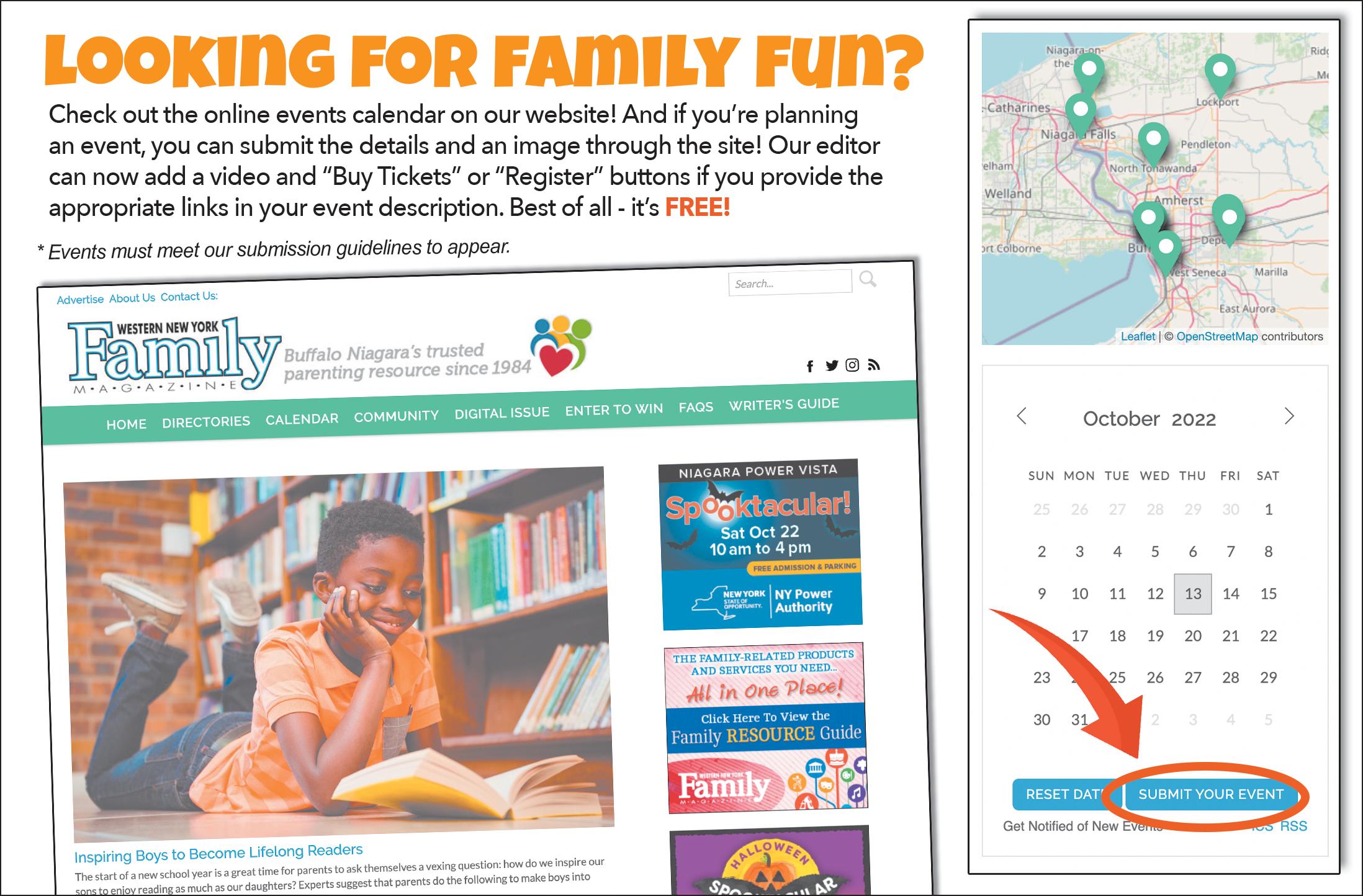
















2 WNY Family April 2023
OWNER/PUBLISHER
Paul M. Kline
ADVERTISING SALES
Paul M. Kline
EDITOR & CONSULTANT
Michele Miller
ADVERTISING DESIGN
Karen Wawszczyk
MAGAZINE LAYOUT/DESIGN
Melanie Schroeder Designs
CONTRIBUTORS
Barbara Blackburn • Donna Phillips
Shannon Carpenter • Deborah Williams
Kathy Lundquist • Mike Daugherty
Meagan Ruffing
Where It’s At! Having a Baby!
Features:
6 n Baby on a Budget: Save a Bundle by Janeen Lewis
8 n American Academy of Pediatrics Calls for More Support for Breastfeeding Mothers
10 n Making the Most of Your Maternity Leave by Kerrie McLoughlin
12 n How to Develop MOMfidence! by Sarah Lyons
Visit Our Web Site www.wnyfamilymagazine.com




To Reach Us:
Advertising Department advertising@wnyfamilymagazine.com
Calendar Submissions calendar@wnyfamilymagazine.com
Subscriptions subscriptions@wnyfamilymagazine.com
Editorial Submissions michele@wnyfamilymagazine.com
MAILING ADDRESS: P.O. Box 1573 Buffalo, NY 14225
Phone: (716) 836-3486
PRINTED BY: Commercial Printing Division
The Post-Journal, Jamestown
WE ARE AN AUDITED PUBLICATION
CIRCULATION (copies printed): 20,000

© 2023 Western New York Family, Inc.
All rights reserved. Reproduction in any form without permission is strictly prohibited. Inclusion of an advertisement does not constitute an endorsement by the publisher.
PRINT SUBSCRIPTIONS: MAILED FIRST CLASS, IN AN ENVELOPE SAME DAY ISSUE IS DELIVERED FROM THE PRINTER: $28 one year, $52 two years, $75 three years. Phone & online orders accepted with credit cards. Gift subscriptions available. Single copies & back issues by mail, $2.50.
IF YOU MOVE: Missed issues will not be replaced if we do not receive an address change before issue mailing date.
Regulars:
5 n Web Finds / What’s New In The Kid Biz
18 n Pick of the Literature by Dr. Donna Phillips
24 n Dear Teacher by Peggy Gisler & Marge Eberts
41 n Family Travel
Northern Pennsylvania by Deborah Williams
44 n Raising Digital Kids
16 n Fun Ways to Celebrate Easter for the Whole Family by Rebecca Hastings

20 n Gardening for Kids by Rebecca Hastings
22 n Try These 12 Easy Ways to Celebrate the Earth by Rebecca Hastings
23 n Spring Has Sprung by Pam Molnar
25 n SPECIAL NEEDS
A Special Pull-Out Section
• Early Signs of Learning Challenges
• Learning Disabilities & ADHD
• Financial Planning for Kids with Disabilities
• Beyond Medication: 5 Aspects ADHD Medication May Not Address in Kids
• 10 Ways to Support Families with Special Needs
• Letting Go of What If?
• I’m Not Special, I’m Tired
58 n The Family Pet
The Tech Revolution Your Children Can’t Afford to Miss –And Neither Can You! by Mike Daugherty
46 n The Daddy Track
Fatherhood Lesson #1: Don’t Make the Alpha Buffalo Angry by Shannon Carpenter
47 n Parent Previews by Kirsten Hawkes
55 n Tweens and Teens
Lessons from the First Job by Katy M. Clark
56 n Single Parenting
Do My Kids Need to Go to Therapy? by Meagan Ruffing
62 n The Kid Friendly Kitchen Pudding Pie by Kathy Lundquist
63 n The Kiddie Gourmet Parkside Meadow by Barbara Blackburn
Directories:
14 n Choosing Childcare
48 n Summer Camps
60 n Wellness Choices
April 2023 WNY Family 3 April 2023 • Volume 40 • Issue 2
/WNYFamily
/WNYFamily /WNYFamily
Find this entire issue online at www.wnyfamilymagazine.com You’ll find FREE courtesy copies of WNY Family at all Buffalo area Wegmans and 300 locations including Public Libraries, Doctors’ Offices, Child Care Centers and many of our advertisers.
for us
Wegmans on the racks where newspapers are sold, even though we are still FREE, or in some stores, on the FREE rack in the store
(Look
INSIDE
foyer.)






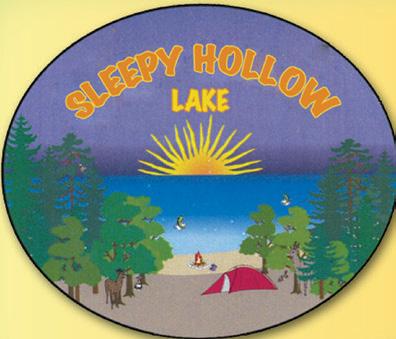









4 WNY Family April 2023 Enjoy all the famous Buffalo fare like Wings, Beef on Weck, Fish Fry & more in an old Buffalo Museum setting. HOURS: Wednesday & Thursday: 4:00pm - 8:30pm Fridays & Saturdays: 4:00pm – 9:00pm Just a short walk from the Darwin Martin House and across the street from the Buffalo Zoo. 2 Russell Street • Buffalo, NY 14214 716.834.8348 ParksideMeadow.com Camping & RV Park 30/50 Amp Pull Through & Back In Sites Playground Beach Saltwater Pool • Laundry Activities and more RV • Tent • Motorhome • Park Model Rentals Located Between Buffalo & Rochester Weekly Specials www.sleepyhollowcamp.com 716.542.4336 Greater Niagara Region SOUTH BUFFALO CHARTER SCHOOL is a Grade K - 8 School of Excellence South Buffalo Charter School 154 South Ogden Street • Buffalo, NY 14210 716-826-7213 www.southbuffalocs.org OPEN ENROLLMENT ends on April 1, 2023. If you are looking to find a great school for your son or daughter you have found it at SBCS. Enroll online at southbuffalocs.org, Admission and Enrollment tab. We offer a tuition free education, transportation for all students as well as Special Education and ENL services. Call today for a free tour.
When April arrives, we’re thrilled to finally see the first signs of spring. Here are a few crafts to get you in the mood for better weather!
POM POM CATERPILLARS
The beautiful butterflies we see fluttering around spring flowers develop from certain types of caterpillars. Read a book with your kids about how that happens, then help them create their own caterpillar from colorful pom poms. Besides pom poms, all you need is green craft paper for the leaves, small googly eyes, scissors, glue, and a hole punch – to make it look like the caterpillars are eating the leaves. Draw your own leaf freehand, or download a free template and see complete instructions at: https://www.mommymadethat.com/pom-pom-caterpillar-craft/
TULIP CARD

Welcome spring by learning how to make these paper tulips, which can also be turned into a Mother’s Day card for Mom or Grandma by composing your own verse to write inside. The “3D” tulip is made from several identical tulip shapes laid on top of one another and creased down the middle. A very detailed tutorial plus a free template is offered with all the pieces you need at https://www. easypeasyandfun.com/tulip-card/
MILLENNIAL PARENTS UNDER PRESSURE TO BE PERFECT
A new year-long study based on more than 200 hours of face-to-face interviews and a survey of 2,000 parents in both the U.S. and the U.K. was published in March. Titled “Raising Gen Alpha: How Millennial Parenting is Impacting the Next Generation,” it focuses on Millennials who are now ages 27-40 who have become parents and are now raising their own Gen Alpha kids (those born since 2010) very differently from the style of their own Generation X parents.
Helen Gilmour, Director of Insight and Strategy, of Beano Brain, the company behind the study, says, “What is abundantly clear from this, our latest dive into Generation Alpha, is that Millennials – a much maligned and parodied generation – are stepping into the role of parents with the planning, purpose and the professionalism they apply to their next career move.
COFFEE FILTER BUTTERFLIES
Speaking of butterflies, make these colorful critters by dipping paper coffee filters in diluted food coloring, dabbing with bingo markers, or washable markers. Once dry, accordion fold or simply gather at the center and secure with a pipe cleaner, bent at the top to create antennae. For a complete tutorial, visit https://www.firstpalette.com/craft/coffee-filterbutterflies.html

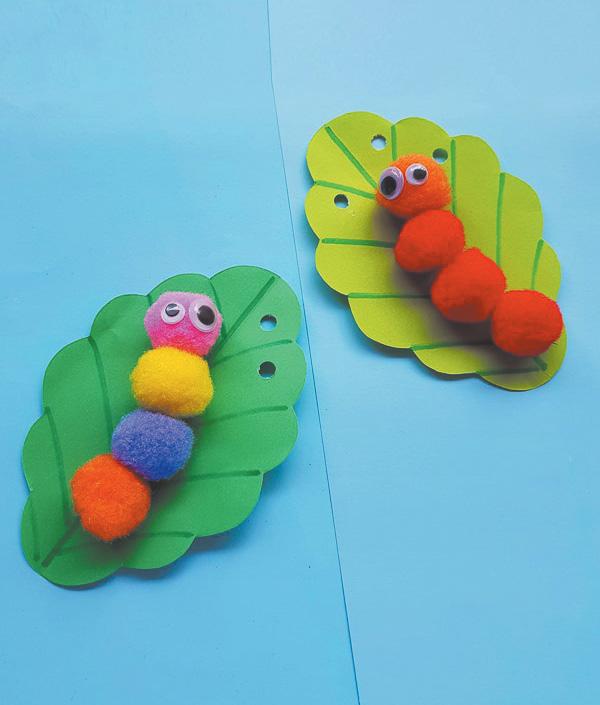
FLOWERS IN A WATERING CAN
This craft is better suited to older kids and sophisticated enough for grownups to get excited about since it includes quilled flower parts! Just substitute fancier scrapbook paper for the watering can and flowers if you want to upgrade the look; glue to Styrofoam and turn it into a door or wall decoration! You’ll find the tutorial at https:// www.mommymadethat.com/paper-quill-flowers-watering-can/ and the printable template for the pieces at https://www.mommymadethat. com/crafty-resource-library/. (The template wasn’t directly on the page and we had to search for it – a strange setup, in our opinion, but we liked it enough to figure out where it was!!)
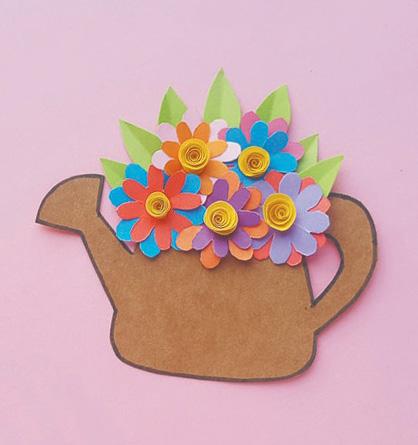
“However, this laser focus and determination to be the best parent is bringing with it unique pressures. Millennials are really the first generation to raise their children in the full glare and judgement of social media. And there is an overwhelming feeling of parenting under pressure, subject to the scrutiny of others in real life or by comparison on social media.”
As Millennial parents reflect on missed moments that took place in their own childhood homes, they are eager to ensure they are present in all areas of their child’s life — 77% of parents are prioritizing time with the children over careers.
Additionally:
• 65% of Millennial parents feel that their children don’t have the freedom to roam as they did as a child.
• 55% fear the negative influences of social media.
• 75% of Millennial parents are trying to keep their children off social media for as long as possible.
• 81% of Millennials think it’s more important to be happy than to be “successful.”
• 57% of Millennial parents believe that schools are not preparing children to be citizens of the future.
April 2023 WNY Family 5 What’s New... IN THE KIDBIZ web.finds
Baby on a Budget Save a Bundle
— by Janeen Lewis
Congratulations! You either have a new bundle of joy or will bring one home soon. Having a baby is such an exciting time, but it can feel a bit stressful, too. With all there is to learn and prepare for, finances shouldn’t get in the way. Here’s thrifty advice for every stage of bringing home a baby.

Before Baby
Budget early. The secret to saving and finding the best deals on quality items is planning, researching, and comparing prices. Estimate costs you might incur and write a spending plan. While everything won’t unfold as expected, some things may work out better. If the stork sneaks up on you, start planning as soon as possible.
Review Health Insurance and Savings Plans. Choose a plan in which the premium to deductible ratio is the best price and value for pregnancy and childbirth care. Most health insurance policies cover the cost of breast pumps. Make sure yours does. If you have disability insurance, it may pay for maternity leave. Most importantly, start saving. Savings give a sense of peace and keep the focus on the baby in your arms instead of on financial burdens.
“Flex” financial muscles. Check to see if your employer offers a Flexible Spending Account or Health Savings Account. These pre-tax dollars
can be used to buy prenatal vitamins, breast pumps, breast milk storage bags, thermometers, and more. While you can purchase over-the-counter baby pain relievers, teething gel, and fever reducers with an FSA or HSA, check with your insurance company. Some require prescriptions for over-the-counter medications.
Calculate the cost of different types of child care. Think about which option of childcare makes the most sense for your family — staying at home with baby, a daycare facility, nanny, or nanny share. Research the costs associated with these options. The U.S. Department of Health and Human Services considers childcare affordable when it accounts for no more than 7 percent of a family’s household income. Try to keep your child care costs within that range.
During The Pregnancy
Create a chic nursery without the designer price tag. You don’t have to be a celebrity to design a beautiful nursery. Start with a safetyapproved crib and add another desirable piece. This is what Emily Zolan did. Zolan is mom to Julia, 2, and Anna Katherine, 6 months. “I researched and found a particular crib that I knew was safe,” Zolan said. “I found it on Facebook
Marketplace for $200 when it is usually $1,000. Then I got a glider from Costco.” Zolan recommends buying a nice rocker. “You are going to be sitting in the nursery a lot, so you want to love it.”
Register and be rewarded. Create a baby registry at Amazon, WalMart, Target, or Buy Buy Baby and receive free baby goodies and other perks like coupons and discounts on the items left unpurchased on your registry. The free gifts usually include samples of products you can try out when the baby arrives. You can decide what works best before you spend money on baby items you won’t use. “Be choosy with your registry,” Zolan suggests. “People naturally like to give sweet baby clothes and fun gifts. Pare down your registry to the necessities, and you may still get the fun, cute things you want.”
Spend modestly on maternity clothes. You’ll only be wearing them a for a few months. Budget more for maternity clothes for work than for working out. Buy staple pieces that can function for different events and activities. You can also find maternity clothes at some children’s consignment stores. For lounging around the house, baggy sweats and t-shirts are comfortable.
After The Arrival
Don’t let diapering a bottom affect your bottom line. If friends ask to give you a shower, consider having a diaper shower or make a diaper raffle part of a shower. Guests who bring a package of diapers in addition to their gift are included in a drawing for a prize. Amazon has a group gifting feature that allows expectant moms to set up a diaper fund. Friends and family give to the fund and the money is loaded on to the expectant parents’ gift card balance.
Sikedra Lamar, mom to 21-monthold Ailani, uses this strategy. “I like the diaper fund because I can buy diapers as I need them,” Lamar says. Brooke Norris, mom to two-year-old Wyatt and oneyear-old Sadie, suggests having shower guests put a sticky note on diaper gifts labeling where the diapers were pur-
6 WNY Family April 2023
chased in case you need to return for a different size. “Target may have a 96 pack of Huggies and Ingles sells a 92pack, so you can’t return diapers to any store.”
Disposable diapers like organic, plant-based or chlorine-free can be pricey. Try a diaper subscription to cut down on costs if you want these specialty diapers.
It’s okay to be frugal when it comes to formula. Breast milk is free and has tremendous nutritional benefits, but it doesn’t work out for every mom. Save on formula without skimping on what your baby needs. If you buy a name brand, go to the company website and sign up for coupons and online deals. Ask your doctor for free samples and ask other moms for samples they don’t want. Keep in mind that all baby formula sold in the United States is regulated by the Food and Drug Administration to meet certain nutritional requirements.
Norris discovered this with her second child. “As first-time parents, we were nervous so we paid more for the name brand,” Norris says. “I talked to my pediatrician, and we used store brand with our second child, and she’s been fine.” Norris says she did a side-by-side comparison of the name brand formula with a store brand. “They both had the same ingredients.”
Check out consignment sales and stores. The beautiful thing about consignment is that you can get designer and name brand clothes, gear, furniture, and toys at a fraction of the original cost. Baby items are outgrown so quickly that they are usually in good shape even if they are used. And once your baby is finished with an item, you can consign it. Consignment shops usually let patrons choose to receive cash or store credit for the items they sell, and sweeten the pot by giving a higher amount for in-store credit.
Find high-end baby clothing on the cheap. Wait until the end of the season and buy for the next year to get upscale or designer clothing at rock
bottom prices. If your child outgrows the size you buy before the next year, you can always consign the items or regift to another expectant parent. Check out Facebook Marketplace to buy boutique baby clothes for less.
Swap babysitting. Even the cost of paying a neighborhood teen has increased dramatically. Trade babysitting with another couple and you can still enjoy a night on the town without the expense of child care. This also helps your baby to feel comfortable with other adults, which can be a game changer in case of an emergency if you don’t have family that lives close by.
Invest in an item that’s worth the splurge. You’re more likely to stick to your budget if you don’t feel deprived. With a smart financial plan in place, pick out an extravagant or convenient, time-saving item like a car seat stroller combo, a bottle warmer, monogrammed diaper bag or a kids’ sound machine. “The Baby
Brezza is amazing,” Lamar says. This product works like a Keurig but with formula. Norris loves the Owlet, a sock baby monitor. Parents track their baby’s sleep patterns on their smart phone. Norris says it gives her peace of mind.
“When Sadie had RSV (Respiratory Syncytial Virus), I knew she was breathing fine.”
Zolan recommends Magnetic Me, baby clothing that comes with magnetic fasteners instead of snaps. “It makes dressing a baby faster,” she says. “When they are little, they don’t like to get cold.”
Babies don’t have to break the bank. With a specific savings plan, you can save a bundle without skimping on the things you love.
Janeen Lewis is freelance writer with a degree in journalism from Eastern Kentucky University. She has had more than 300 articles published in parenting magazines across the country.
More Ways To Save
If you are looking for additional ways to cut costs, remember little things add up and these ideas can bring big savings over time.
Don’t remove tags. If you don’t use something or it doesn’t fit, you may be able to take it back or consign it for a higher price.
Buy gear that grows with your baby.
Invest in a battery charger and rechargeable batteries.
Don’t buy shoes until your baby walks.
Buy diaper pails that use any trash bag or throw diapers away in a trash can with a lid. Specialty diaper pail bags are more expensive.
Buy gender neutral if you plan to have more than one child.
Buy diapers, formula and wipes in bulk at a wholesale warehouse club.
Don’t buy a lot of bottles until after baby arrives. You don’t know what the baby will prefer.
Breastfeed or pump if you are able to.
Make your own baby food.
Host a swap party.
Check out freecycle.com, a place to give away or find items you need for free.
April 2023 WNY Family 7
The American Academy of Pediatrics recommends exclusive breastfeeding of infants for the first six months of life before introducing nutritious complementary foods, while encouraging social and systemic changes to support mothers who choose to breastfeed.
The AAP outlines its recommendations and evidence of significant health benefits to infant and mother within an updated policy statement and technical report, both titled, “Breastfeeding and the Use of Human Milk” published in the July 2022 issue of Pediatrics and available online. The updates include a recommendation to support parents who choose to breastfeed their infant to age 2 and beyond.
“Human milk is all a baby needs for the first six months of life,” said Joan Younger Meek, MD, MS, RD, FAAP, FABM, IBCLC, lead author of the reports, written by the AAP Section on Breastfeeding. “Breast milk is unique in its nutrients and protective effects, and really quite remarkable when you look at what it does for a child’s developing immune sys-
American Academy of Pediatrics Calls for
More Support for Breastfeeding Mothers
Within Updated Policy Recommendations
tem. Not everyone can breastfeed or continue breastfeeding for as long as desired for various reasons, including workplace barriers. Families deserve nonjudgmental support, information and help to guide them in feeding their infant.”
Research has shown that breastfeeding is linked to decreased rates of lower respiratory tract infections, severe diarrhea, ear infections, and obesity. Breastfeeding is associated with lower risk of sudden infant death syndrome, as well as other protective effects.
The AAP recommends:
Exclusive breastfeeding for the first 6 months. There is no need to introduce infant formula or other sources of nutrition for most infants. Beyond 6 months, breastfeeding should be maintained along with nutritious complementary foods.

AAP recommends that birth hospitals or centers implement maternity care prac-
tices that improve breastfeeding initiation, duration, and exclusivity.
There are continued benefits from breastfeeding beyond 1 year, and up to 2 years especially in the mother. Long-term breastfeeding is associated with protections against diabetes, high blood pressure, and cancers of the breast and ovaries.
Mothers who choose to breastfeed beyond the first year need support from their medical care providers, as well as protections against workplace barriers.

Policies that protect breastfeeding, including universal paid maternity leave; the right of a woman to breastfeed in public; insurance coverage for lactation support and breast pumps; on-site child care; universal workplace break time with a clean, private location for expressing milk; the right to feed expressed milk; and the right to breastfeed in child care centers and lactation rooms in schools are all essential to supporting families in sustaining breastfeeding.
“The AAP views breastfeeding as a public health imperative and also as an equity issue,” said Lawrence Noble, MD, FAAP, FABM, IBCLC, co-author of the policy statement and
8 WNY Family April 2023
AAP identifies stigma, lack of support and workplace barriers as obstacles that hinder continued breastfeeding
technical report, which details the evidence that supports human milk feeding. “Pediatricians and other medical professionals can help mothers meet their intended goals for breastfeeding and provide care that is inclusive, equitable, and culturally sensitive.”

White, Hispanic or Latino and Asian families initiate breastfeeding at higher rates than the Black population in the United States, according to the 2018 National Immunization Survey (NIS) of the Centers for Disease Control and Prevention. Similar disparities are also seen among mothers with low income (participants in the Special Supplemental Nutrition Program for Women, Infants, and Children [WIC]); younger women (younger than 20 years); and those with a high school education or less. The policy statement calls for addressing implicit bias, structural bias, and structural racism to eliminate disparities in breastfeeding and improve the health and well-being of all children and families.


The policy also notes that children of gender-diverse parents may have less access to human milk because of both social and biological constraints. When working with gender-diverse families, AAP suggests asking families what terms they use and that the term “chestfeeding,” may be more accurate and inclusive as it concerns lactation and physiology in genderdiverse families.”

“Breastfeeding can be challenging for new parents, and support from their families, doctors and work places is essential,” Dr. Meek said. “The health benefits are vast and can be viewed as a long-term investment not only in a child’s development, but to public health as a whole.”
The American Academy of Pediatrics is an organization of 67,000 primary care pediatricians, pediatric medical subspecialists and pediatric surgical specialists dedicated to the health, safety and well-being of infants, children, adolescents and young adults.






April 2023 WNY Family 9
Specializing in ... • Marriage & Relationships • Infidelity • Infertility • Parenting & Coparenting • Grief & Loss • Anxiety & Depression orTelehealth in counselingperson available. You’re NOT alone www.auduboncounseling.com * Groups Forming in 2023 4800 N. French Rd. • East Amherst, NY 14051 716-725-7158 NEW LOCATION! www.CareConnectionOnline.com Lactation Support, Classes, Breast Pumps & more, covered through insurance. Visit our new RETAIL store for all of your breastfeeding needs. NEW address: 1360 North Forest Rd., Suite 111 Williamsville, NY 14221 716-725-6370 Lactation Support, Classes, Breast Pumps & more, covered through insurance. From WNY Family Magazine
Many moms will tell you they think working a fulltime job is easier than being a full-time stay-at-home mom. As a guest blogger at ScaryMommy.com so eloquently put it, “I want to go back to work. Not because I don’t love my oneyear-old but because I want to escape him… rather than obsess over the nutritional content on his high-chair tray. Rather than watch the Wiggles for one more minute.”
Allison Hahn, Psy.D. shares, “When you come back from the hospital beginning maternity leave, initially it is an overwhelming experience in terms of how little you actually know, regardless of how informed you thought you were, about caring for a newborn.” She continues, “What can be particularly shocking for professional moms is how little they get done during a day. The typical thought is ‘I have the whole day at home for several weeks? I’ll get that re-fi completed, get the shed painted, write that novel and keep the house spotless.’ It is shocking to realize that you get NOTHING accomplished…”
It’s important to realize you’re not alone. There are some great Facebook groups where you can find like-minded mamas who are going through what you are experiencing. Some are dreading going back to work, while some are anxious to get back to the comfort zone of their
Making the Most of Your Maternity Leave

out of the house every day, even if it was just to walk up the street with the baby in the stroller to treat myself to a fancy coffee.” It’s nice to be able to go to bed and know that every morning you’ll be waking up to a hot pot of coffee and a cup of yogurt with your favorite granola and that no matter what the baby does, you will still be able to enjoy these things! You might also think about scheduling some time out of the house at the same time on the same day of the week EVERY week (even after you go back to work).
full-time job. Some must go back to work for financial reasons, while some gain most of their fulfillment from their work.
To get out of nonstop Baby Mode, hook up with your current mama pals or with new ones you meet through local activity calendars you can find online and in your local parenting magazine.

If your sleep-deprived brain can’t figure out a place to go during cold weather with your baby, check out fast food restaurants with indoor play areas; community centers, churches, malls or gyms with set playtimes; or trade off meeting at a friend’s house.
Of course, we all know these playdates aren’t for your teeny new sidekick, but for you! Keep the diaper bag stocked at all times so you can bolt whenever you start feeling cooped up. Likewise, keep the stroller or sling in the car so you have one less thing to think about.
Forging a routine might help when things seem out of control, especially if you have an older child at home during this time, as well. Jill Connors, pregnant mom of four, says, “It helped me to get
I quickly discovered that multitasking comes in just as handy at home with a new baby as it does at work. Strap the baby to your chest in a safe sling or carrier and start folding laundry while you return a phone call. And when you’ve had just about enough baby bodily fluids for any sane person to handle, realize that it’s not forever.
Alyssa Ast of TheWMParentingConnection.com says, “Although you may be going stir crazy to get out of the house while on maternity leave, enjoy every moment while you can because after you’re back at work you’ll be wishing you were at home with your baby.” Depending on your experience and your personality, at the end of your maternity leave you may be crying, “Get me out of here!” or you may be lamenting, “I don’t want to go back to work!” Either way, know that your child will be fine in the long run.
Take a look around you at all the adults you know. Then ask yourself if you can tell who had a stay-at-home mom and who had a working mom? Probably not, so don’t waste a second on guilt during one of the most special times of your life.
10 WNY Family April 2023
Kerrie McLoughlin is a mom of 5 who blogs at TheKerrieShow.com.
— by Kerrie McLoughlin













































































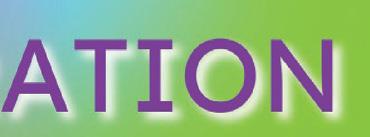




















































April 2023 WNY Family 11 Also specializing in: • Webster Technique for Pregnancy • Children • Athletic Injuries • Auto/Work Injuries • Graston Technique • Flexion/Distraction Technique General Family Practice Call for an appointment Dr. David Lewis ~ Dr. Emily Patrick 716-633-2036 | www.MainChiropractor.com 4440 Shimerville Rd., Clarence, NY 14031 Clarence Chiropractic
— by Sarah Lyons
MOMfidence! How to Develop
Parents begin preparing for a new baby’s arrival from the moment they receive a positive pregnancy test. They research car seats and baby gear, prepare the nursery, and read books on baby care. No matter how much you do prior to birth, nothing can truly prepare you for the exciting and overwhelming moment when you bring the baby home from the hospital for the first time and realize you are responsible for a beautiful tiny person. Even experienced moms may feel overwhelmed as they add another family member to an already busy household.
Over time, mothers can build their confidence or “momfidence” and feel more comfortable taking care of their children. Here are some tips to help you feel more comfortable and confident as a mom.
Bond with Baby
Simply spending time with your baby one-on-one will help you build confidence. You are capable of feeding, changing, loving, and caring for your baby’s needs. As you get more experience, give yourself a pat on the back. You were chosen to be the mother of your baby and you are the perfect person for the job.
Trust Your Instincts
Many new moms feel like they are flooded with unsolicited advice that is sometimes helpful and sometimes not. Learn to trust your instincts when it comes to advice. Well-meaning advice

from your great-aunt who raised kids in the 1950’s is likely to be outdated. Only you and your partner can decide what is best for your child’s individual needs.
When in doubt, consult your pediatrician; they are happy to answer questions, especially from new parents. Abby Vanden Hull, mom of four, suggests surrounding yourself with people that can support and cheer you on. “Finding online groups for people in the same stage of life helps on the days when I am feeling down and alone because it’s always there when I pick up my phone.”
Practice Self Care
It’s no surprise that new moms are often exhausted, forget to eat and drink, put others’ needs before their own, and feel they don’t even have time to wash their hair. A nap, shower, and a decent meal can do wonders for your attitude and outlook. If needed, ask your significant other, family member, or friend to watch the baby for a few minutes while you take care of your own needs. You will be surprised at how relaxed and confident you feel when you return to care for your children.
Don’t Compare
Comparison is an easy pitfall for most parents. Do your best not to compare your children to others around you or on social media. Every child develops at their own pace and has their own strengths and challenges to overcome. Similarly, each mom will parent differently and have individual values,
strengths, and weaknesses to overcome as well.
Mom of three, Jessica Kendall says, “Be true to who you are, your time constraints, your interests, and your kiddos’ needs. Forget the rest.” Figure out what is important to your family. What are your values? What are your pet peeves? What helps your household run smoothly? What things can you let go of? No family will have the same dynamic and that is perfectly okay. Taking stock of what is truly important to you and your family will help you adjust accordingly and feel more confident in your parenting skills.
Be Kind to Yourself
I woke up with a start and heard my baby screaming from his room. Exhausted from a series of sleepless nights, I had fallen asleep on the couch during his nap and forgot to turn on the baby monitor. I rubbed the fog from my eyes and raced to his bedside. It was clear he had been crying awhile and I felt like a terrible mom.
Even when moms have the best intentions, they make mistakes. Be kind to yourself and don’t beat yourself up. Maybe you will forget to buy diapers, skip a bath, have to let them cry while you tend to another child, and they will have normal bumps and bruises. Just because you make mistakes in parenting, does not mean you are a bad mom.
Parenting is a job that is always changing. As soon as you develop a routine and things calm down, your child develops a new skill, a new challenge arises, or your situation changes. With each developmental milestone, give yourself a pat on the back. You are a wonderful, confident mother and you deserve to celebrate alongside your child. Parenthood is the most overwhelming and rewarding job you will ever have and over time you will develop “momfidence” in your skills as a mom.
12 WNY Family April 2023
Sarah Lyons is a freelance writer and mom of six kids including triplets. She enjoys reading, cooking and spending time outside with her family.

































April 2023
Choosing Childcare

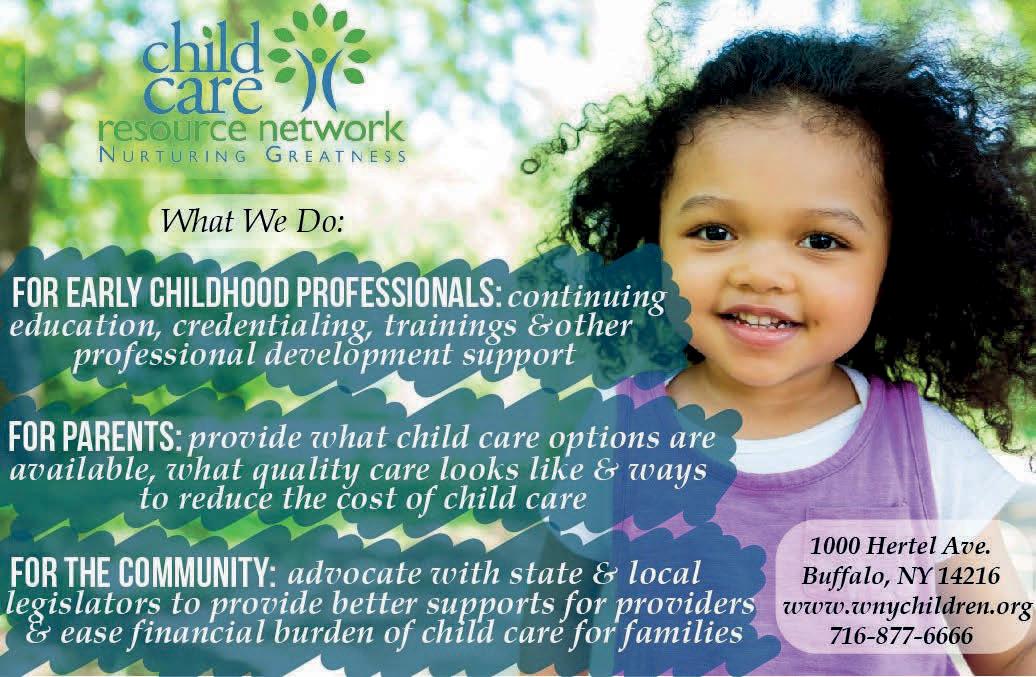












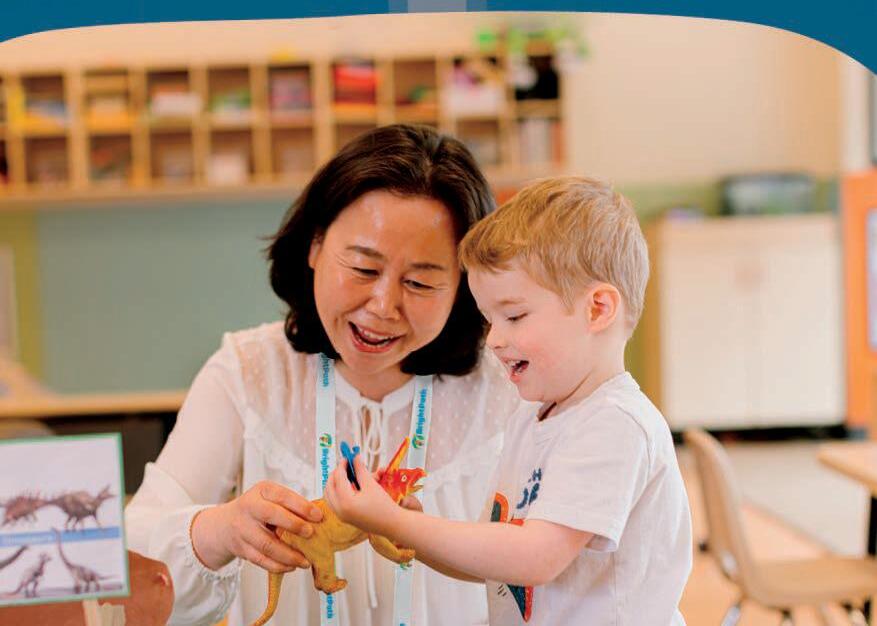




14 WNY Family April 2023
Your Guide to A Special Section Dedicated To Helping Parents Find Quality Care To Fit Their Family’s Unique Needs

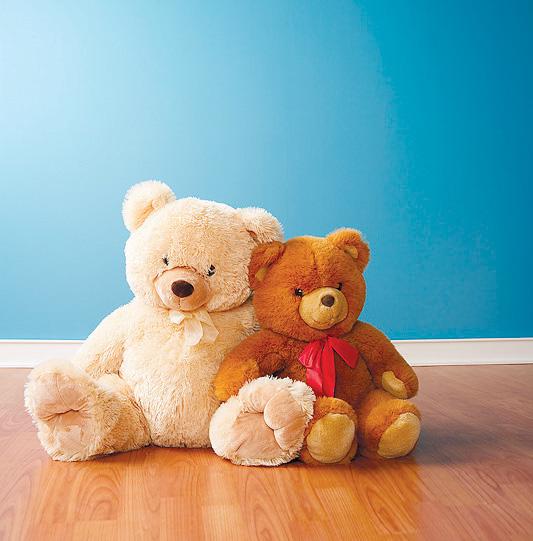































April 2023 WNY Family 15 Did you know… Did you know… 31% of our 55,000 readers will be looking for Childcare Services in the next 12 months? Showcase your Center & increase enrollment with our Choosing Childcare section! Source: Circulation Verification Council Audit, June 2020 To advertise in our call 836-3486 Choosing Childcare Section Roots of the Future Montessori Pre-K and Kindergarten 8970 Main Street, Clarence, NY 716-545-8048 www.rootsofthefuture.com Enroll for 2024-25 Ages 2.9 - 6 Call for a tour! Registration Now Underway for 2023 - 2024 2-Year-Old Preschool Classes M/W or T/TH 3-Year-Old Preschool Classes T/TH or M/W/F 4-Year-Old Kindergarten Readiness Class M/W/F or M-F 4 ½ & 5-Year-Old Pre-K+ M-F Parent’s Day Out 22 Months and Up www.page1preschool.com H Accepting children 6wks. - 12yrs., Full & Half Day Programs ~ 7:30am-5:30pm H Certified Teachers & Experienced Caregivers to Promote an Exceptional Learning Environment H Flexible Enrollment to Accommodate Working Parents H Sweet Home UPK Provider since 1998 H Before & Afterschool programs for Sweethome UPK/School age at St. Leo's. Now Enrolling for immediate openings FOUR SEASONS CHILDCARE CENTER & PRESCHOOL LOTS OF GREAT REASONS TO ENROLL AT FOUR SEASONS! www.fourseasonsfamily.com 1639 North french Rd. H Getzville H 716-568-1140 H Quality Preschool Education Enroll Your 3 or 4 Year Old Today! Six Centers Serving Buffalo & Tonawanda ✓ Buffalo Universal Pre-K On-site ✓ Before & After Care Services Available Call 852-8373 Visit us at www.holycrossheadstart.org
Create the Perfect Easter Baskets for Everyone
There are so many fun options for things to include in an Easter basket. Be sure to include a few of the classics, but have fun thinking outside the box — or basket! An especially fun idea is to have something special for the big kids and grownups, too. Here are some ideas to get you started:
The basket: A traditional basket is a good starting place, but you can also think beyond that. There are so many ideas for things to use instead of a standard basket.
Celebrate Easter
Fun Ways to for the Whole Family
Easter egg hunts, coloring eggs, and chocolate bunnies are all things kids look forward to each year for Easter. While these are great ways to celebrate, it can be tricky to think of new things to do. Plus, it shouldn’t only be kids getting in on the fun.
While traditions are great, here are some fun ways to spread the Easter cheer for everyone in the family.
Getting Ready
The holiday doesn’t have to last one day. Instead, you can start building excitement and preparing for the holiday together with these simple ideas.
1) Read all about it! Reading books is a great way to learn about the holiday and build excite ment. Plus, there is something for everyone.
If you want to focus on the faith aspects of the holiday you can try The Story of Easter (under 5), The Berenstain Bears and the Easter Story (ages 5-10), or a Lent study or reading plan on the YouVersion Bible App (tweens and up).
Other fun books for kids are Happy Easter from the Crayons (ages 4-8), How to Catch the Easter Bunny (ages 2-6), and Easter Eggstravaganza Mad Libs (ages 6 and up).


2) Something to wear: Easter is a great time to get dressed up, and everyone can get in on the fun. Make it a special, festive occasion for all ages by encouraging people to wear their Sunday best or follow a theme like florals or spring colors. Instead of picking things out for kids and presenting them on the day of Easter, let them help choose and plan their outfits. Hang it someplace special so they can see it and look forward to wearing it.
3) Spread the joy: In the weeks leading up to Easter, think about how your family can spread joy to others in the community. Kids can color little Easter cards and deliver them to neighbors. Grandparents can make a special spring dessert with grandchildren. Families and teens can serve in a soup kitchen. Make the holiday one to celebrate with the community.
A new pastel sand bucket with a shovel
Easter-themed gift bag
A reusable tote bag
Makeup bag
Upside-down hat
An open umbrella turned upside down
A fun mug
Watering can Jumbo plastic egg
Beach bag
Mason jar
Hatbox
Flowerpot
Build a Lego basket
Mixing bowl
Toy dump truck
Takeout containers
Rain boots
Helmet
Colander
Flowerpot
You can even get crafty and make a basket out of anything from rice cereal to straws. If you want to make a big statement, you can do a family Easter basket out of something larger like a small kiddie pool or sandbox.
Filler: Most baskets have some sort of filler to take up space and feel festive. Many people use plastic Easter grass, but if you are looking for some other op-
16 WNY Family April 2023
—
by Rebecca Hastings
tions, there are plenty of ideas. Environmentally friendly options include:
Tissue paper
Shredded paper
Yarn or felt pom-poms
Inflated mini balloons
Moss
Ribbon
Fresh flowers
Real grass (you can grow your own using wheatgrass)
Edible grass
Shredded coconut
Rafia
Colorful scarves
The basics: Everyone loves the classics. After all, they are classic for a reason. Some of the best things you can include for basics are some sort of Easter eggs, jelly beans, and a chocolate bunny. Then you can build from there.
Fun fillers: Now it’s time to have some fun filling up the Easter baskets! This is where you can customize things for each person by choosing favorite treats and unexpected gifts. Think about what each recipient would enjoy.

Is there a special kind of candy they like?
Do they have a hobby?
What will make them feel special?
When you fill the basket with the recipient in mind, you’re sure to create something they will love! To get you started, here are some ideas that go beyond candy:
Books
Puzzles
Candles
Small craft kits
Flower or vegetable seeds
PlayDoh
Hair clips
Crayons
Mini toys such as Rubik’s Cube or Etch-a-Sketch
Tiny LEGOs
Mini tool kit
Gourmet coffee or tea
Deck of cards
Bubbles
Glow sticks
Chapstick
Gum
Stickers
Bath bombs or bubble bath
Whatever you include, think about the person you are giving it to. Choosing a few special, custom things is far better than filling a basket with trinkets they won’t use or enjoy.
Fun Activities & Games
Easter egg hunts are a tried-andtrue tradition for celebrating the holiday. Sometimes, however, the weather doesn’t cooperate or things don’t work for all ages. Think about who will be celebrating the holiday with you and try these ideas so everyone has a fun way to celebrate.

Traditional Easter Egg Hunt: Hold a traditional hunt by hiding plastic eggs filled with candy outside or around the house. Let kids explore and find their treasures, keeping what they find.
Shared Easter Egg Hunt: Make the hunt feel fair by collecting all eggs and divvying up the candy equally at the end. This allows kids to still hunt for eggs but evens the playing field. This can be especially important if you have different ages.
Buddy Easter Egg Hunt: Pair a little one with a teen or adult to hunt for
eggs. This is a great way to get everyone involved in the fun.
Scavenger Hunt: Instead of hunting for eggs, try having a scavenger hunt that leads to a prize or their Easter basket. For young children, the clues can be pictures or things they need to collect. For older kids and adults, you can find clues online or write your own. You can even expand this idea into the community by having a scavenger hunt that requires finding things in the neighborhood.
Easy Indoor Activities
If you’re stuck inside on Easter, you’ll need some simple things to help you have fun. Here are some easy ideas, perfect for indoors:
Tic-Tac-Toe: Using graham crackers and icing, create a tic-tac-toe board. Then use jellybeans to play.
Bake Off: Create a score sheet to rate each of the desserts and see which one gets the most votes. Give a prize to whoever made the winning dessert.
Resurrection Eggs: Try using these special eggs in an indoor hunt and use the cards and special trinkets to tell the story of Easter.
Rebecca Hastings is a former elementary teacher who traded the classroom for writing when she stayed home with her three children. Passionate about authenticity, faith, and family, you can find her at RebeccaHastings.net and on Amazon. In real life, she can often be found typing words, driving her kids places, or wherever there is chocolate.
April 2023 WNY Family 17
PICK OF THE LITERATURE
— by Dr. Donna Phillips
Just when we are about to give up, Mother Nature gives us hope in the form of April! The snow has all but melted, days are sunnier, and the wind is warmer. Green shoots begin to sprout up and flowers are not far behind. The birds have returned to fill the air with their chirps, as their calls come from the trees that have unfurled their young leaves. New life begins to appear all around us. Our senses are waking up just in time to take in all these sights, sounds, smells, feels, and tastes of the season.
Get connected! Take a deep breath and fill your lungs with the fresh air that is brimming with the gift of oxygen that the plants and trees have given us. Thank them by exhaling the carbon dioxide that they need to create the food that will make them flourish.
Books are a fun way to connect with and celebrate this energetic and colorful season, and the holidays in April give us the perfect excuses. Here are some of

the latest publications for you to consider.
Baby’s First Passover (Workman Publishing Company, New York, 2023, $5.99), created by Amy Pixton and illustrated by Ben Javens, is just in time for the first major holiday of the season. This little book is part of the special “Indestructibles” series for the youngest of children and meant to get books into their little hands. They are safe for chewing on (as babies are wont to do) and easy for their hands to hold. They do not tear, or rip, and they are washable! Baby’s First Passover is a simple story celebrating the holiday and filled with the words, images, and events that they will experience, many for the first time. The story is told through simple question which invite adults to ask, elaborate on, and invite children to answer. Colorful illustrations hold their attention and can be used for further discussion. This is a wonderful book to introduce babies to the language books can develop and
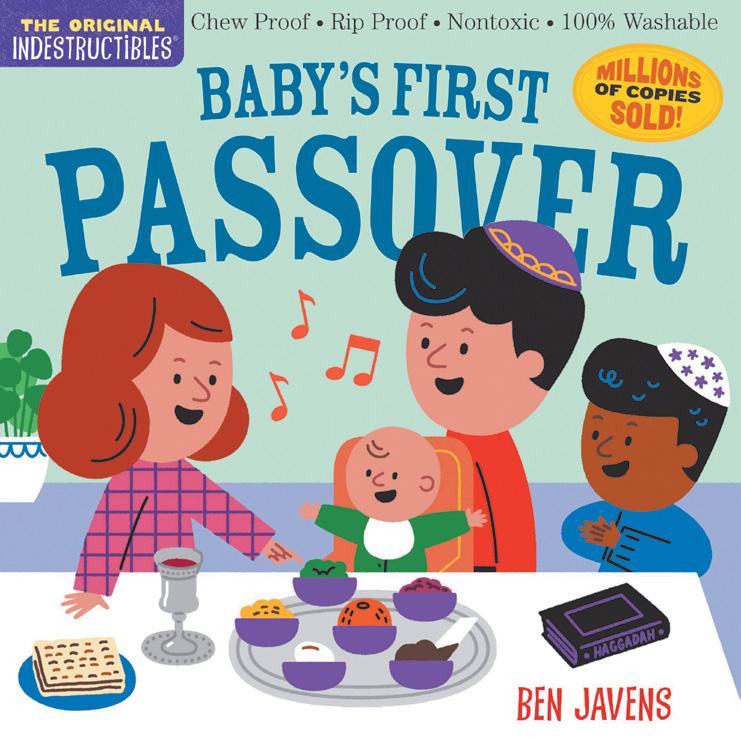
the relationships that can grow as a result of reading together.
Another book in the Indestructibles series is Happy Easter (Workman Publishing Company, New York, 2023, $5.99) for the next holiday to come along. This book, created by Amy Pixton and illustrated by Vanja Kragulj, introduces these budding readers to the fun of Easter time. Yummy treats, coloring eggs, decorating the house, searching for eggs that are hidden in the garden, dressing up for family dinner, and celebrations are all part of this little book. There is much to see and talk about and this book will delight everyone. As with other books in this special series, this book is safe for babies to handle and explore.

Countdown to Easter (Gibbs Smith Books, Layton, 2023, $12.99), written and illustrated by Greg Paprocki, is a sturdy board book meant for children who are a bit older. There is much to see and look for in this book, and the colorful, detailed illustrations will keep eyes and minds busy as they search for the Easter items. Bunnies, bees, cookies, chicks, flowers, lambs, fancy hats, and more will keep the readers looking and counting until at the end of the book where we try to find the one Easter Bunny! Written in engaging rhyme, it takes us through Easter events and family fun!
Pick a Perfect Egg (Candlewick Press, Somerville, 2023, $18.99), written by Patricia Toht and gently illustrated in pastels by Jarvis, will spark excitement for the Easter events to come. Written in a wonderful rhyming pattern that will
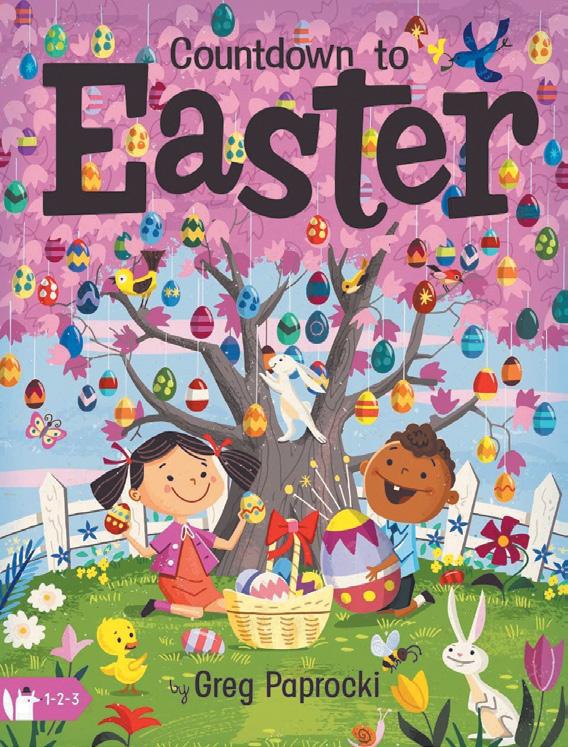
18 WNY Family April 2023
invite children to participate in the reading of the book, the fun begins. A trip to the local farm for fresh eggs sets everything in motion as the family gets ready for Easter. This year, they are dying the eggs with natural dyes as well as store bought ones. Preparing baskets and planning what to wear for the Easter celebration come next! Then it’s off to find the eggs hidden mysteriously during the night. Everyone meets dressed for the day and the race is on! What surprises are hidden in the plastic eggs? How many of the eggs you decorated did you find? Add this all together and you have the perfect springtime celebration.
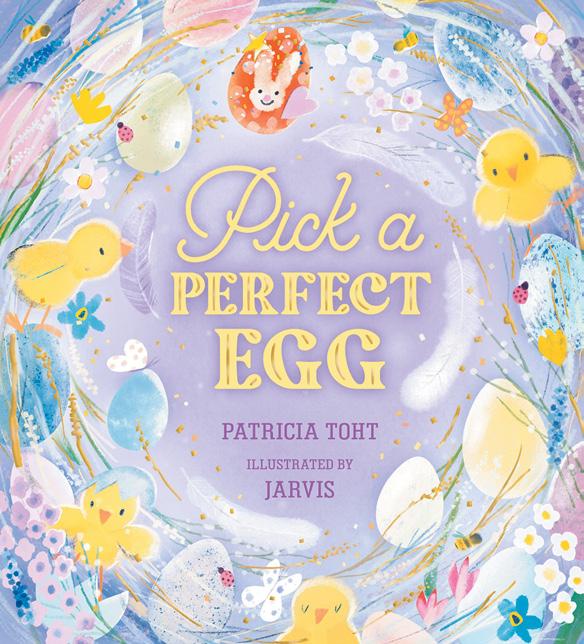
Spring is the season of exuberance and expansive growth. This year it comes in the Chinese year of the Water Rabbit, with a calm and gentle approach to life. However, it appears that the rabbits in Bunnies In a Boat (Candlewick Press, Somerville, 2022, $18.99), written by Philip Ardagh and illustrated by Ben Mantle, got the message about water, but they didn’t get the memo on the calm! Their approach to life on the water seems to be chaos! All of the animals are out on the lake for some springtime fun, when along come these crazy bunnies. Nothing is safe, not even the fish! This energetic and raucous boating adventure has everyone in a tizzy. If you are looking for adventure, imagination, and laughs, this is a book for you.
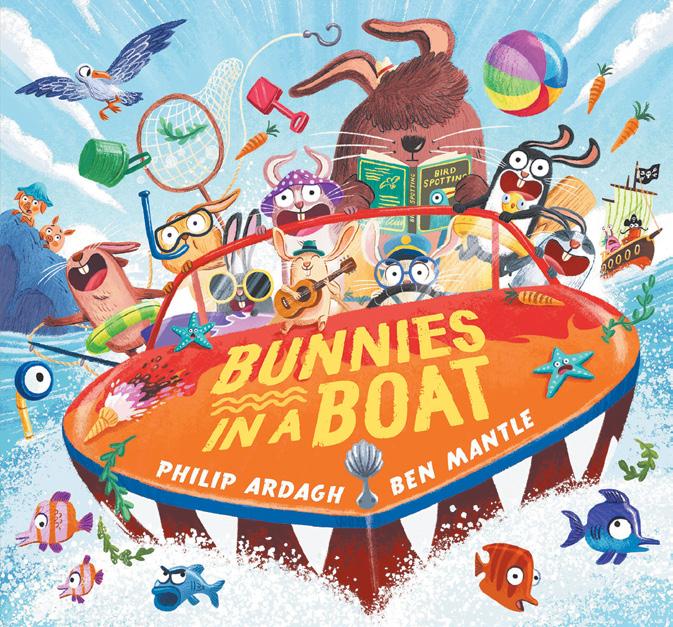
Enjoy the season we have been waiting for with your family and friends. Spend some time outdoors when the weather is good, and when spring showers come along, celebrate inside with a good book! Soon the sky will clear, and you will be back outside for more spring adventures!
Spring has sprung.
The green grass rises.
Get ready for some spring surprises!!

Happy Spring!!
Dr. Donna Phillips is an associate professor in the College of Education at Niagara University where her specialty is literacy and children’s literature. She lives on Grand Island, NY and is the mother of two adult children and the grandmother of one.

April 2023 WNY Family 19
Gardening for Kids
Kids are some of the best earth tenders around. With their love for food, flowers, and dirt, gardening is the perfect activity to combine play, learning, and family time.
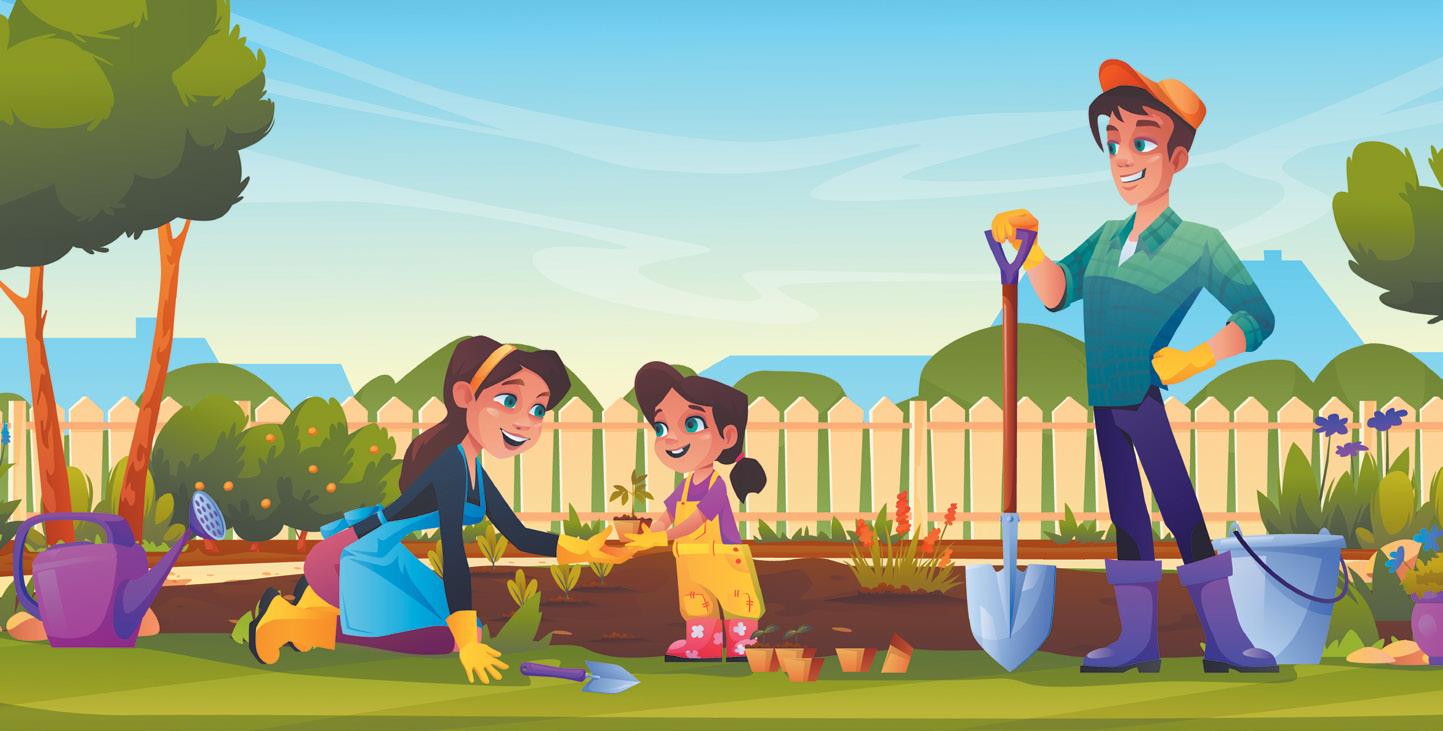

Why Kids Make Great Gardeners
Understanding the world around them is a child’s primary mission, even if they don’t know it. Gardening provides the perfect way to build understanding. From learning about plants and how they grow, to seasons, the Earth, and what we eat, kids will be excited to discover that they can work with nature to do something amazing.
Connecting with nature has proven benefits. From increasing creativity to decreasing symptoms of things like ADHD and stress, gardening provides kids with far more than a pretty plant. Even issues like childhood obesity are helped by spending some time tending the earth.
The key to successful gardening for your child is knowing what works.
The Perfect Tools
Having the right tools doesn’t need to be complicated, but it can make the experience much more enjoyable. With just a few basics, kids will feel ready to get dirty.
Garden gloves are a great starting place. Finding gloves designed for kids will help them fit properly and be ready to dig, plant, and water. Plus, it means easier cleanup when they’re done! Kid-sized tools make the job much easier for kids to maneuver. Plus, they
enjoy having things designed just for them. A shovel, hoe, and rake are great starting places. Adding in a small hand shovel and trowel can also be quite handy.
The most important tools are soil, sunshine, and water! It can be helpful to talk to your local garden center about the best soil for your garden. Make sure you have a good water source nearby and the right amount of light, and you are ready to go.
Great Starter Ideas
You have two main choices when it comes to gardening: flowers and fruits/ vegetables. Doing some of each is a great way to ensure kids are engaged and discover what they love to do.
Some favorite flowers to plant include sunflowers and nasturtium. These are easy to grow and provide big results.
Fruits and vegetables are especially fun as you get to eat the results! Green beans, tomatoes, cucumbers, and strawberries are favorites that yield great harvests kids love.
The best part is, you don’t need to wait for the warm weather to get started! You can start seeds indoors or even try winter sowing.
If you start seeds indoors, you can keep the planters inside, typically in a warm sunny area. This will produce seedlings that you can transplant outside when it is warm enough and the danger of frost has passed. Indoor seed starting kits are a good option, but you can always use containers you already
20 WNY Family April 2023
—
(Tips, Tools, and Books for Success)
by Rebecca Hastings
have on hand. Just make sure they have adequate space and drainage in addition to light.







Winter sowing is another option that is great for colder climates or if you have limited space inside. To do this, you start your seeds by repurposing plastic containers to create mini-greenhouses that you keep outside.

Empty milk cartons or food containers that are transparent or semitransparent work best so the seeds get enough light. You can plant your seeds right in the container, and seal them making small holes in the bottom for drainage and the top for air and water. Your winter sowing containers can even get covered in snow and still be successful!
Read All About It




Make the experience about more than tossing some seeds in the dirt, but reading books that help kids understand gardening.
A favorite book, and New York Times Bestseller, We are Gardeners by Joanna Gaines and Julianna Swaney, combines great illustrations with truly helpful information perfect for kids. Plus, Gaines offers help in handling obstacles along the way.
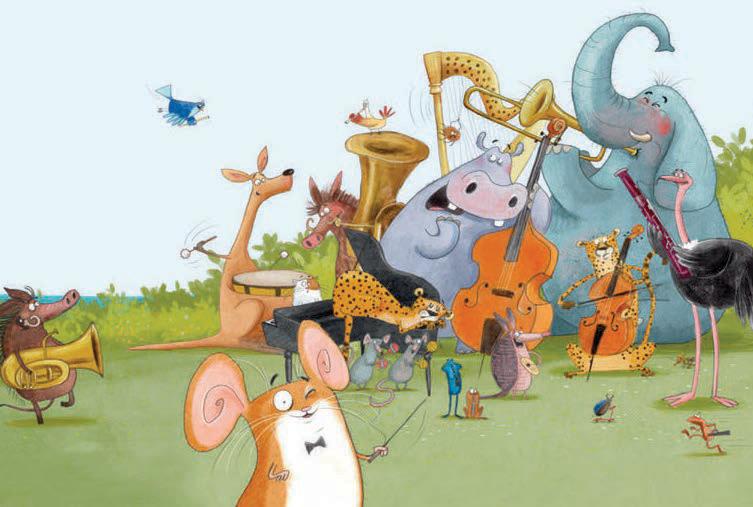
Grow: A Family Guide to Growing Fruits and Vegetables by Ben Raskin is a delightful guidebook that offers tips, games, and even a Grow Your Own Pizza plan with recipes. This book is the perfect way to keep kids excited about gardening as they learn all about it.
With 120 step-by-step gardening activities, The Best-Ever Step-by-Step Kid’s First Gardening by Jenny Hendy is a fantastic resource offering new ideas for things to grow and how to do it. Full of color photos, kids will feel equipped to tackle new garden projects with confidence!
Discover how you and your kids can learn from a new garden this spring. With a few tools and a willingness to get a bit dirty, you and your kids can connect with nature and with each other!

April 2023 WNY Family 21
TICKETS: DAY PASS: 8am-5pm MEDINA RAILROAD MUSEUM Medina, NY May 20, 21, 27 & 28 MedinaRailroadMuseum.org
know taking care of the Earth is important, but it’s easy to let the busyness of daily life push thoughts of being eco-friendly to the back burner. Being aware of the planet and making small changes is easier than you think.

Try These 12 Easy Ways to
Celebrate the Earth
— by Rebecca Hastings
with toys your kids have outgrown. It can be fun for kids to see their favorite playthings being used by another child who will enjoy them.
Make a Birdfeeder
Earth Day is the perfect opportunity to remind kids how to appreciate and take care of our planet. Raising earth-conscious kids has never been more important than it is today. The Earth provides us with a place to call home, food, water, clothing, shelter, and even medicine. Fostering a love for our planet helps all of us live longer and healthier lives. And it doesn’t have to be overwhelming.
Start small by trying one activity a month or go all in and try all of these fun activities with your kids today.
Plant Something
It doesn’t matter if it’s a tree, a flower, or a seed. When we grow new things, it helps the Earth. Trees help replenish oxygen and keep the planet cool, flowers can help endangered species like bees, and growing your food helps reduce the amount of food transport needed. Plus, it can be a lot of fun to plant and grow something together as a family.
Find a Local Farmers Market
Supporting local farms and growers is a great way to keep the earth healthy. The farmers that offer goods at farmer’s markets often minimize waste compared to conventional grocery stores. Many of them also use fewer harmful chemicals in their growing practices which helps keep the soil and water clean. Plus, you can find tasty new foods for your family to try.
Visit a National Park
Did you know the U.S. has 62 national parks and almost all have virtual
tours? Whether you make a trip to visit or go virtual, helping your kids fall in love with these awe-inspiring treasures will grow their appreciation for the planet.
Recycling Challenge
Teach kids to look for recycling symbols on packages to recycle as much as possible. At the end of a week see how much you recycle compared to how much you throw away. Try to get your recycling output to beat your trash output each week.
Make a Recycled Craft
Kids love to get creative. Instead of grabbing the usual art supplies, use some of those recycled items to create something. You can have a theme or let everyone create whatever they want. This is a great, earth-friendly rainy-day craft!
Give It Away
Instead of tossing things you no longer want or need in the trash, have a household collection day. Once your family gathers a group of items, make a family trip to the local donation center or give things to another family that could use them. You can even think about younger kids who would enjoy playing
Gather pinecones or large sticks to use for the feeder. Cover them with a layer of peanut butter and roll in birdseed. Hang outdoors for birds to enjoy.
Get Inspired
Watch the video of young poet Amanda Gorman reciting her poem, “Earthwise.” Kids and adults will be inspired to treat our planet well.
Take 53
In honor of the 53rd Earth Day, commit to taking 53 hikes, walks, or bike rides this year. Try making a chart to keep on the fridge to see your progress throughout the year.
Just One Thing
Swap out one plastic item for a more sustainable option from your household per month. Try reusable water bottles, travel mugs, straws, shopping bags, or sandwich bags to reduce plastic waste.
Leave No Trace
This is an effort to leave the planet in its most natural state. Do a little research about Leave No Trace and then have a fun family challenge. On your next outing see if you can cover your tracks and leave no trace that you were even there.
Get Outside
The best way to help kids take care of the Earth is to fall in love with it. Spending time outside, enjoying the beautiful creatures and landscapes is great for fresh air and exercise as well as learning to love this great big beautiful planet we call home.
When we are intentional about taking care of the planet, everyone wins!
22 WNY Family April 2023
We all
— by Pam Molnar
It’s Time for a Celebration
Ahh, Spring! That wonderful time of year between the Spring Equinox and Summer Solstice when everything is warmer, colorful and new again. With Winter now behind us, it’s time to celebrate. Check out our 12 fun ideas to welcome spring and get this party started.

Games
1) Frog Flop – You will need two green bean bags for each team and one bean bag of any other color for the game. You can sew on eyes or decorate them with a marker to make them look like a frog and to differentiate for each team. The first team tosses out the colored bean bag. The object of the game is to get your team’s green bean bags as close to the colored bean bag as possible. One point is given to the closest frog. The game continues to 15 points.
2) DIY Spring Bingo – This is both an activity and a game. Players are given blank bingo cards (check Etsy or make your own) and spring stickers. Players can place the stickers in any square on the bingo sheet. When they are done, play the game as normal, calling out the objects found on the stickers.
3) Spring Hedbanz – Write spring words like butterfly, tulip and umbrella on separate index cards. Pass out an elastic headband to each player and have
them sit in a circle. Players are given a card, but they may not look at it. Instead, they wear it on their forehead, held in place with the headband, with the word facing out. Players ask and answer yes and no questions to guess what word is on their card.
4) Pick from the Garden – Place suckers (like dum dum pops) in a terracotta pot filled with moss or shredded green paper over a floral brick. The sucker sticks are marked with different colored ink. The game can be played as a match game (with a prize given) or as a task game. For a task game, each color sucker stick represents a task category such as singing, drawing or even spelling.
Activities
1) Tic Tac Toe – Gather mediumsized river stones and let the kids paint them to look like ladybugs and bees. While they are drying, you can make a board on the back of a small cinch bag with colored tape or markers. When the stones are dry, they can be stored inside the bag so they are ready to play when you are.
2) Jelly Bean Towers – Pick up jelly beans and toothpicks at the store. Place kids in groups and have them construct a tower. When they are finished, give the kids ballots to vote for best in several categories. Give prizes for the highest, strongest, and most unique designs.
3) Crystal Rainbows – You will need glass jars, multicolor pipe cleaners, Borax, hot water and dowel rods. Wrap the top part of several pipe cleaners around a dowel rod that will lay flat across the opening of the jar. Mix 3 tablespoons of Borax in a cup of boiling water. Pour mixture into jars and insert pipe cleaners into the jar. Crystals will start forming overnight. Remove when covered in crystals and let dry.
Crafts
1) It’s for The Birds – Oriental Trading offers unfinished birdhouses and bird feeders on their website. Gather decorating options such as paint, glitter, jewels, ribbons and whatever other items you think will attract the birds. Let dry and hang from a tree near the window.
2) Make a Kite – A windy spring day is a wonderful time to make a kite. You can use craft store dowel rods or collect small branches that have fallen from trees for the cross bars. For the sail of the kite, try newspaper, wrapping paper or plastic garbage bags. Using plain craft paper allows for decorating with a personal touch. Attach string to the front of the kite and take it for a ride.
3) Make Fairy Houses or Castles –Collect empty paper towel rolls for the base. Fashion a pointed roof with construction paper, pine cones or twigs and decorate the cardboard roll with markers, colored tissue paper, wallpaper samples or felt. You can also cut out a door or windows. Create a village by securing to a poster board and add roads, greenery, and a small brook made from foil or watercolor paint.
4) Welcome Spring Door Hanging –For this craft, your only limit is your imagination. Use a base such as wood, felt, a straw hat, a wreath or even an old umbrella. Add craft moss, ribbons, artificial flowers, yarn, paint, burlap, etc. Personalize it with a saying, monogram or your favorite spring animal.
Pam Molnar is a freelance writer and mother of three. She loves to plan parties and watch the joy it brings the guests. Follow her on Etsy at Pam’s Party Printables.
April 2023 WNY Family 23
DEAR TEACHER
– by Peggy Gisler and Marge Eberts
The Story Behind Earth Day
This year Earth Day will be Saturday, April 22, 2023.
This day is celebrated annually on April 22 with events worldwide. Earth Day raises awareness for the environment protection and care of our planet. The first Earth Day on April 22, 1970 is considered to be the birthday of the modern environmental protection movement.
Earth Day was founded by Senator Gaylord Nelson to promote ecology and respect for life on the planet as well as to encourage awareness of the growing problems of air, water, and soil pollution. The first Earth Day celebrations took place in two thousand colleges and universities, roughly ten thousand primary and secondary schools, and hundreds of communities in the United States. However, today over one billion people worldwide take part in activities on Earth Day in more than 193 countries. Some areas have Earth Day celebrations all week.
Each year the Earth Day theme is different. This year’s theme is “Protect Our Species.” It is designed to draw attention to the rapid extinction of species around the world.
Students are definitely learning at their schools what they can do to help protect our planet and reduce pollution. Why don’t you and your children join all the other people in celebrating this day by improving the environment in some way? Join one of the many Earth Day events in your community. You could be part of a group working to improve city, state, or national parks. Other groups clean up streams, plant gardens at schools, and pick up street trash. It will be a great opportunity to have some
all-important family time as Earth Day is on the weekend.
Here are some at-home ways your family can celebrate Earth Day. Whatever you elect to do will be hands-on learning about the environment for your children.
1. Take a walk in nature and simply appreciate it while stopping to pick up discarded bottles and recycling them.
2. Plant a tree for every member of your family. They will remove carbon dioxide from the atmosphere. Thirty percent of all Earth Day celebrants actually plant trees.
3. Build a compost pile. Find a section of your yard in a back corner and start putting all the leaves and grass cuttings from your yard in the pile. It will decompose and you’ll be able to put it in the soil for other plants in your yard.
4. Make bird feeders. This can be done by collecting pine cones and dipping them in peanut butter or honey and covering them with birdseed.
5. Take a tech break, and turn-off all electronic devices to conserve electricity.
Some More Fun Environmental Facts and Activities
Earth Day is not the only day in April focused on the environment, there is also Arbor Day. It is celebrated on the final Friday of every April. It originated way back in the 1870s when the secretary of the Nebraska Territory and others living there were upset by the lack
of trees that they had left behind as they moved West. Trees were needed for windbreaks, fuel, building material, and shade.
On the first Arbor Day in 1872, more than 1 million trees were planted in Nebraska. Since then, most states and many countries around the world observe Arbor Day to celebrate trees and plant them for a greener tomorrow. And schools used to have the tradition of giving every student a tree to plant in their yard.
Be sure that your children understand the great importance of trees to every one of us, especially their role in reducing pollution and producing the oxygen we breathe. Point out that it takes seven or eight trees to make the oxygen one person needs for a year. You can go to a nearby park or playground to count the trees to discover how many people would get oxygen from the trees there. Plus, tell them that the trees with the largest leaves produce the most oxygen. See if they can find those trees.
Here are some quite different activities that your family might enjoy doing for Earth Day or Arbor Day:
1. Go to the library and check out a book about trees that is fun to read. One suggestion is The Giving Tree by Shel Silverstein.
2. Visit http://awhiskandtwowands. com. Then search for how to make Earth Day smoothies.
3. Search for a recipe for Dirt Pudding with Gummy Worms, and enjoy a creepy, crawly dessert.
4. Find out online how to make Earth Day Crayons. Parental supervision is required for this activity as it uses the oven.
5. You’ll find songs to sing for Earth Day on YouTube.
6. Visit www.distractify.com/p/earthday-jokes-for-kids. You’ll have some laughs with Earth Day jokes such as “How can you tell the Earth is friendly?” Answer: Because it waves.
Parents should send questions and comments to dearteacher@dearteacher.com, and visit the dearteacher.com website to learn more about helping their children succeed in school.
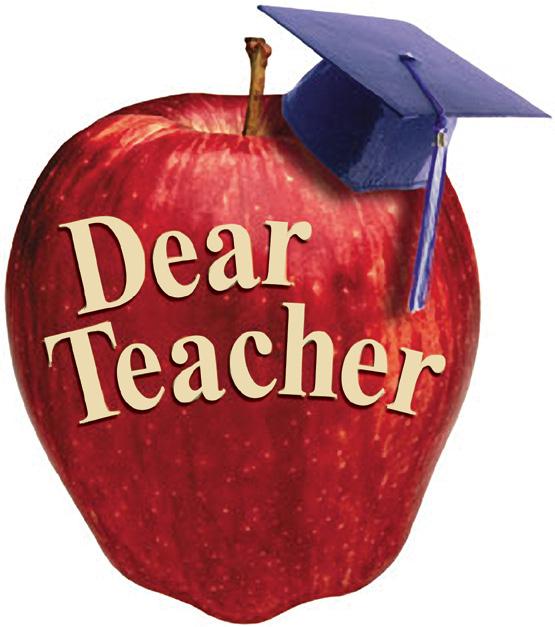
24 WNY Family April 2023
Helping all parents make their children’s educational experience as successful as possible


SPECIAL NEEDS WNY Family Magazine | April 2023 | PULL-OUT & SAVE
— by Rae Jacobson, ChildMind.org
Early Signs of Learning Challenges:
Tips that young kids might need support to thrive
My daughter, age four, has been trying to write the number five. She wants to make a birthday card for a friend. “No, that’s not right…,” she mutters, her squiggles snaking across the page. On attempt number six, frustration gets the better of her. “I just can’t do this!” she wails, throwing her pen to the floor. “Fives are too hard.”
This is hardly unusual for a preschooler just starting to learn her numbers and letters (and who still sometimes flops to the ground in distress if her banana accidentally breaks in half) but I can’t help feeling a little pang of worry.
Growing up, I had dysgraphia and dyscalculia. Seeing my daughter struggle, I wonder how I’ll know if she has learning challenges of her own. When children have learning issues, early intervention can be a big help. But how can parents tell if, and when, to be concerned?
What is a Learning Disability?

Learning disorders (LD’s) are diagnosed when a child is having serious trouble with a specific academic skill or subject, like math or reading. LDs are
defined by a gap between what is developmentally expected for a child to be able to do, and what they’re actually able to do. For example, a child who has no trouble keeping up with their peers in other ways but is falling way behind in reading.
Though some disorders, like autism, can be, and often are, diagnosed during a child’s preschool and early school years, learning disorders usually don’t become apparent until kids are a bit older — when they’ve had a chance to be exposed to formal schooling.
This is partially because when it comes to early learning, kids develop skills at different speeds. A child who seems to be behind their peers when it comes to forming letters or reading short words may just need a little time to catch up. Being at the younger — or older — end of the class can mean some children are a little ahead or behind other students. And, just like adults, different kids have different strengths and weaknesses. One child might excel at counting but struggle to write their name, while another might be reading basic words early on but have trouble with numbers. As they grow and mature their abilities usually even out.
For some children, however, those early learning struggles may signal future academic difficulties. And though kids may be too young for a formal diagnosis in the preschool and early kindergarten years, support and, if necessary, early intervention can have big benefits. Daryaneh Badaly, PhD, a clinical neuropsychologist at the Child Mind Institute, explains that there are a few signs parents can be on the lookout for during children’s early learning years.
The Earliest Signs of Learning Challenges
“In younger kids, learning challenges don’t look the same as they do for older children, because the work they’re being asked to do is very minimal,” explains Dr. Badaly. “That said, there are some specific issues that may suggest a child is struggling with some specific early skills.”
Fine motor control: “Issues with fine motor control can come out early on. You might see children struggling to learn how to hold a crayon correctly, having trouble using utensils, or shying away even from coloring or drawing shapes because it’s physically hard for them,” says Dr. Badaly. “Catching those issues early gives parents the chance to put supports like occupational therapy in place to strengthen those skills so they don’t become a barrier to learning later on.”
Language problems: Trouble understanding or using language can be a sign that a child may later be diagnosed with a language-based learning disorder. “There are different functions of language that can be impaired,” says Dr. Badaly. Children can have issues with receptive language, meaning they have a difficult time understanding words they’re hearing or reading. Or they can struggle with expressive language — trouble using words to express themselves. Children can also have issues with both. “If a kid is having trouble understanding oral language or expressing themselves, intervention can be helpful,” she says.
Early reading skills: Though most children are barely reading ba-
26 WNY Family April 2023
sic words during the preschool years, they’re building the skills that form the building blocks of reading in other ways. “There’s a lot of play with sounds, like rhyming games, or word and sound matching during this time,” says Dr. Badaly. “If a child is really struggling to pick up on the sounds, or doesn’t seem to grasp rhyming, that’s someone you should watch a bit more closely.”
Early math skills: “When kids are just learning to count, if the numbers just don’t come that easily to them, or they’re not seeming to grasp the fundamentals of counting, like putting things in order, that might be something to watch,” says Dr. Badaly. Issues with numbers can become especially clear around first grade, she explains: “If by the end of first grade a child wasn’t really grasping the basic concept of addition, that would definitely be cause for concern.”
Behavioral clues: If you notice your child frequently gets frustrated or upset during a certain activity, like drawing shapes or building with blocks, that may be a sign that the skills required for that type of learning are a challenge for them. “If there’s something that a kid is unwilling to do or is getting really upset when they’re asked to do it, it’s probably because it’s hard,” Dr. Badaly says. The question, she says, becomes: Why is it hard? “Is it that they haven’t been taught this skill? Or is it because the child is having a hard time staying focused, or because the task itself is hard?”


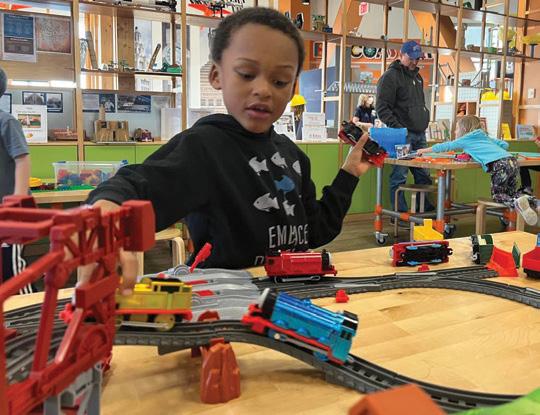

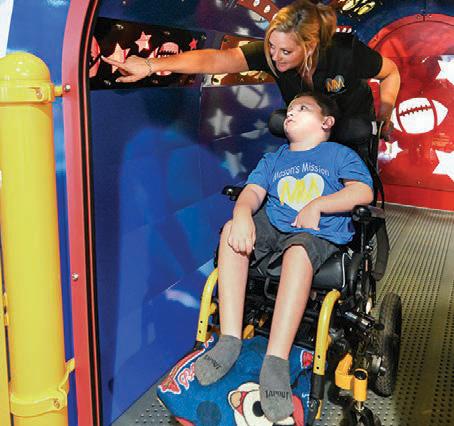
ADHD symptoms: Another behavioral clue worth considering during the early years is signs of ADHD. Though ADHD is considered a behavioral disorder, it has a big impact on how kids learn, and many children with ADHD have learning disorders as well. “In preschool, even though we likely wouldn’t make a diagnosis of something like ADHD, if you have a kid who’s bouncing off the walls and can’t sit still, you might say, well this kid might end up being diagnosed with ADHD, and might benefit from a behavioral intervention,” Dr. Badaly notes.
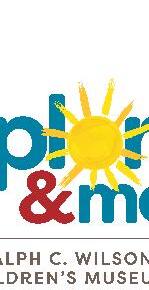
continued on page 38

April 2023 WNY Family 27
— by Kimberly Blaker
Learning Disabilities & ADHD What
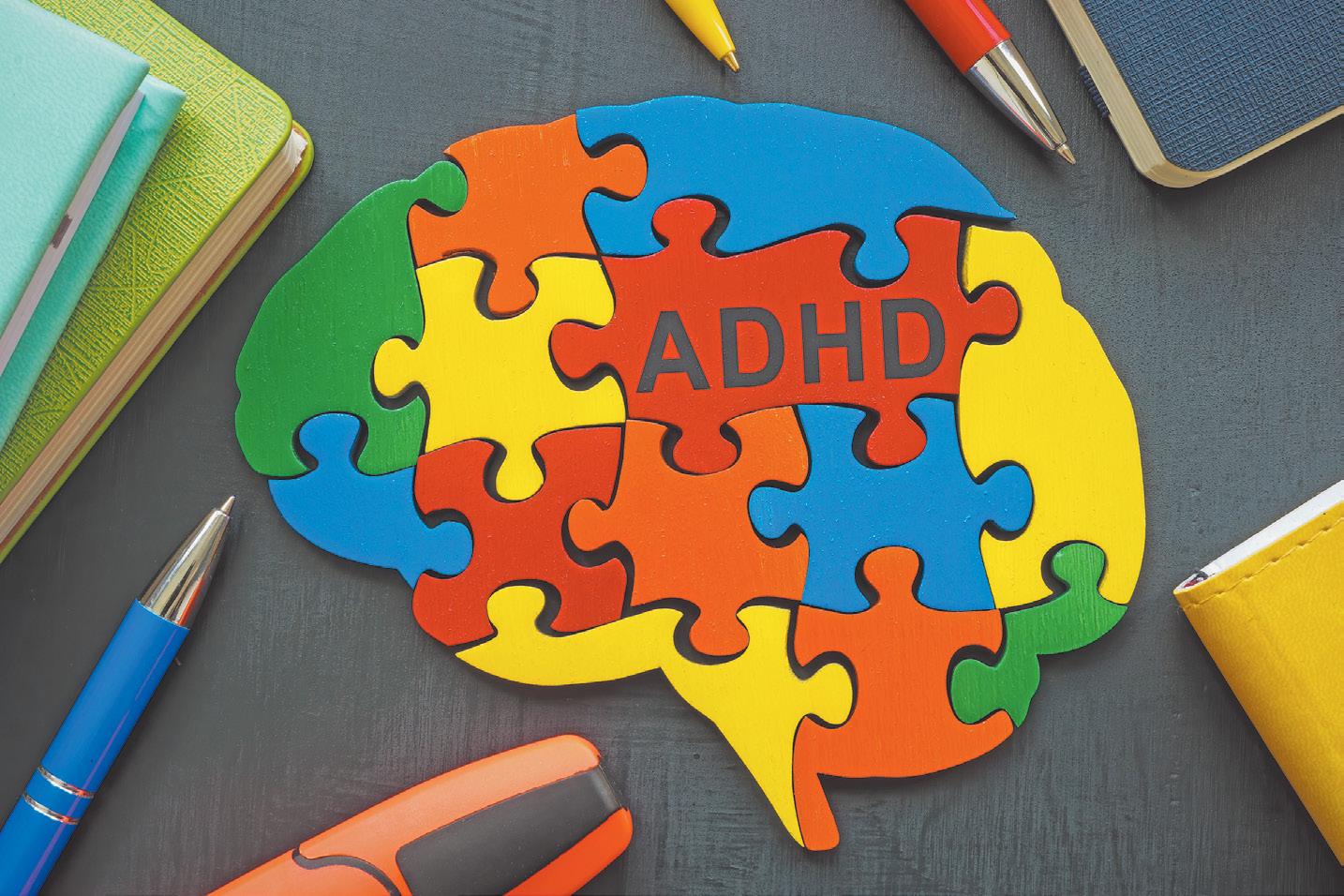
Parents Need to Know
Approximately 10% of American school-age children suffer from a learning disability (LD) and/or attention deficit hyperactivity disorder (ADHD), according to a report by the Centers for Disease Control. About 4% of children have both. But for many kids, these disorders go undetected despite their ongoing struggles with school work and behavior issues that often accompany the conditions.
Often, parents don’t suspect learning disabilities because many people associate it with low IQ. But LDs affect children of all intelligence levels and has nothing to do with IQ. In fact, it isn’t uncommon for a child with a learning disability to excel in one or multiple subjects, while struggling in another. Also, kids with LDs or ADHD may do well under certain conditions. Yet, in other situations, they have great difficulty. Depending on the LD and severity of it, a child might struggle in all areas.
Forms of Learning Disabilities
There are multiple forms of LDs. Some pose input problems, which means a child struggles with either sound or visual input. What happens is the information isn’t processed correctly or gets
stored incorrectly in the brain. This can pose problems with the retrieval of information as well as short or long-term memory.
An LD can also cause output problems. This can sometimes be seen in motor skills such as handwriting difficulties. Another common problem is verbal output. This is usually evident in kids that have trouble organizing their thoughts either in writing or orally. Punctuation, grammar, and spelling may also suffer as a result.
Dyscalculia is a math learning disability. Kids with dyscalculia may have difficulty learning to tell time, counting money or counting in general, learning math facts, calculating, understanding measurement, or performing mental math.
Dyslexia is a reading disability, although the symptoms are not exclusive to reading. Children with this disorder may have difficulty with spelling, vocabulary, or comprehension. They may read slowly, have trouble learning left from right, or have organizational problems with both written and spoken language. Dysgraphia is a writing disability. Poor handwriting and often, an awkward style of holding a pencil or even
contorting the body while writing are hallmarks. A child may also have trouble drawing lines. With dysgraphia, kids can often better express their understanding of the material through speech than in writing.
Auditory Processing
Disorder (APD) is a problem with input. It isn’t a hearing problem. Instead, the brain has difficulty processing sounds. As a result, kids with APD can be distracted by loud noise or struggle to follow conversations. This can be especially problematic when there’s a lot of background noise, which makes it difficult to distinguish sounds.
Visual Processing Disorders (VPD) are also a problem with input. But VPD isn’t a vision problem. It’s actually a problem with the brain processing what the eyes see. It can result in a child bumping into things or being unable to distinguish the shapes they see. It can also pose difficulty in identifying letters or numbers or result in problems with visual sequencing, among other symptoms.
Nonverbal Learning
Disorder (NLD) is similar to Asperger Syndrome and shows up as difficulties with social skills. Academic problems are sometimes present as well. But often, these don’t show up until kids reach higher grade levels. Those with NLD may be afraid of new situations, struggle to make friends, lack common sense, and experience social withdrawal. Academic problems can include reading comprehension and working out math story problems.
ADHD is marked by attention problems and/or hyperactivity and impulsivity. Girls often have only attention issues, while boys are more commonly impulsive or hyperactive. Symptoms can include difficulty staying on task or paying attention. Yet, they often hyperfocus on stimulating activity. Children with ADHD may fidget or have trouble staying seated, interrupt, and act without thinking.
The symptoms listed above for each of the LDs aren’t exhaustive. You can
28 WNY Family April 2023
learn more about symptoms by visiting the Learning Disabilities Association of America at https://ldaamerica.org/typesof-learning-disabilities/
What To Do if You Suspect Your Child has an LD or ADHD
The first step is to talk with your child’s teacher and find out what the teacher has observed. Then speak to the school principal. Public schools are required by law to provide an assessment. This should include an IQ test, assessments of math, reading, and writing, and testing of processing skills. If your child is in a private school and it doesn’t offer this service, you can request it through your public school district.
Once your child has received a diagnosis, your school psychologist should be able to recommend and help you set up services or accommodations for your child. Depending on the specific learning disability, your child may qualify for special education services under the federal
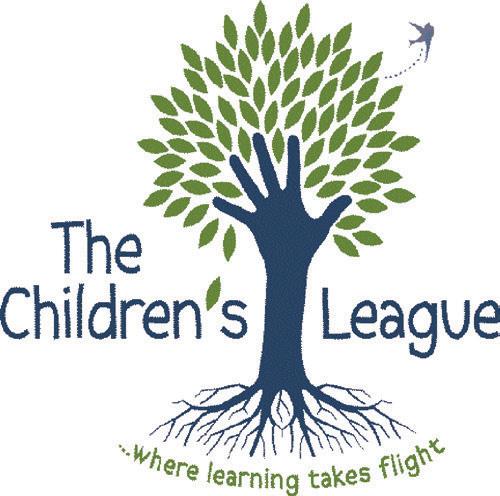
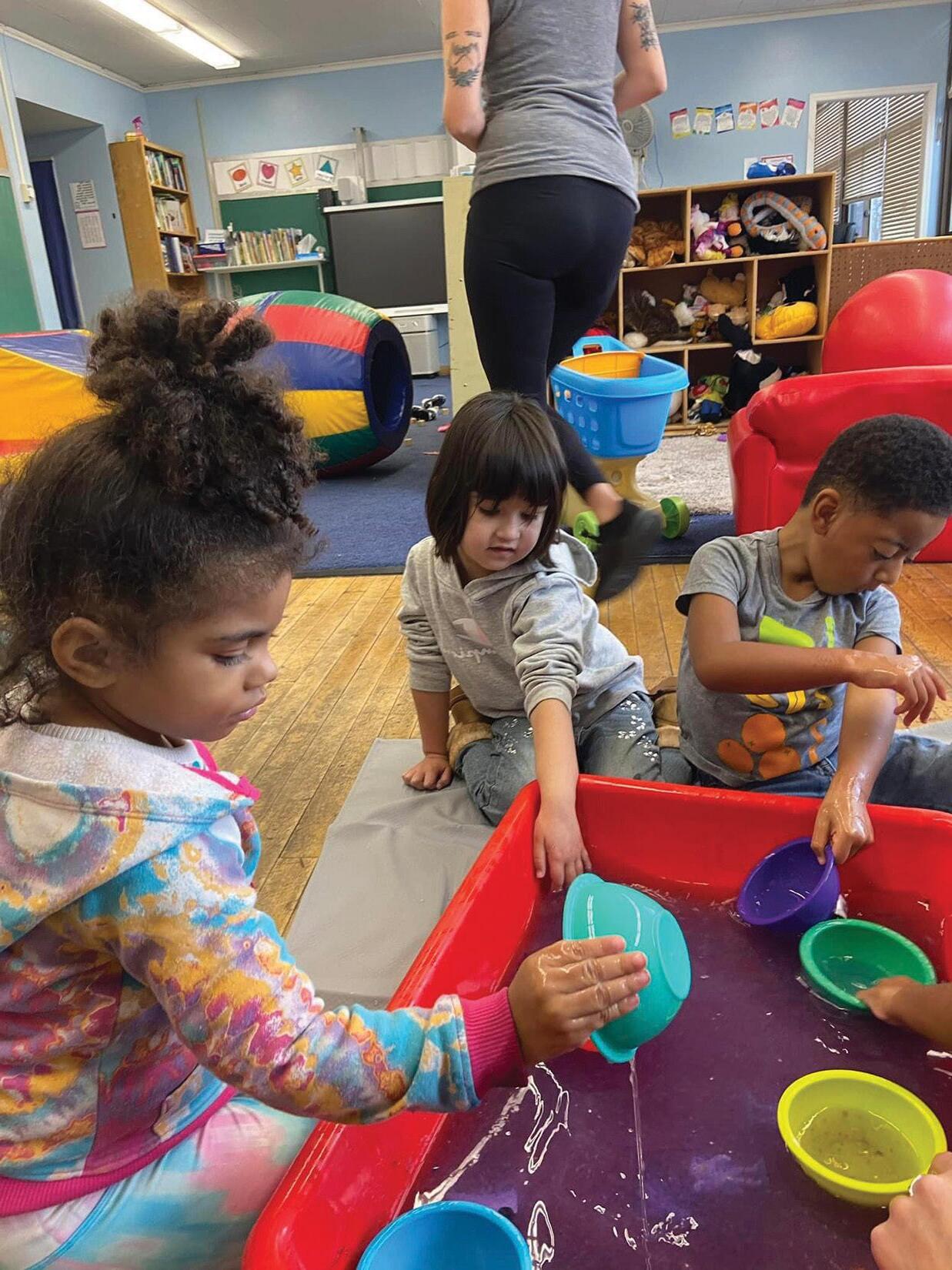
Individuals with Disabilities Education Act (IDEA) or accommodations through Section 504 of the Rehabilitation Act.

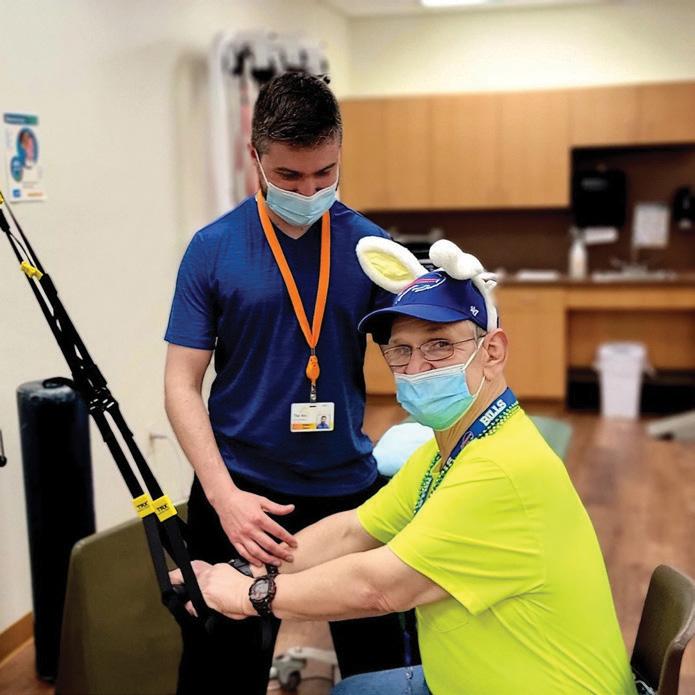


Keep in mind, you are your child’s best advocate. So, read books and articles on your child’s LD and learn how you and your school can help. Talk to your child’s teacher about additional ways the teacher can assist your child. Most teachers are eager to help. Although, depending on the student-teacher ratio and the school’s resources, it’s sometimes challenging for teachers to do as much as they’d like. There are likely other kids in their classrooms with special needs as well. If you feel your child isn’t getting the help needed, talk to the school administrator.
Kimberly Blaker is a mother of two and grandmother. She is also a published author, award-winning research writer, professional freelance writer, and former columnist. Her articles, editorials, and content have appeared in more than 300 magazines, newspapers, and websites.
April 2023 WNY Family 29
Center & Community Based Educational, Therapeutic & Evaluation Services for Developmentally Disabled Young Children Integrated Pre-School Classes in Collaboration with Head Start Specialized Services for Autism Spectrum Disorders 393 North Street Springville, NY 14141 716-592-9331 Visit us online at http://tclny.org Serving Erie, Cattaraugus, Chautauqua & Wyoming Counties
Financial Planning for Kids with Disabilities

All parents worry about their children’s future, but when your child has disabilities or special health care needs, it’s normal to have additional concerns. Things like:
• What kind of life will my child want to live, and where?
• If my child can’t work, how can I make sure expenses (like rent and transportation) are covered?
• How do I set aside money for my child’s future without affecting government benefits?
Questions like these might keep you up at night. But financial planners say that creating a plan can ease anxiety. Here are 10 steps to planning your child’s financial future. Some are simple, some are challenging; some cost nothing and some require paying legal fees. Get started on some of these now, so you’ll have peace of mind down the road.
1) Create a Special Needs Trust
A special needs trust is an important part of your child’s long-term financial plan. This is where you can put money that you save, that others give to your child as gifts, and that you receive from any insurance settlements. This trust is secure and won’t interfere with your child’s eligibility for federal benefits like Medicaid and Supplemental Security Income (SSI).
Even if you’re unable to pay into a trust right now, you can set one up any-
way. This way, you can make the trust the beneficiary of your life insurance policy and your estate, ensuring that those assets don’t get passed to your child when you die. Why wouldn’t you want your child to be the beneficiary of your estate? Because showing more than $2,000 in assets could make your child ineligible for federal benefits such as SSI.
Another option for planning for your child’s financial future is to establish an ABLE account. The Achieving a Better Life Experience (ABLE) Act of 2014 allows states to create a tax-advantaged savings program for people with disabilities to pay for qualified disability expenses tax-free. With an ABLE account, you can save up to $15,000 a year for your child, and the money grows in the account tax-free.
2) Write a Will
A will specifies what will be done with your assets after your death. By writing a will, you make sure that your assets are left to the special needs trust and not to your child. Without a will, a probate court judge could name your child as a beneficiary, which could make your child ineligible for federal benefits (see above). The will is also where you can specify a guardian who will take care of your child.
When you have a child with a disability, a will should not be a do-it-yourself endeavor. Hire a lawyer who works specifically for people with disabilities and is aware of your state’s disability
laws. Once the documents are drafted, have your lawyer keep one and then give copies to any executors or guardians named in the will. Contact the Academy of Special Needs Planners or the Special Needs Alliance for a referral to an attorney in your state.
3) Name a Guardian
A guardian is the person who will care for your child if you die before your child reaches adulthood. In choosing this person, consider how much time you now spend tending to your child’s needs. Who can handle that type of commitment? Who has bonded with your child? Who has the patience, understanding, and other personality traits necessary to deal with the day-to-day responsibilities of raising your child?
Once you pick someone, ask if the person will accept that responsibility (even though you hope it will never be necessary). And talk about how this commitment will likely stretch beyond when your child turns 18.
4) Name a Trustee
A trustee is the person who will be responsible for managing the special needs trust after your death. It can be a family member, a friend, an independent professional trustee, or even a bank or lawyer. The trustee ensures that the money in the trust is spent only on your child with a disability and only on services that you’ve specified or that are appropriate to your child’s needs. The trustee also supervises how the money in the trust is invested. The person who is caring for your son or daughter (the guardian) cannot spend any money in the trust without the trustee’s approval. And a word on trustees and guardians: They often are not the same person, and some financial advisors recommend that they never be the same person. By separating these roles, you ensure a “checks and balances” system for your child’s future needs.
5) Build Your Savings
Parents of children with disabilities quickly learn that just because a child needs a certain treatment or therapy doesn’t mean that your school system will offer it or insurance will cover it. This is where personal savings become
30 WNY Family April 2023
— Source: KidsHealth.org
so important. Start putting aside whatever you can each month — no amount is too small — to cover these extra expenses. Just make sure you never put this money in your child’s name.
AD PROOF • WNY FAMILY
4.23
(ISSUE)
Savings also can help pay for things like a special needs advocate. This is an expert in special education who can help you navigate the paperwork, programs, and laws that affect what services your child qualifies for. As a first step, it is best to contact your state’s special education advocacy organization, such as your local Family Voices (https://familyvoices.org/) chapter. If you need help outside of what can be offered by these organizations, consider hiring a special needs advocate. Special needs advocates save parents money in the long run by helping ensure that kids get all the services they’re entitled to from their local school district.
Remote Autism Spectrum & ADHD Diagnostics
NYS Licensed Psychologists with 20+ years of experience evaluating Autism & ADHD in children and teens
Evidenced-based approach to provide reliable results from the comfort of your home, and on your schedule
review this advertising proof for accuracy. We will make typographical corrections at no charge TIMES, FACTS, PHONE NUMBERS, EMAILS AND WEBSITES.) We have followed your original instructions as the space you purchased. Therefore, THIS IS A NOT AN OPPORTUNITY TO RE-DESIGN YOUR AD. will be billed $40 per hour for design changes with a minimum charge of $15.
To find an advocate in your area, ask for a referral from other parents of kids with special health care needs or call your local school district. You can also reach out to organizations that focus on your child’s disability or local colleges with disability programs.
Comprehensive report with individualized recommendations for your child
VIEWING: When viewing colors in a PDF/Electronic ad proof, results may differ from original production colors. calibrated differently, so for best viewing results, please print your electronic ad proof or ask us to mail you a hard copy.
3-day turnaround time for reports - Our psychologists spend the entire next day assessing your child’s case and writing the report.
REPRODUCTION: We are a newsprint publication and colors may reproduce darker or lighter than original production colors.
6) Write a Letter of Intent
Can be used to obtain an IEP
please contact your sales representative (Paul Kline) with changes/corrections or approval.
EMAIL: Paul@wnyfamilymagazine.com • PHONE: (716) 836-3486 you must reply by _______________ or the ad will run as it appears.
Preparing for your child’s financial future is important. But so is making sure that your child’s everyday needs will be met should anything happen to you. That’s where a Letter of Intent comes in. Is your child’s daily routine very important? Write it down and be as detailed as possible. The same goes for your child’s daily, weekly, and monthly schedules. Also include things that your child likes and dislikes, and helpful resources in the community.
Create a list of contact information for your child’s physicians, therapists, and other medical support people as well as current medicines and their dosages and schedules. Are there people you don’t want around your child or activities to be avoided? Write that down, too.
And then once a year, update the letter. This is not a formal legal document, so you can draft it yourself. Keep a copy wherever you have copies of your will. And make sure that your child’s appointed guardian has a copy too.
Cradle Beach offers an inclusive overnight summer camp for children ages 8-16.
7) Plan for Your Child’s Independence

We offer a nurturing, transformative, and fun experience in nature. Our camp sessions are designed to provide opportunities for skill building, to grow in confidence and to make new friends. We offer financial aid to ensure all children can attend!
Affordable pricing to reach more families in need (a Superbill will be provided to give to your insurer).
No Wait List - Immediate Appointments Available
Phone: 646-883-8361
Email: contact@r-asd.com
Website: R-ASD.com
Cradle Beach offers an inclusive overnight summer camp for children ages 8-16.


We offer a nurturing, transformative, and fun experience in nature. Our camp sessions are designed to provide opportunities for skill building, to grow in confidence and to make new friends.
Camp Sessions begin on June 26th. Eight sessions, 5 days each (Monday - Friday).
To register for Summer Camp, go to www.CradleBeach.org or call Admissions at (716) 549-6307 ext.205
When your child is about 14, start thinking about where they will live as an adult. For your child to qualify for a group home placement as an adult, registration is needed with your state’s developmental disabilities agency. And because the wait for group home placement can be up to 10 years, the sooner you register, the better.
Camp Sessions begin on June 26th. Eight sessions, 5 days each (Monday - Friday).
We offer financial aid to ensure all children can attend!
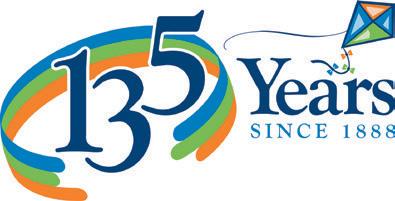
To register for Summer Camp, go to www.CradleBeach.org or call Admissions at (716) 549-6307 ext.205

In most states, people with disabilities are 21 or 22 years old when they become ineligible for education services through the local public school system. After high school, kids may attend college or vocational school, get a job, or do volunteer work. Many communities have young-adult education programs that teach life skills, such as cooking, cleaning, job training, and financial literacy. To learn what programs are available in your area, talk to your school guidance counselor or local Office of Vocational Rehabilitation.
8038 Old Lakeshore Road, Angola, NY 14006
(716) 549-6307
• www.CradleBeach.org
continued on page 35
April 2022 WNY Family 31
8038 Old Lakeshore Road, Angola, NY 14006 (716) 549-6307 • www.CradleBeach.org
● ● ● ● ● ● ●
— by Dr. Rebecca Jackson
BEYOND MEDICATION: 5 Aspects ADHD Medication May Not Address in Kids
Parents, physicians, and the Centers for Disease Control agree that when it comes to approaching attention deficit/hyperactivity disorder (ADHD) in kids, medication should not be the first line of defense. The CDC recommends parent training in behavior management and behavioral classroom interventions as a starting point. While guidance to manage challenging behaviors is a start, all too often this falls short of addressing the whole-child impact of the disorder. The next line of defense is considered medication, however crucial areas of a child’s well-being are impacted minimally or to varying degrees with ADHD medication; learning, social interactions, growth, and self-confidence. While medication can be extremely helpful in many scenarios, some families hope to avoid the use of medication, while others find medication to fall short of addressing the problems they are experiencing.
Parenting isn’t easy, and parenting a child with ADHD can add additional stress as you help your child navigate school, friends, and home life. As parents, we want our kids to be happy, healthy, and excel in what they do. We hope for our kids to have a great group of friends and to thrive in school and sports, but disruptions in their attention and behavior can derail success in each of these areas of life. When this happens, it can leave both the kids and parents feeling like failures.
During these times of stress, parents start searching for ways to help their child. Phone calls to pediatricians, psychologists, and friends, as well as late-night searches on the internet, can provide an array of options that may feel overwhelming. This journey typically leads parents to the possibility of medication but few other alternatives. Google Trends data shows over the past 5 years the number of searches for non-medication treatment for ADHD is on the rise (and this was prior to the current Adderall shortage). Parents are looking for help, but don’t know where to turn. Beyond medication and behavioral support, the path forward is simply not clear.
According to the journal Health Psychology Research, ADHD is one of the most thoroughly researched disorders in medicine, yet we are still left with many unanswered questions. The array of studies has focused on the causes, symptoms, and complications as well as the impact of various medications. Where the research falls short is in non-drug alternatives to addressing the vast array of complications. In fact, the CDC has labeled ADHD “a serious public health problem,” based on “the large estimated prevalence of the disorder; and the limited effectiveness of current interventions to attend to all the impairments associated with ADHD.” Simply put, more information is needed on alternative interventions.

A recent exploratory study conducted by Harvard Medical School and McLean Hospital aimed to begin to address this void in researched ADHD alternatives. The study implemented an at home version of the Brain Balance program®, training to determine which aspects of ADHD were impacted and to what degree. The kids in the study ranged from 8-14 years old and were diagnosed with ADHD. The fifteen-week integrated program consisted of sensory, physical, visual, and Interactive Metronome® timing exercises. The study found a marked reduction in symptoms as reported by parents in the ADHD total score as well as in the subcategories of hyperactivity and inattention. Scientifically, that equates to a large effect size, which is described as change significant enough to be meaningful in the real world. Clinician ratings validated those findings with changes noted in the same categories. What is meaningful to note is that the changes documented were similar to those improvements seen in a low-dose stimulant medication. While this study is promising, more studies of this nature are needed to provide parents with additional evidence-based options to support their child’s needs.
As a parent trying to determine the path forward that’s right for your child, start by asking yourself a few questions. First, define your goal. Are you hoping to avoid the use of medication? Or is your child currently medicated yet there are still areas of struggle? Then determine the areas of need so you can align the right support for your child.
All too often parents and professionals focus on the most disruptive symptom, yet for many kids, the impact is far broader. The Mayo Clinic provides multiple lists that cover symptoms, complications, and coexisting conditions related to ADHD. These lists are long and go beyond inattention including things such as impulsiveness, poor self-image, mood swings, unstable relationships, poor work or school performance, difficulty with time management, multitasking, and following through on and completing tasks. Current medications address some, but not all of the symptoms involved, and can introduce additional side effects and challenges. A Consumer Reports survey of parents with children taking ADHD medication showed that 41% were highly
32 WNY Family April 2023
satisfied with the outcomes. While this is excellent, that leaves 59% of parents not highly satisfied, and 44% of parents strongly agreed they wished there was another way to help their child.
Top 5 Areas that ADHD Medication May Not Address
1) Learning: Classroom concerns are a hallmark of ADHD with disruptions to the child’s learning, classmates and the learning environment itself. Kids with ADHD can struggle more with cognition which includes sustained attention, working memory, task switching, reasoning and comprehension. When it comes to medication and learning, the theory has been you can’t remember what you didn’t pay attention to, however, studies involving learning outcomes and medication have not supported this theory. While medication has been shown to minimize the amount of disruptions and movements, it does not always translate over into changed academic outcomes. A large study in Canada explored the connection between medication and outcomes and shared, “We find little evidence of positive effects on academic outcomes or schooling attainment. In fact, we find deterioration in important academic outcomes including grade repetition and math scores on discernible learning outcomes between medicated and non-medicated ADHD students.” Other studies have found an increase in completed classroom seatwork but that “medication has no detectable impact on how much children with ADHD learn in the classroom.”
2) Social Interactions: Kids with ADHD can struggle with social immaturity, impulse control, and managing their
LINKS TO SOURCES:
emotional outbursts, which can complicate social interactions, leaving others frustrated and annoyed. In fact, a study shared that 50-60% of kids with ADHD experience social rejection by their peers, versus 13-16% of non-ADHD students. This impact can be seen at all ages with higher divorce rates in adults, and higher rates of both bullying and being bullied, which can stem from struggling to fit in and challenges reading social cues. While impulse control can be reduced with medication, it does not directly impact the ability to read and respond to non-verbal social cues, nor mature the social skills.
3) Handling frustrations and upsets: Children with ADHD have been shown to experience mood swings and difficulty controlling their temper and reactions to upsets. In younger children, this can result in tantrums, and in older kids, this can present with physical outbursts and rage. It’s also important to note that the upsets can be quiet and internalized with increased feelings of shame and inadequacy. Medication usage can both help and hurt mood swings and outbursts, as this is one of the top five most common side effects. This side effect can come from the medication itself or can be seen as the medication dosage wears off or is discontinued.
4) Self-Confidence: The combination of challenges at home, school, and with friends can leave kids feeling like they’ve let people down — parents, teachers and even themselves. Being aware of the expectations but not feeling equipped to meet those expectations can be discouraging and can leave kids with feelings of, “I can’t do this, it’s too hard, what’s wrong with me?” The use of medication has shown increased levels of con-
https://www.cdc.gov/ncbddd/adhd/guidelines.html
https://www.ncbi.nlm.nih.gov/pmc/articles/PMC4768532/
https://www.cdc.gov/ncbddd/adhd/research.html#agenda
https://www.ncbi.nlm.nih.gov/pmc/articles/PMC4815037/
https://news.fiu.edu/2022/long-thought-to-be-the-key-to-academicsuccess,-medication-doesnt-help-kids-with-adhd-learn,-study-finds
https://www.ncbi.nlm.nih.gov/pmc/articles/PMC2827258/
https://www.consumerreports.org/cro/2013/01/the-pros-andcons-of-treating-adhd-with-drugs/index.htm
https://www.ncbi.nlm.nih.gov/pmc/articles/PMC2821235/
fidence while taking the medication, but that feeling of capability can ebb and flow with usage.
5) Healthy growth and development: The most common side effects of ADHD medications reported by parents include decreased appetite, sleep problems, weight loss, irritability, and upset stomach. Changes to a child’s nutritional intake and sleep can have a direct impact on growth and development, resulting in reduced height as an adult.
So, beyond medication, how do we support the whole child? One potential answer lies in addressing the root cause. ADHD stems from the brain, and the good news is that the brain can change. Creating stronger pathways in the brain through integrating sensory stimulation, physical activities, and visual and auditory exercises combined with healthy nutrition can be a powerful tool for parents and kids who are looking to not only address ADHD symptoms but improve overall well-being.
ADHD is complex and so is its impact on the child. While the condition itself is well-researched, the gap in knowledge around methods to create meaningful change is not. It’s critical that parents have an array of researched options to choose from in supporting the overall well-being of their child. Each family’s journey is unique and personal, but know that change is possible and there are many paths to get you there.
Dr. Rebecca Jackson is currently the VP of Programs and Outcomes for Brain Balance, where she designs and implements programs focused on strengthening the brain to optimize human performance for a variety of ages and abilities. Dr. Jackson graduated from Life University as a Doctor of Chiropractic in 2001. You can find her recently peer-reviewed research in the Journal of Advances in Medicine and Medical Research 2021, Effect of the Brain Balance® Program on Cognitive Performance in Children and Adolescents with Developmental and Attentional Issues. Jackson has appeared on national broadcast including ABC’s The Doctors Show and NBC Nightly News with Lester Holt and has contributed to numerous national print outlets including Forbes, Business Insider, TODAY, Huffington Post and many more.
April 2023 WNY Family 33
It was a simple statement. There was no ill-will behind it, just an honest thought from one mom to another. Something I’ve thought a thousand times about other parents. But this was directed at a mom gathering her five kids, most with special needs, into the car after a trip to the store.
The mom smiled and replied, “You just do.”
Every parent has been there, walked through something challenging, and kept going. It’s what we do as parents. When you have a child with special needs, there’s more.
Sometimes it feels like the challenges never end. And the stakes feel high. A lot of times parents of kids with special needs have to push through really hard things, often alone because people don’t know how to help.
Here are 10 ways you can help support families with special needs:

1. Keep showing up: More than anything, they need people in their life that are not afraid to show up, even when they don’t know what to do. You don’t have to have the answers, you just need to be present.
2. Invite the kids: Kids who have special needs are often left out of fun activities like playdates and birthday parties. Have a quick conversation with the parent or send a text asking what you can do to help their child
10 Ways to Support Families with Special Needs
— by Rebecca
enjoy the activity. You can invite the child for a one-on-one playdate instead of a group playtime, welcome the parent to stay, ask if they need any accommodations. Simply ask how you can meet the family where they are and welcome them.
3. Don’t gossip: This should go without saying, but it’s easy to forget. Don’t talk about the family or the child’s needs with other people. If you have a question, simply ask the parent. This is enough of a struggle with the kids they encounter. They don’t need adults making it harder.
4. Get practical: Special needs often require special care and appointments. This can mean multiple doctors, therapists, and specialists within one week or even one day. Bring coffee to school drop-off. Offer to babysit their other kids. Leave a meal on their porch or send delivery. It can go a long way for a tired mama. And don’t forget the paper plates!
5. Ask kindly: Most families are familiar with people wondering about their child with special needs. Instead of steering clear and avoiding the subject, ask thoughtful and kind questions. It is far better than staring. Special needs are nothing to be ashamed of. We can talk about them in ways that we are all comfortable with.
6. Respect privacy: Everyone has a story. It’s natural to be curious about someone’s situation, but it’s important to give people the privacy they deserve. Just because you can see someone’s special need doesn’t mean they want to share every detail about it. Honor what they are comfortable talking about and what they would like to keep private.
7. Invite the parents: We all need friendship and community, both of which can be hard to come by when you are caring for a child with special needs. Invite the parents out to dinner or the barbecue. They may not be able to come as often as they would like (or ever) but being invited reminds them that they are seen and valued. Keep inviting them, reminding them there is no pressure.
8. Accept quiet: If you text or call and you don’t hear back, try not to be offended. Think of how much you are juggling daily and throw a dozen more things in the mix (some of them life and death.) This is what parents with a child with special needs handle regularly. If they don’t get to text or call back, there may be a reason. Don’t write them off. A simple I’m thinking of you to follow up reminds parents you care.
9. Interact with the child: Sometimes people don’t know what to say when they see a child with special needs, so they say nothing. Make the effort to interact with the child. Ask them what their favorite color is or what they want to be when they grow up. Value the child and show the family they matter.
10. Do more than smile: Families with special needs have a lot of people who smile and say a quick hello but never engage. It may feel new and unfamiliar for you, but making the effort to engage in real friendship with families makes a big difference for them and for you. Try it and see!
Rebecca Hastings is a former elementary teacher who traded the classroom for writing when she stayed home with her three children. Passionate about authenticity, faith, and family, you can find her at RebeccaHastings.net and on Amazon. In real life, she can often be found typing words, driving her kids places, or wherever there is chocolate.
34 WNY Family April 2023
“I don’t know how you do it!”
Hastings
8) Apply for Guardianship or Power of Attorney


When children turn 18, they’re legal adults. This gives your child the right to make medical and financial decisions. If your child is not able to, consider assuming legal guardianship. This lets you maintain the same supervision and decision-making abilities you had when your child was younger.
If your child can make some decisions but still needs your guidance, consider power of attorney and health care proxy for financial, legal, and health care affairs.
It’s best to hire an attorney to help with this process. This will ensure that you have all the powers you would need to assume control of your adult child’s health care in the event of an emergency. If your child cannot or won’t consent to you assuming power of attorney, the matter will likely be decided before a probate court judge.
9) Educate Family Members


Grandparents, aunts, uncles, and other loved ones might want to help out with expenses. But explain to them the importance of not putting anything in your child’s name. Have a family meeting and explain why grandpa can’t leave anything to your child in his will or name your child beneficiary on his life insurance policy. The same goes for gifts of savings bonds, stocks, or cash: nothing should ever be in your child’s name.
If loved ones want to leave something to your child, they can. But tell them to name the special needs trust as the beneficiary to ensure that your child holds no assets of their own, or encourage your family member to give to the child’s ABLE account.

And if your son or daughter will not attend college, there is no need for a 529 savings plan. Those funds can only be used for post-secondary education, not private schools, tutoring, or therapies needed before age 18.

10) Need Help? Find an Advisor
If all of this is too overwhelming, a certified financial planner or special needs financial planner can help. Ask your human resources department if your company offers this service as part of your benefits package. Or check with the Academy of Special Needs Planners (https://specialneedsanswers.com/USA-special-needs-planners) or Special Needs Alliance (https://www. specialneedsalliance.org/find-an-attorney/) for a referral to a professional in your area.
Information provided by KidsHealth.org from Nemours Children’s Health. © 1995-2021. The Nemours Foundation/KidsHealth®. Reprinted following guidelines.
April 2022 WNY Family 35
FINANCIAL PLANNING continued...
Letting Go of
ished?” my wife asked me. We dreamt of having a Winnie the Pooh sized baby, not a piglet sized one. Our pediatrician advised us to find an over-the-counter organic, non-GMO formula. Harper took his bottle voraciously! We found the honey pot!
When my wife and I were informed by the fertility clinic that she was pregnant, we spent several months in expectant bliss. What colors should we paint the nursery? Should we use a border? Which children’s stories should fill his bookshelf?
However, as the due date crept closer, “what if” questions — as insidious as Voldemort’s Nagini — slithered their way into our consciousnesses. What if our baby boy grows up to become a serial killer? A psychopath? A cult leader?
To fend off these questions as valorously as Round Table Knights, we started preparing the only ways we knew how: researching, collecting data, and analyzing. Being two highly educated women working in the field of education, we were certain that this methodology would squelch the siege of “what if’s.”
I watched TedTalks on child psychology. I listened to podcasts on parenting. I read Bringing Up Bebe, Battle Hymn of the Tiger Mother, Positive Discipline. I read magazines, studies, and citations of citations. My wife collected
data on the safest cribs, strollers, and car seats. She crunched numbers on the prices of Diaper Genies, wipe warmers, and Boppys. She created a spreadsheet of questions to ask preschools.
At the same time that we were waging war against an imaginary future, my wife struggled with pre-eclampsia, nine months of all-day “morning” sickness, and (what we’ll euphemistically call) hormonal imbalance. The Giving Tree was already gifting its leaves.
But… the moment Harper entered this world as a 9-pound, round-headed, pink-faced baby, our lives immeasurably improved. Elated is too weak of a word to describe the feeling in that delivery room.
Some Hurdles
As the hours that our newborn son spent with us turned into days and then weeks and then months, the initial “what if” questions took a back seat to new “what if’s” as we encountered some hurdles.

Harper wouldn’t latch. “What if he loses weight and becomes malnour-
But then, Harper became “colicky.” He never seemed to be comfortable. He was always stiff, as if every muscle were flexing. “What if his distress leads to more serious health problems?” I wondered. If You Give a Moose a Muffin proves how one thing will lead to another. So, we consulted a gastroenterologist and an allergist who discovered that he was lactose intolerant. The dairy ingredients in the formula gave him acid-reflux and bloated his stomach and intestines. We were given a brochure featuring the Rolls Royces of nutrient blends. We chose bi-weekly delivery of a non-dairy, hypoallergenic, scientifically-proven, powdered formula that had a monthly price tag that put our Prius payment to shame. Harper’s inflammation reduced, and we added an exercise regimen of leg peddling that massaged the explosive excess air out of his intestines. He could finally sleep horizontally!
Ear infections were the next hurdle. Harper suffered from 11 ear infections before turning 3 years old. During many sleepless nights, I wondered, “What if he loses his hearing permanently?” The ENT prescribed him a teal-colored, neoprene headband to cover gummy, orange ear plugs that Harper was directed to wear at bath times. I was as confident as Sheila the Great that this magical headband would work. Unfortunately, it didn’t. Evidently, ear infections are as persistent as Thomas the Tank Engine. Ear tube surgery proved a success!
Then, we noticed that Harper’s right eye was not always aligned with his left eye; he had intermittent exotropia. “What if he grows up and has no depth perception? How will he drive? Catch a frisbee? Avoid walking into doors?” I was as filled with worry as little Clementine. An optometrist tried to train the eye with glasses and strengthen it with a Captain Hook patch, but that
36 WNY Family April 2023
“What if” questions, especially for a parent, can be terrifying. But fearing the future draws our attention away from our — never to be repeated — present.
OUR PARENTING STORY
“What if…”
— by Cynthia Damon
wildly loose peeper stayed as untamed as the Lost Boys. What worked was when an ophthalmologist tightened the muscles around his eye during surgery!
And… since we don’t share the Hardy Boys’ cunning powers of observation, we didn’t notice the correlation between Harper’s fears of the future and his incredibly inconvenient irritable bowel syndrome. As it turned out, he began manifesting generalized anxiety disorder at 4 years old. We bought him a calendar. We lengthened transition time. At this point, we felt like the Boxcar Children, in a perpetual state of overcoming challenges.
Coupled with GAD, Harper was showing signs of having AttentionDeficit/Hyperactivity Disorder. We called a psychiatrist. We took tests. The Vanderbilt Assessment Scale. The Child Attention Profile. The Conners Rating Scale. Harper’s inattention, hyperactivity, hyperfocus, impulse control, lack of time management, difficulty with social cues, and delayed development of fine
motor skills were explained with a diagnosis of ADHD. We wondered, “What if Harper’s difficulty focusing causes him to fail out of school?” I imagined being stuck inside a No David! book for eighteen years.

As It Turns Out…


As it turns out, all my “what if” questions were the clinging shadows of Chiro’s world in Night Song. Had I seen them for what they were — as controllable products of anxiety — perhaps I could have tamed my emotional stress earlier. Focusing on what was immediately before me would have been enough.

Today, our beautiful, spirited 11-yearold boy has now danced in his 7th Nutcracker. He has an impressive English and Chinese vocabulary, and he loves tak-
ing guitar lessons. The confines of the public-school environment are a challenge for him. For the majority of days, his antics mirror those of Junie B. Jones. But, more importantly to us, he loves, he explores, he laughs, he inquires, and he gives. That’s a story worth writing — and reading.
Cynthia Damon is a freelance writer, editor, and teacher. She lives in Southern California with her wonderful wife, loving son, and loyal Labrador.
April 2023 WNY Family 37
We Can Help!
What Parents Can Do

For children struggling with fine motor control, or receptive or expressive language, specific help is available.

Children, even very young children, with fine motor issues may benefit from seeing an occupational therapist (OT). OT’s can work with kids to improve their grasp, muscle tone, and hand-eye coordination, and help children build their social and self-regulation skills.
If you notice your child is having speech or language issues, or has delayed speech, make an appointment with their healthcare provider. Your child’s doctor may ask for a hearing test and check your child’s throat and reflexes to rule out any other causes before suggesting next steps. If it seems like early intervention is necessary, your child may be referred to a speech-language pathologist (SLP) who will help them work on communication.
Speech and motor issues (especially when also seen with social challenges) can also be signs of autism, which, unlike learning disorders, “can be accurately diagnosed during early childhood,” says Dr. Badaly, “and early detection and intervention can be extremely beneficial.” If you, or your child’s teacher or doctor, notice your child is showing some of the early signs of autism, make an appointment to have them evaluated by a professional.
What Parents Can Do at Home
Supporting your child’s learning outside the classroom is key. Simple activities like reading, counting, or drawing together can help kids practice skills in a low-stress environment. “Taking time to build enjoyment of reading by letting your child choose the books you read together” can help, says Dr. Badaly, “Or even just helping them get used to how a book works, here’s the title, here’s the story.” Likewise, “math practice can be as simple as counting the apples when you’re making a pie together.”
The point, she explains, is to make learning feel more natural and less fraught. “All practice is good.” But she warns, parents should be careful not to overwhelm kids. “You really want to approach learning in a fun and enthusiastic way instead of turning it into work, which can backfire and make kids feel less engaged, not more.”
Supporting Kids' Self-esteem










Learning differences can wreak havoc on kids’ confidence. If you suspect your child is struggling in school, supporting their self-esteem can be a huge help, whether or not they’re ever diagnosed with an LD. Visit childmind.org to learn more about how to help kids with learning challenges build self-esteem, gain confidence, and learn the skills they need to be more resilient when setbacks happen.
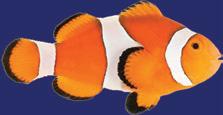
38 WNY Family April 2022
SIGNS OF LEARNING CHALLENGES cont.
Rae Jacobson is senior content and marketing writer at the Child Mind Institute.
Do You Have Concerns About How Your Child is Developing and Learning?
“Supporting families and professionals to empower individuals with disabilities to reach their full potential”
www.parentnetworkwny.org • (716) 332-4170 • info@parentnetworkwny.org
We provide 1-On-1 Support and Education on Disabilities, Special Education and Services. All services are free of charge.
They wear it on their faces, a look of awe covering the wince that comes when they glimpse just how hard this really is. It usually comes when they watch me do something like try to calm my out-ofcontrol little boy or see me wrestle a shoe over my daughter’s foot brace. No matter what is going on the sentiment is almost always the same:
“It takes a special person to do what you do.”



















































































































































































































































And the easy response is “Yes.” It absolutely does. It takes someone with patience and the ability to evaluate an emergency while people look on, not caring what they may think. It takes someone who can decode educational documents and doctor’s reports just as well as a reading of Goodnight Moon. It takes someone who can reframe a lifetime of milestones to ones that fit the unique abilities of their child, while also grieving the losses that come with milestones that will never be reached.

































































































































Yes, it takes a special person.

















































































































































But that’s not how I want you to see me because it’s not the truest version of who I am. Honestly, I don’t see myself as special. I see myself as an ordinary mom. One who loves her kids so much, she would go to the ends of the earth just to make sure they had what they needed. It’s not special, it’s just what we do.
















And I know you would do it, too. If you were facing these same challenges, and dare I say blessings, you would step up. You would go all in, giving up























 — by Rebecca Hastings
— by Rebecca Hastings
friendships and dreams of retirement, letting go of date nights, and seeing more doctors than you ever thought possible. You would do it too.

It’s not special, unique to my situation, it’s parenting.


Instead of thinking, I’m special, maybe you could see what I really am: tired. While I’m not looking for someone to change my circumstances, I am honest enough to tell you that it’s a lot. It requires a lot of me, my energy, my thinking.





















Figuring out the educational plan for my child is tiring. There are meetings and specialists and more paperwork than you
can imagine. And there is almost always a fight to get what they need. It’s a lot.









The medical needs are all intertwined. Therapists and exercises and medications to make daily life a little easier come at a cost, and apparently, I am the bank. Insurance or not, no one is footing this emotional and physical bill but me.























































































































































































































Emotionally, there is no way to quantify the impact. From worry to decisions to stares from other people, it’s all in a day. And that doesn’t even include how it feels to restrain your child just to keep them safe. This is different than a time out, and it breaks you a bit each time, leaving you war-torn weary.
Yes, there are special things about me. But more than that I hope you can see the perfectly ordinary parts of me. The human parts that feel real things even in all the special.
The part that loses her temper even though she knows better. The part that grieves the reality that no one even bothers to ask my child what they want to be when they grow up because they’re as grown as they’re going to get. The part that carries all of this alone because people don’t know how to come alongside and lighten the load.
This piece is inspired by watching my mom walk through parenting multiple children with special needs. She is so very special, even in her humanity.

April 2023 WNY Family 39
I’m
SPECIAL
I hope you see that I am human. I hope you see me. , SPECIAL NEEDS Does your business, agency or organization serve children with special needs in our community? For more information, call 716-836-3486. Their parents are looking for your services all year long. Advertise in conjunction with this informative column and let our readership of 55,000 WNY parents know about your important programs and services each and every month.
Not
I’m Tired
· Evaluations
· Early Autism Program (Preschool)

· Summit Academy (Ages 3-21)
· Respite Programs
· Behavioral Pediatrics Clinic
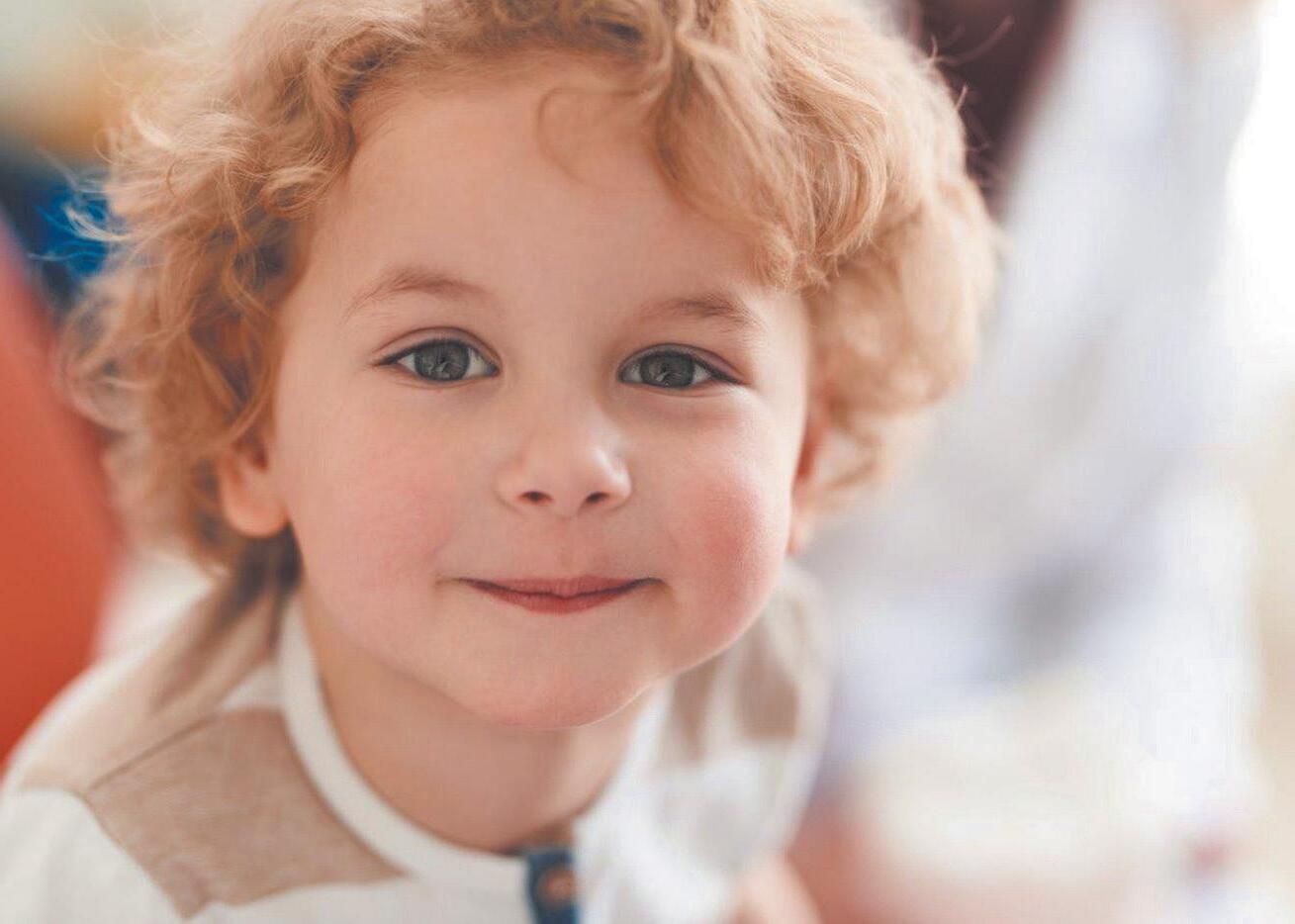
· Recreation & Leisure Programs
· Vocational & Employment Services
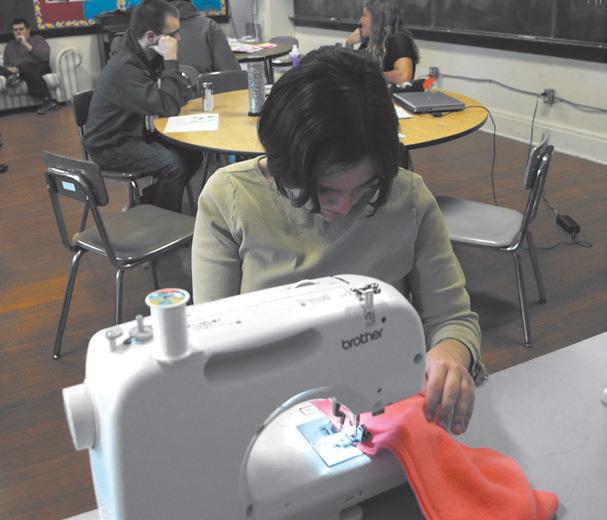
· Adult Programs
· Parent Training
40 WNY Family April 2023 DOES YOUR CHILD HAVE AUTISM? We’re here to help. We are WNY’s largest provider of evidence-based programs and services for autism. Our programs use Applied Behavior Analysis (ABA) methodology – identified by hundreds of scientific studies as the most effective method to teach individuals with autism. Our goal is to help your child lead the most independent and fulfilling life possible. Call 716-629-3400 Visit TheSummitCenter.org Comprehensive services for
and
with autism. Support for your family.
children
adults
— by Deborah Williams
A Unique Northern Pennsylvania Adventure!
Wild elk, trains galore, the historic Horseshoe Curve, massive rock formations, heavenly chocolates, and even some deer and bear abound just a few hours’ drive south of Buffalo in Pennsylvania.
This is the first place where I have seen standard deer signs along the highway followed closely by a bear sign. Alas, I had no bear sightings.
But elk, oh, my — we probably saw 60 elk — many with their majestic horns. We were riding on a horse drawn wagon on the trails at the Elk Country Visitor Center in Benezette, Pennsylvania, about a 3-hour drive from the Buffalo area.
The center, opened in September 2010, was created through an alliance of the Pennsylvania Department of Conservation and Natural Resources and the Keystone Elk Country Alliance. In its first four months, the center had more than 51,000 visitors from 46 states and 16 countries. The center now draws about 500,000 visitors annually.

One of the most important goals of the center is to teach and instill an appreciation for the natural beauty and wonder found in Pennsylvania’s elk country. The center is in a region designated as the Pennsylvania Wilds, consisting of two million acres of public lands covering 12 counties, with 16,000 miles of streams and waterways, 2,067 wild trout streams, 1,800 camp sites, 500 miles of horseback riding trails, 99 boat launches, and more.
Fall is the mating season and bull elk can often be seen at the forest edge preparing to battle other males for the right to mate. Dawn and dusk are the best times to observe elk. In the winter, elk typically seek warmth and shelter among the trees. As the weather warms, elk move to the meadows to feed on plentiful grasses. Early summer offers the chance to spot newly born elk calves.
“Eastern Woodland elk roamed wild in Pennsylvania and along the Eastern Seaboard,” explained Ben Porkolab, conservation education coordinator. “But by the 1860s they were extinct because of loss of habitat and overhunting. Starting in 1913, the Pennsylvania Game Commission began importing Rocky Mountain Elk from the western U.S.”
Today the herd of about 1,400 elk roams over ten counties where 80% of the land is public protected land.
Every weekend the center hosts free programs on wildlife topics. Join a staff member for a walk on the trails as you learn about the lives of elk, elk history, elk ecology, and elk behavior. Have you ever wanted to find some deer or elk antlers? There’s a program that offers tips on where to find them in the woods.
The center also offers an array of educational exhibits and the 4D immersive theater show. The Discovery Room was designed especially for children and families, and offers hands-on learning experiences. Want to feel the weight of an elk antler? They are heavy. Have you ever been up close and personal with a black bear? You can do that here.
There are three wheelchair accessible observation trails with viewing areas and displays. They lead to areas where you can see elk in a natural setting.
The Pennsylvania Game Commission urges visitors to “Be Elk Smart.”



• Give elk space. Keep a distance — of at least 100 yards — between you and the elk. Never approach them. Elk are wild animals that are unpredictable and sometimes aggressive, especially during the fall breeding season; cows are also known to defend their young when they feel threatened.
continued on page 42
April 2023 WNY Family 41 FAMILY TRAVEL
• Never feed elk. Not only is it illegal but it teaches them to associate people, cars, and homes with food. This could cause them to approach people looking for more. Feeding also promotes the spread of infectious diseases by having them unnaturally congregate into small areas.
• Don’t name elk. Characterizing elk, or any wildlife, by naming them degrades their wild essence. The very reason people are drawn to the elk is their unaltered independence from humans. Personifying elk as humans takes away from their truly wild nature.
• Do your part. The welfare of the elk herd is a shared responsibility. If you see someone being disruptive or careless, whether intentional or not, kindly ask them to stop or report it to the Pennsylvania Game Commission’s Northcentral Region.
Train fans should not miss a visit to Railroad City, otherwise known as Altoona. It would make a good Jeopardy item: The correct answer: “What was the largest railroad community in America.” It was also the largest railroad shop complex in the world.
A favorite saying in the area was: “Railroading is Altoona and Altoona is railroading.” Lives of the residents revolved around the railroad and they even “talked railroad.” “You get three railroaders together; all they’re going to do is sit there and railroad.”
Altoona, which lies about 90-minutes south of Benzette, was established in 1849. The canals of western Pennsylvania were quickly becoming antiquated
modes of transportation. The far-seeing founders of the Pennsylvania Railroad, chartered in 1846, were laying track into the rugged Allegheny Mountains. By 1850 the PRR completed its westward terminal at Altoona. The company was responsible for the city’s infrastructure and constructed or sponsored most of the city’s major buildings: schools, libraries, and hotels. It was the very definition of a company town and remained so for more than a century. The railroad shops at Altoona were celebrated as the “Standard of the World.”
The Railroaders Museum tells the tale of everyday people during a century known as the Industrial Age. The museum’s leaders like to boast that Altoona is home to America’s only interactive railroader museum. It is housed in the Pennsylvania Railroad’s former 1882 Master Mechanic’s Building, the sole survivor of Altoona’s Machine Shops.
The Roundhouse houses the Museum’s most prized possession, Pennsylvania Railroad K-4 Locomotive 1361, currently under restoration.
The museum also operates the Visitors Center at the Horseshoe Curve. It tells the tale of this engineering marvel. In the early 1850s, the massive front of the Allegheny Mountains blocked westward advance. For three grueling years, job-hungry Irish immigrants dug through

the near-impenetrable geographic formations. Using switchbacks, excavations, and innovation, engineers reduced grades and conquered the mountains.
The Curve became known as one of the engineering marvels of the world. It opened on February 15, 1854. Since then, it became a tourist destination, a target of Nazi spies, and one of the nation’s primary east-west arteries of railroad travel. The site includes a small museum, orientation films, and observation areas. There is a funicular (under maintenance now) to access the tracks. There are also stairs. During our visit, a train traveled through the curve as if on cue for all to witness.
The Eagle Iron Works, and its nearby workers village in Bellefonte, is another testament to the region’s industrial heritage. Irish immigrant Roland Curtin began this iron making company and the business continued in operation for 112 years. It was the last surviving charcoal fueled iron furnace in the state.

Visitors are invited to step into life in a mid-1800s iron-making village. Take a self-guided tour or schedule your visit with guides in period dress who bring buildings and grounds alive with their stories. Tours include the Curtin Family Mansion built 1830-31 filled with period furnishings, blast furnace and iron-making complex, workers’ village and personal carriage of Pennsylvania’s Civil War Governor, Andrew Gregg Curtin.

42 WNY Family April 2023
FAMILY TRAVEL continued...
About 15 miles northeast of Altoona is the place for all candy and chocolate lovers —Gardners Candies in Tyrone. Walk through the door and there is the heavenly aroma of chocolate and candy everywhere. This is not just a candy store; it is also a candy museum and ice cream parlor that attracts visitors from and near and far.


It was founded in 1897 by a 16-year-old boy named James “Pike” Gardner. He operated out of a small store in downtown Tyrone. He later added a horse-drawn wagon so that he could transport and sell candy, popcorn, and peanuts at local fairs and carnivals.
Gardners grew over the years by expanding its product line to meet customer demand. It is famous for the Original Peanut Butter Meltaway, a creamy, smooth peanut butter dipped in rich chocolate. As a long-time chocolate lover, I can confirm the meltaways are extra special.
Bilger’s Rocks is a massive, 300-million-year-old rock formation covering about 20 acres in neighboring Clearfield County. The formations tower up to 50 feet above ground level. The most striking feature are the various openings, crawlspaces, arches, and passageways — offering unique hiking opportunities. The park includes a playground, camping and recreational areas.
Travel Tip of the Month: For Pennsylvania information go to visitpa.com. For the elk visitor center visit elkcountryvisitorcenter.com or call 814-787-5167. Be sure to check out the Kid’s Fun Page. For Altoona train museum visit railroadcity.org or call 814-946-0834.



For Gardners Candies visit gardnerscandies.com or call 814-684-0857. For Eagle Iron Works and Curtin Village visit curtinvillage.com. For Bilger’s Rocks visit thebilgersrocks.com.
Deborah Williams lives in Holland, NY and is a veteran travel writer whose work has appeared in national and international publications. She is the recipient of the Society of American Travel Writers’ Lowell Thomas Gold Travel Writing Award.
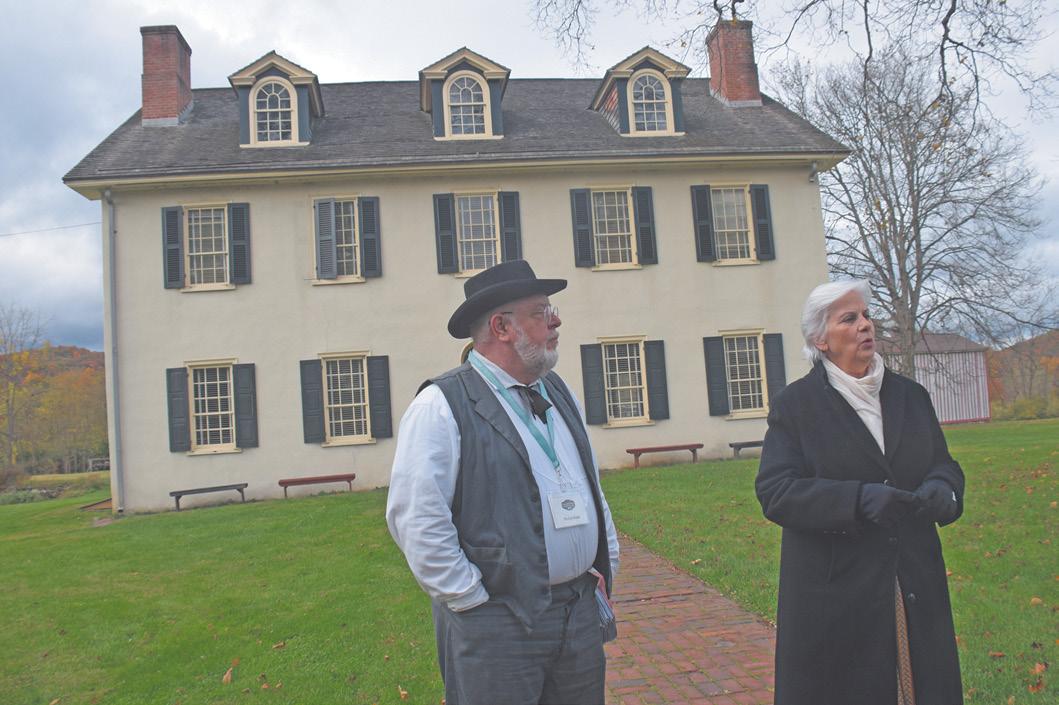
April 2023 WNY Family 43
RAISING DIGITAL KIDS
— by Mike Daugherty and ChatGPT
Innovations in technology have the power to revolutionize the world. For instance, Google’s search engine debuted in 1999 and was far superior to its competitors, making it easier to find information online. The iPhone was another game-changer, bringing the power of the internet to people’s fingertips no matter where they were. Both of these technologies fundamentally transformed the world. A new major innovation was released to the public in November 2022, and we’re already seeing how it’s going to change the world.
User Friendly Artificial Intelligence

ChatGPT is an artificial intelligence (AI) language model that can generate human-like text based on a given prompt. This model is trained on vast amounts of text data, such as books, articles, and websites, to learn the patterns and structure of human language. ChatGPT uses a transformer technique, which allows it to generate high-quality text with remarkable accuracy and coherence. Following on the viral success of ChatGPT, Google has released Bard, and Microsoft is integrating AI language models into Bing. Several other companies have indicated they are also working on similar technologies.

To give you an idea of what ChatGPT can do, imagine typing a question on any topic and receiving a written response that looks like a human wrote it. You could ask it to write a 1000-word essay on
“Catcher in the Rye,” and it would produce an original work in about thirty seconds. You could also ask it to rewrite the essay to look like a 7th grader wrote it, and it would adjust the language accordingly. I have used it to revise my bio, write poems, provide potential titles, and to write portions of this very column. I would highly recommend anyone reading this to give it a try before reading further. You can set up a free account at https://chat.apps.openai.com/.
That’s cheating, right?
Well, that is a bit of a gray area. Using ChatGPT or any AI to generate an entire essay or assignment without any original input or critical thinking on the part of the student would be unethical and could be considered a form of plagiarism. Trying to prove that an assignment was written by a computer is much more complicated than you might think. As a result, many schools have banned or are considering banning the technology. (See https://bit.ly/3ZUD6fI)
The Problem with Banning
The problem with banning the use of this revolutionary technology is that it’s impossible to prevent students from accessing it. They can easily access the
site on their phone or other computer. Moreover, we need to embrace this new technology and teach students how to use it appropriately. Just like when Google search first appeared, many people were concerned that students would use it to find all the answers to their questions. But teachers eventually embraced the tool and started teaching proper use of search technology in schools. We need to take a similar approach with these new AI tools. The sentiment being shared online right now is “This AI will not take your job or get you into a good school. Someone using this AI will.”
How could it be used?
While it is not specifically designed for educational purposes, there are several ways that parents can use ChatGPT to help their students with their studies:
1. Writing assistance: One of the most useful ways to use ChatGPT is as a tool to assist with writing assignments. For example, parents could provide a writing prompt to ChatGPT and use the generated text as a starting point for their student’s writing. Students can also use ChatGPT to generate ideas, find synonyms, or get suggestions on sentence structure.
2. Research assistance: ChatGPT can also be used to help students with research. Parents could provide ChatGPT with a research question, and the AI language model could generate a list of relevant sources or provide a summary of the topic. Students can also use ChatGPT to find definitions, quotes, or other information related to their research topic. While ChatGPT is typically accurate, even AI can make mistakes. Students would want to fact check the research.
3. Test preparation: ChatGPT can also be a useful tool for test preparation. Parents could provide ChatGPT with a list of key terms or concepts, and the AI language model could generate definitions or explanations. Students can also use ChatGPT to practice writing essays or responses to test questions.
44 WNY Family April 2023
The Tech Revolution Your Children Can't Afford to Miss _ And Neither Can You!
The Tech Revolution Your Children Can't Afford to Miss _ And Neither Can You!
Language learning: ChatGPT can be particularly useful for language learning. Parents could provide ChatGPT with a sentence in a foreign language, and the AI language model could generate a translation. Students can also use ChatGPT to practice writing or speaking in a foreign language by providing prompts and having ChatGPT generate responses.


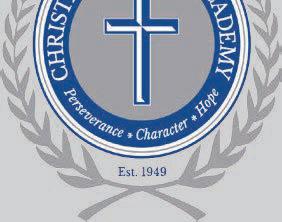

5. Comprehension: Parents could ask ChatGPT to generate a short story with questions to check younger learners’ comprehension. Consider asking it to generate a fantastical story about your family or your children’s favorite characters.


6. General knowledge: ChatGPT can also be used to help students learn about a wide range of topics. Parents could provide ChatGPT with a question about history, science, or literature, and the AI language model could generate a summary or explanation. Students can also use ChatGPT to learn new vocabulary, facts, or trivia.










































In Conclusion






It’s important to note that while ChatGPT can be a useful tool for students, it should not be relied upon as a substitute for critical thinking or original work. AI relies on a human to provide it with a starting point. Consider what types of questions to ask and to always think critically about the information they receive. Parents should encourage their students to use ChatGPT responsibly by thinking critically and creatively.
Mike Daugherty is a husband, father of three young children, author, speaker, Google Innovator, and possible Starbucks addict. He is a certified educational technology leader who has served in a variety of roles through his twenty-year career in public education. Currently, Mike is the Director of Technology for the Chagrin Falls Exempted Village School district in Northeast Ohio. As an IT director he has developed creative, well thought out solutions that positively impact teaching and learning.
April
April
April






April 2023 WNY Family 45 4.
Celebrate these FUN DAYS during the month of April 1st Kids Yoga Day
2nd Children’s Book Day
8th Zoo Lover’s Day
2nd Peanut Butter & Jelly Day
11th National Pet Day
April
April
April
April
12th
Cheese Sandwich Day
Grilled
26th
Day
Pretzel
28th
Day
Superhero
Daddy Daddy The Track







































































































































































































































































 – by Shannon Carpenter
– by Shannon Carpenter




Don’t Make the Alpha Buffalo Angry Fatherhood Lesson #1:

Don’t pet the alpha buffalo or it will charge the covered wagon. This is one of those pieces of advice that were given on the Oregon Trail but rarely do you hear it said now. That is the problem with modern fatherhood. Some pieces of advice should be eternal. But nope, they just give you a baby and tell you to figure out the whole buffalo thing on your own.
It would have helped me as I took sixteen kids and five dads to see a herd of buffalo and elk on the open plains of South Dakota. The adventure was billed as a grand tour of the way things used to be. A way for our children to reconnect with a simpler time. I convinced the dads to load up their toddlers, eight-year-olds, and a few double-digit kids to go have an adventure with me.


Then we learned there was a lot that we didn’t know about fatherhood.
“Don’t pet the alpha buffalo or it will charge the covered wagon,” the tour guide said. She reminded me of a grandmother that could make you a cake using nothing but freshly picked wheat and a pound of lard.
“They get pretty big, and it wouldn’t be good for the wagon,” she said. Personally, I didn’t think it would be good for my children. Buffalos weigh in at around 2,000 pounds. How am I to tell a bunch of toddlers not to touch the fluffy cow?







We set off in our wagon, which was a trailer with a tarp over the top, pulled by a tractor. As we left the farm and headed out into the prairie, I learned even more. For example, elk can shed the “skin” off their antlers, and it can be harvested to make

pills that cure all kinds of ailments!



For the low price of $29.95, this miracle antler cure could be ours. Now I felt like I was back in the old west, and I forgot about the buffalo crushing us.


Soon we came upon the herd of beasts. It’s one thing to say that they are 2,000 pounds. It’s quite another thing to see it. When they came charging at our little old wagon, it became a lot more real. How was I supposed to know which one was the alpha. They just said not to pet it, not how to identify the alpha in a large herd. It would help if he was wearing a hat and hold-




ing a clipboard. The next lesson in fatherhood should be how to pick out the alpha buffalo.





It would have come in handy. What didn’t come in handy were 32 juicebox-sticky hands immediately shooting out of the wagon to pet the buffalo. The odds were that one of the 50 in front of us would be the alpha.
The truth is that most of us don’t know what we are doing. Parenting is constantly changing and the lessons we learned yesterday are not needed tomorrow. Our kids grow and when they do, we have new issues to deal with. But I trust my village; the group of dads that I have raised these sixteen kids with.
We quickly employed a zone defense. Larry, a tall guy with a great wing span, took the back of the wagon. I pulled hands back from the front, and the other three dads rotated in the middle. In this way, we were able to handfeed buffalo without making them mad. I consider this one of my greatest life accomplishments.
There is so much to learn as a parent. Sometimes it’s simple, like don’t let a teething baby chew on your finger. But often the lessons we really need don’t become apparent until we are in the middle of a herd of buffalo. Those are the lessons that always stick with me and the best way to learn them is to be active in my kids’ lives. To not be an observer, but instead be the guy that says “Hey, who wants to go feed some buffalo?” Those are the lessons that make the greatest memories.
Shannon Carpenter is the father of three and has been a stay-at-home dad since 2008. He’s the author of the book “Stay-at-Home Dad: Your Essential Manual for Being an Awesome FullTime Father.” as well as the co-host of Dadhouse Pod. In addition to his writing on parenting, he is also a humor writer trained through the famous Second City. And we all know that having a sense of humor is essential to surviving parenthood!
46 WNY Family April 2023
Family Movie Options: In Theaters and Streaming Online

Determined to increase his social cred and impress a girl, Chang makes a bet with his frenemy, Matt. In ten weeks, Chang will learn to dunk and will prove it publicly. This begins as a standard sports film with training montages and on court footage. It gets more interesting when Chang undergoes some serious selfassessment, acknowledges his errors, and rebuilds his important relationships Full of empathy for the trials of adolescence, this film is a slam dunk for families.

When Mills agrees to pilot a deep space voyage, he doesn’t expect to sustain asteroid damage and make an emergency landing on an unknown planet . It’s 65 million years ago and Earth is dominated by dinosaurs, so the journey Mills and the other survivor must make to the escape pod is extremely dangerous . This could have been an interesting film but choppy editing, bad special effects, and unconvincing dinosaurs suck out all the fun. Photo © Sony Pictures
A series of bad choices leave basketball coach Marcus Marakovich unemployed and sentenced to 90 days community service, coaching a team of players with intellectual disabilities. This starts off as a typical underdog sports flick but shakes up the formula in the service of its message about the value of having different ways of seeing the world. The movie overflows with positive themes about dignity, respect, and redemption but is undermined by crude sexual conversations and a transactional sexual relationship. Photo ©Focus Features
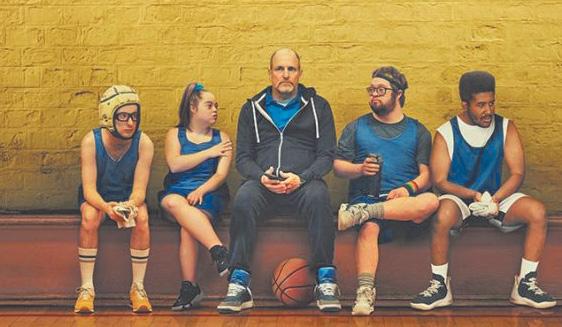
When Donnie Creed’s old friend, Damian appears at his gym after spending 18 years in prison, Donnie agrees to help him start a pro boxing career. But Damian has a bigger agenda – one that will hurt Donnie. This production hits all the beats of a basic boxing movie but stands out for providing an emotional character story and some highly skilled cinematography. It also contains a fair bit of boxing-related violence and some profanity. Photo © United A rtists Releasing

Ant-Man’s daughter Cassie is busy investigating the Quantum Realm, an area of existence smaller than sub-atomic particles. Her equipment draws her, Ant-Man, and some friends into the realm, where they confront Kang, a supervillain who wants to conquer the multiverse. This film features a bland plot, non-stop, digitally enhanced violence, and familiar messages about courage, loyalty, and determination Photo © Disney Motion Pictures Studios

Detailed reviews available at www.parentpreviews.com

April 2023 WNY Family 47
Chang Can Dunk Theaters Rating Overall Violence Sex Profanity Alcohol/Drugs PG B + B A - B+ B+
65 Theaters Rating Overall Violence Sex Profanity Alcohol/Drugs PG - 13 C - C - A C A
Photo © Disney+
Champions Theaters Rating Overall Violence Sex Profanity Alcohol/Drugs PG - 13 B - B C+ D+ C -
Creed III Theaters Rating Overall Violence Sex Profanity Alcohol/Drugs PG - 13 B - C A C C
Ant-Man and the Wasp: Quantumania Theaters Rating Overall Violence Sex Profanity Alcohol/Drugs PG - 13 B - C+ A C B
Special Advertising Section

For more information, call (716) 608-1010 or visit: www.zpac.biz
Summer Intensive
July 18th, 19th & 20th
Ages 1.5 - Adult are welcome!
Competition Team (New & Returning) MUST take all 3 days
Fall Open Houses:


August 27th from 1-4pm
August 31st from 4-7pm
Sept. 3rd from 1-4pm
See
Competition Team New & Returning Members Audition
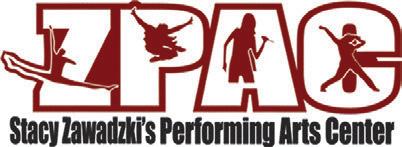
Wednesday, August 30th 4:00-8:30pm
Day Camp and Resident/Sleepaway Camp Programs available for girls entering grades K-12 in fall 2023





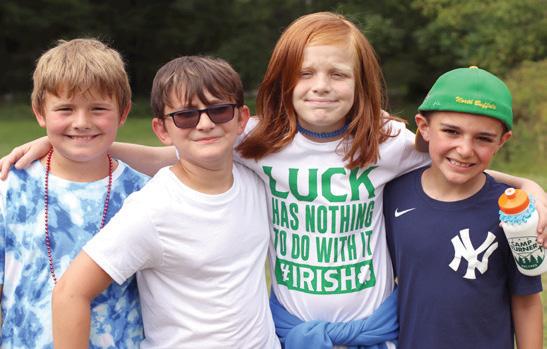
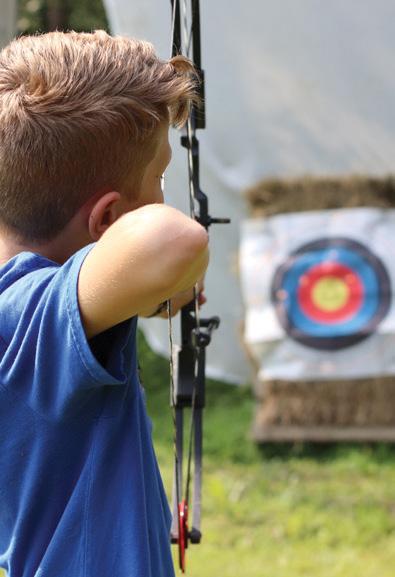
Ages:

48 WNY Family April 2023
Junior Sailing Camp We Teach Sailing! Enrollment is Open, Sign Up Now! info@sail-buffalo.org 716-432-6589 www.sail-buffalo.org Sail Buffalo Sailing School
Buffalo Weekly Sessions
Sail
7 - 18
website
for classes
www.zpac.biz
Award Winning Academy of Theatre Arts 2023 Summer Programs at the ATA Theatre

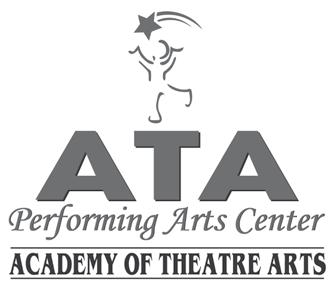
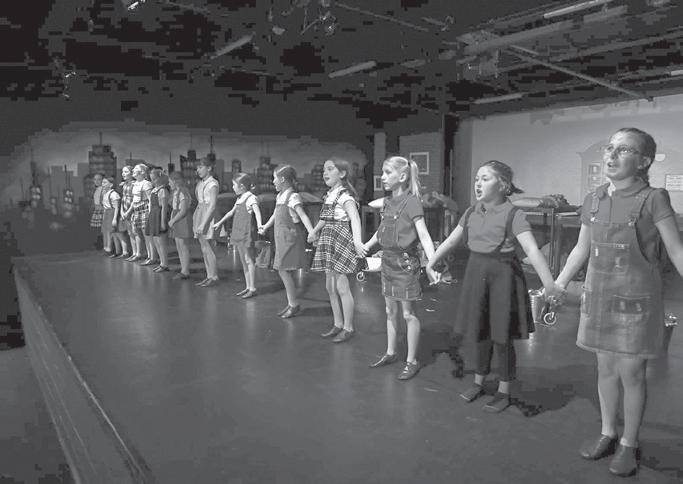




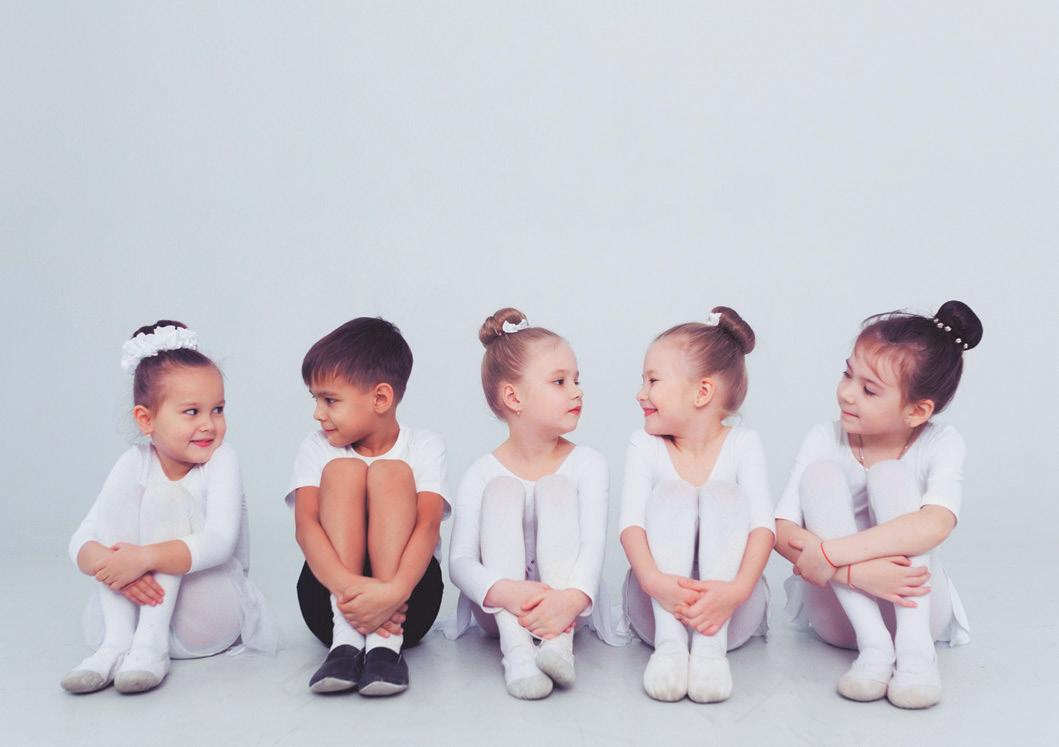
BREAK CAMPS WINTER & SPRING
Turn your next school break into something special!
As part of our NEW Break Camps, you’ll spend your week off acting, singing, and dancing your way into a new show, culminating with a live performance onstage!

Broadway at ATA: July 10th – 21st


Monday – Friday - 9:00am – 4:00pm
$450 *$425 If Paid In Full by March 1st
You don’t want to miss this fun and exciting program here at ATA This camp, strictly for older theatre performers, will consist of intensive voice, theatre and dance workshops. We also put a focus on public speaking, team building and problem solving during this camp; skills the students can use throughout their lives! Students will learn what it takes to put on a musical not only on stage but off stage as well. Students will audition and be cast in the full musical production of “ROCK OF AGES”!
Onstage at ATA: July 24th – August 4th
Monday – Friday - 9:00am – 4:00pm



$450 *$425 If Paid In Full by March 1st
This camp, for our middle school students, will consist of voice, theatre and dance workshops. We also put a focus on public speaking, team building and problem solving during this camp; skills the students can use throughout their lives! Throughout the two weeks students will also create their own musical as a team from the set, costumes, and musical numbers. Students will learn what it takes to put on a musical not only on stage but off stage as well. Students will audition and be cast in the full musical production of “ROCK OF AGES YOUTH EDITION Register
Catch A Rising Star: July 24th – 28th - August

7th – 11th - August 14th – 18th - August 21st – 25th
Monday-Friday - 9:00am-3:00pm
$250 *$225 If Paid In Full by March 1st
This popular one-week camp will allow you to be part of a fun-filled production of “SCHOOL HOUSE ROCK LIVE”. Join us for a week of singing, dancing and making new friends! In just one short week, students will learn lines, musical numbers and important team building skills. During this one week, we place an emphasis on public speaking and being comfortable stepping out of your comfort zone!

Broadway Babies: August 7th – 11th


Monday-Friday - 9:00am-12:00pm (snack provided)

$155


Students work on public speaking and confidence on stage through dramatic play and storytelling. At the end of the week students put on a dramatic reading of a story book!
Summer on the Silver Screen: July 24th – August 3rd
Monday-Thursday - 3:00pm-7:00pm
$305
Our “Summer on the Silver Screen” camp takes students behind the scenes of their very own film! During this two-week intensive camp, campers will learn the basics of screenwriting, cinematography, and film editing, all while starring in their own movie scenes on the big screen.
Behind the Scenes: July 17th – 21st

Monday-Friday - 9:00am-1:00pm

$175
Learn about the magic that happens onstage long before the curtain goes up as part of our Behind-The-Scenes Summer Workshop! In this one week intensive summer camp, students will learn the art of backstage production design. From creating props to designing sets to learning the ins and outs of sound and light production campers learn new skills daily over the course of this exciting camp workshop.
April 2023 WNY Family 49 BALLET INTENSIVE WORKSHOP
Beginning, Intermediate
Advanced Levels
Email: info@BalletBuffalo.com Web: BalletBuffalo.com Register Now! SUMMER DANCE
and CLASSES for ALL AGES Weekly Sessions Beginning July 3th, 2023 Contact us now for more information Phone: 716-204-8192 5353 Main Street, Williamsville, NY.
Theatre Camps ~ Ages 7+ August 14-18
Dance Camp ~ Ages
Ballet
4231 Transit Road, Williamsville, NY 14221
August 14-18 and 21-25 (One or Both Weeks)
and
(Two years prior training required)
CAMPS
Musical
Storybook
3-6
Mini Intensives ~ Ages 7+
To Register or for more information call 716-810-0551 or Visit www.academyoftheatrearts.com/summer-at-ata/
ds TO
For
by March 1st & Save!
REGISTER VISIT SHEAS.ORG
more information email arainey@sheas.org
Princess Camp













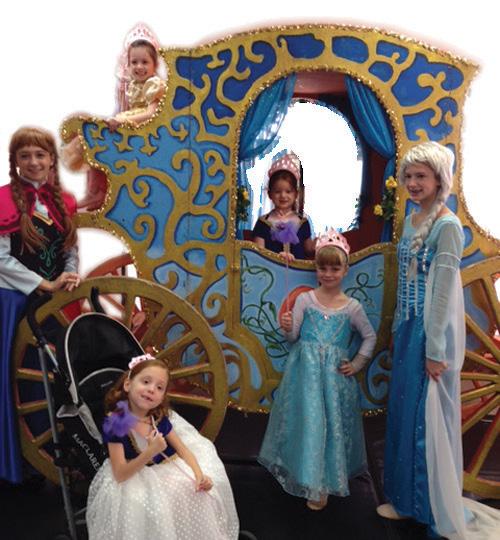

50 WNY Family April 2023 Special Advertising
Every little girl dreams of being a Princess. Make her dreams come true at the American Academy Princess Camp.
Section
491 West Klein at Hopkins, Williamsville Call 688-4774 for more details The weeks of June 26th, July 10th, July 17th All Classes are Grouped by Ages 4-8 Our Princess Camp will enchant her with: Dance, Theatre Games, Etiquette, Tea Parties, Crafts, Princess Costumes, A Life Sized Cinderella Carriage & A Visit From Prince Charming Every Friday! CENTER STAGE DANCE STUDIO - Certified member of Dance Educators of America★ 716-634-3395 ★ www.csds .dance 4837 Union Rd., Cheektowaga (Near Cleveland Dr.) Summer Dance Workshop CLASSES OFFERED IN Jazz, Tap, Ballet, Hip Hop, Combination Class – Ages 3-5, and Mommy & Me. ACRO CAMP July 12, 19 & 26 August 2, 9, 16, 23, 30 Beginner, Intermediate & Advanced Levels Beginner, Intermediate & Advanced Levels July 17-21 • August 21-25 5 Studios Ample Parking Multiple Class Discounts Also Accepting Fall Registration
Important Questions to Ask About Camp
During the pandemic, spending warm, sunny days at summer camp was impossible. Now that “normalcy” has returned, don’t get complacent. The best camp spots are filling fast! Check out the offerings on these pages to see if there’s a program to fit your child’s interests!

While camp may be a necessity for working parents who need to make sure their child is cared for when school is no longer in session, it’s actually a wonderful opportunity for children to learn life skills, expand their world, make new discoveries, and establish new friendships. It also helps kids develop a sense of independence and self-confidence, as well as the ability to work with others as a team.
Camp is a natural extension of the classroom — today’s camps offer many traditional activities such as swimming and arts and crafts, but there are many creative and exciting opportunities to explore specific areas such as learning a foreign language, performing in a theater production, riding a horse, or learning to dance.
In today’s techno-oriented world, summer camp gets them away from the screen and outdoors to interact with the natural world. Sports and physical activities get kids moving — literally — toward increased fitness.

Just as no two children are alike, camp environments, activities, and personnel can differ widely, so be sure to ask plenty of questions when seeking the ideal camp situation for your child this summer.

Some important questions to ask are:
1) How does the camp recruit its staff? What type of training do the counselors have? How old are they? Are background checks done? Do they have first aid training?
2) What is the ratio of counselors to campers? Day camp guidelines call for 1:8 for children ages 6-8; 1:10 for children ages 9-14; and 1:12 for ages 15-18.

3) Are campers grouped by age, activity, or both?

4) What does a typical daily schedule look like?
5) Is transportation available? What is the cost?
6) What about extended care before and after camp? What is the cost?
7) Does the camp provide lunch or must campers bring their lunch?
8) Does camp tuition include the full range or activities or are their extra fees for field trips?
8) Ask about return rates. How many staff members return each year? How many campers return? Ask for references — talk to some parents who have recently sent their children to the camp.
Visit the American Camping Association’s website at www. acacamps.org for more complete parent checklists to help you determine if your child is ready for a summer camp experience and the questions to ask when “interviewing” a camp to see if it’s a good fit for your child and your family.
at mount st. mary academy

April 2023 WNY Family 51
Summer 2023








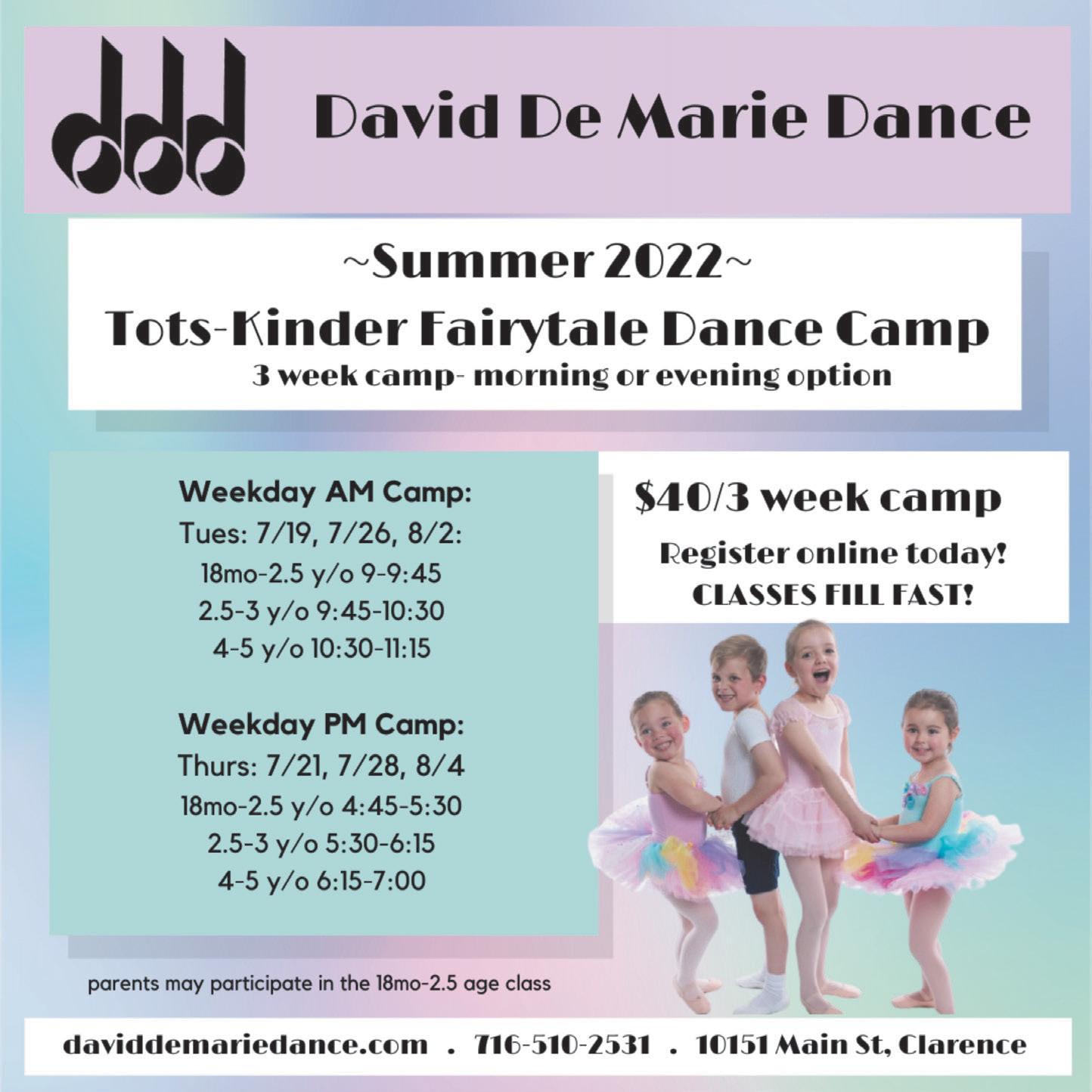

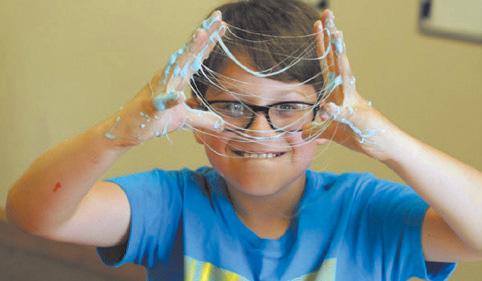



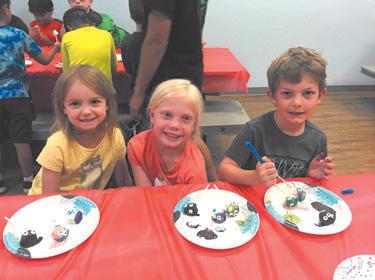
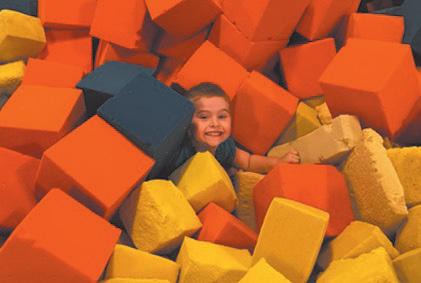
52 WNY Family April 2023 Special Advertising Section daviddemarie.com • 716.510.2531 • 10151 Main St. Clarence, NY David De Marie Dance 3 WEEK CAMP MOMMY/ME: AGES 18MO - AGE 2.5: $40 July 11, 18, 25 - Tues AM: 9:00 - 9:30 July 12, 19, 26 - Weds PM: 4:00 - 4:30 TOTS BOP: AGES 2.5 - 3 : $50 July 11, 18, 25 - Tues AM: 9:45 - 10:30 July 12, 19, 26 - Weds PM: 4:45 - 5:30 KINDER DANCERS: AGES 4 - 5: $50 July 11, 18, 25 - Tues AM: 10:45 - 11:30 July 12, 19, 26 - Weds PM: 5:45 - 6:30 WEEKLY THEMES FOR TOTS & KINDERS! REGISTER ONLINE TODAY! CLASSES WILL FILL Be sure to check out the website for more exciting summer offerings! ~ Summer 2023 ~ Tots-Kinder Fairytale Dance Camp Give your child a 4 Convenient Locations East Amherst • Amherst • Lancaster • Orchard Park 9 weeks of fun for Ages 5-12 WORLD CLASS SUMMER! BuffalosBestSummerCamp.com H Large variety of sports and games H Creative art projects and challenges H Confidence building Taekwondo training (Nopriorexperienceneeded) H Cool weekly field trips at no additional charge
Summer 2023







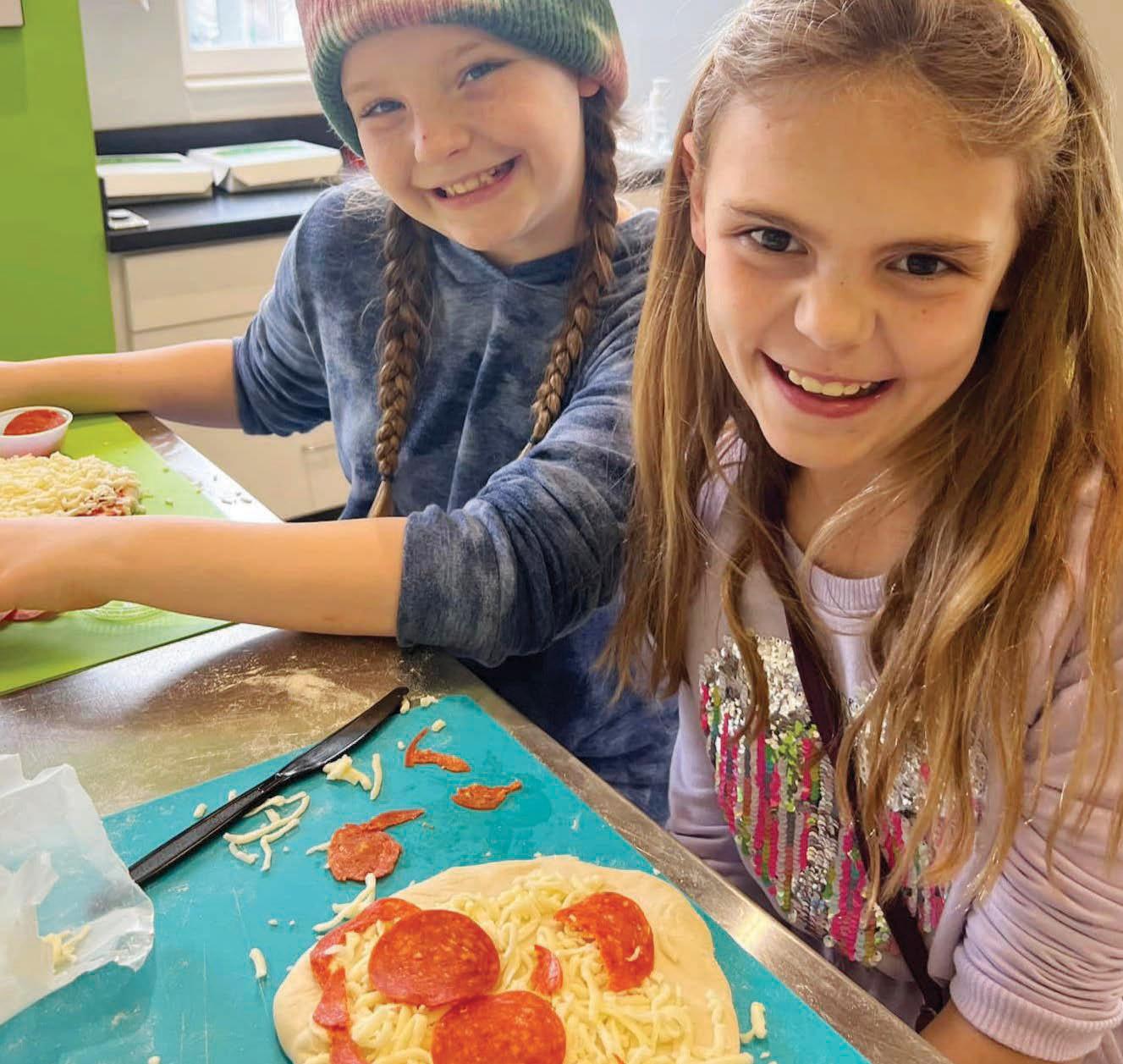
Think Summer





April 2023 WNY Family 53 949 Englewood • Buffalo, NY 14223 Official School of the Greater Buffalo Youth Ballet 835-3585 or 796-9102 | www.rabanddance.com Summer DANCE Intensive July 3 - 28, 2023 Ages 7yrs - 18yrs Monday - Friday 10am - 4pm Exciting Guest Teachers!!! RESERVE YOUR SPOT NOW! with DANCE this Summer Fall in Love August Pirates & Princess CAMP August 14 - 18, 2023 Ages 2 – 6 1/2 Day Summer Literacy Camp & Individualized Literacy Tutoring 2 Summer Literacy Programs Offered! 716-645-2470 www.buffalo.edu/clari ub-clari@buffalo.edu 70 Weiss Ave. • Orchard Park/West Seneca (Near Duff’s & Leisure Rinks) • 677-0338
• NEW!! Mini Camp group addedTues/Thurs 12:30-3 in addition to our returning times of 9:30-noon or 12:30-3:00 on Mon/Wed. • Quality Gymnastics: Ages 1-18yrs ~ Weekly Themes • Trampoline & Tumbling Classes: 7-18yrs • Open Tumble/Cheer Class July/Aug. - Mon. 8:50-9:45pm • July/August Open Workouts - Wed. 7:15-9pm
8 WEEK PROGRAM Starts July 3rd www.gymnastics-unlimited.net
Summer

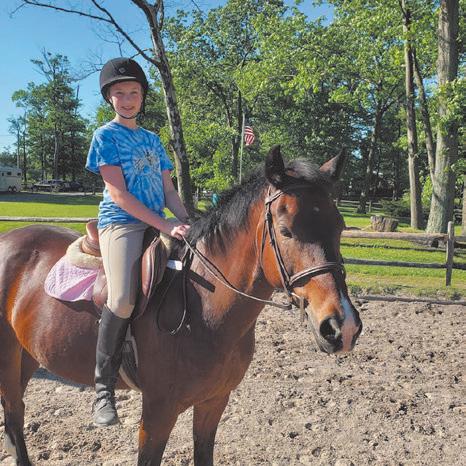



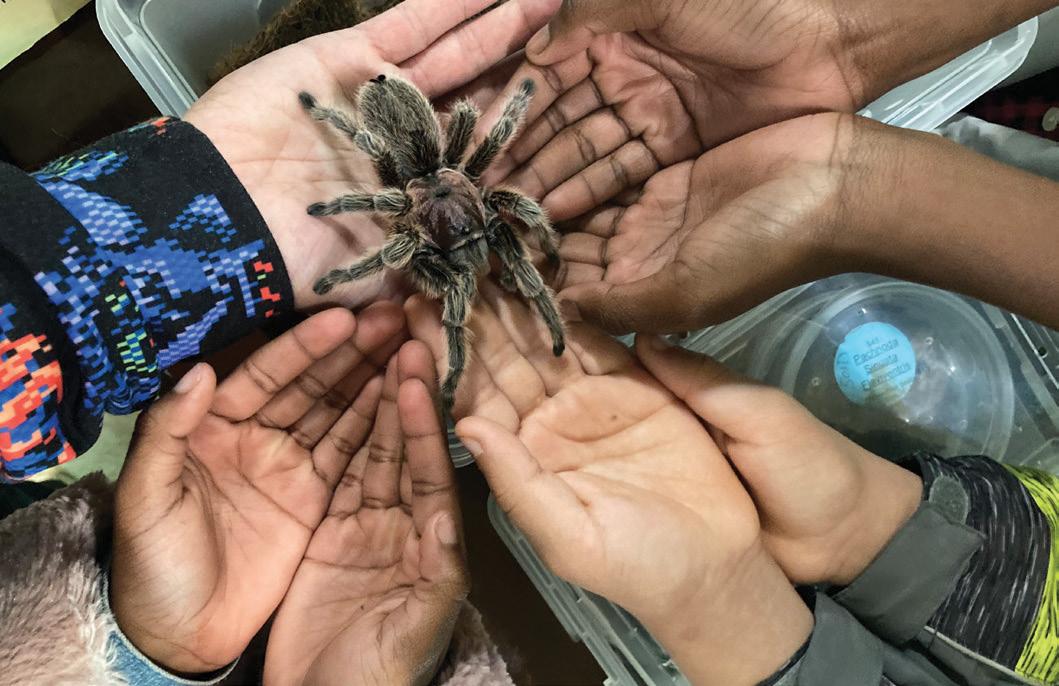
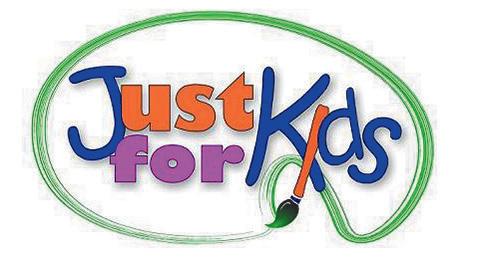
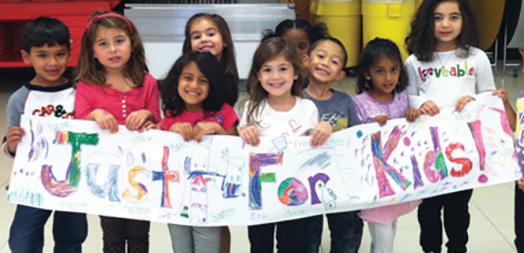



54 WNY Family April 2023 www.fourseasonsfamily.com four seasons Camp @ 9 mile island 1 Orbit Drive Nine Mile Island • Amherst FOUR SE ASONS CHILDCARE CENTER & PRESCHOOL 1639N.FrenchRd.,Getzville,NY14068 EARLY ENROLLMENT SPECIALS Call 568-1140 • Water Activities • Hiking • Arts & Crafts • In-house visitors • Great Outdoor Fun and much more! Skibbereen Farm 5142 Bussendorfer Road • Orchard Park, NY 14127 www.skibbereenfarm.com • 648-1908 HORSE CAMP at Skibbereen Farm • Learn basic riding skills • Safety rules around horses • Horse care • Saddlery • Basic first aid June through August • 9am-1pm Registration Form Online Cost: $375/Session Register @ www.secondgenerationtheatre.com/classes Register for one week or both! Acting, dance, singing, and MORE! Open to students ages 6-13 SGT SUMMER THEATRE CAMP July 10-14 & July 17-21 M t . S t . M ary a cade My 3756 DELAWARE AVE. KENMORE 14217 716-639-8500 For Kids ages 4-12 Best Places To Work FinalistBuffalo Business First, 2023 Today’s families and
for Kids! Before and After School Programs
CLUB
SUMMER DAY CAMPS Full and Half Day Rates Available Register
Special Advertising Section
staff choose Just
SUMMER
LOCATIONS: Forest Elem., Williamsville, Windermere Elem., Amherst Union East Elem., Cheektowaga, Huth Elem., Grand Island; Heritage Heights, Sweet Home
Online: www.justforkidsonline.org
Iwas sitting in my car in the parking lot of a banquet hall. I wasn’t there to attend a wedding or silver anniversary dinner. No, I was there waiting for my fifteen-yearold son.
Moments earlier, I had watched him walk into the office at the banquet hall. He looked so official, dressed all in black. He was reporting for his first day of work as a kitchen assistant.
With this part-time job, I hoped he would learn what all of us have learned from our first jobs: how to manage your time, respect your boss, be responsible, and work hard. I was looking forward to him earning his own money, too.
And can I add that by working a part-time job that summer he wouldn’t have so much free time to play video games? That pleased me, too.
I was waiting in the parking lot, though, because I was unsure if he needed me for anything. He had turned in his work permit and employment forms earlier in the week, but was everything in order? Did he need my signature one more time? A reminder of his social security number? And his employment contract had said no cell phones, but would he have a place to stash his or did he need to leave it with me in the car?
To be honest, it felt a bit like the worrying and hovering I had done that first day he went to kindergarten.
And just like that first day, I learned
TWEENS & TEENS
— by Katy M. Clark
Lessons from the First Job: Parents Learn as Much as Teens Do

that he was going to be just fine without me. After fifteen minutes of waiting and no sign of him coming out to hand me his phone or ask me anything, I left. As it should be.
That first day soon turned into his first week done and dusted, then into his first month completed. As time passed, I realized something surprising. Not only was my teen learning valuable life lessons from his part-time job, but I was learning a lot, too.
First, I learned that he was capable without me. He checked his schedule. He picked up his paycheck. He made sure his uniform was clean and ready for his next shift. As it should be.
Then, I learned it was okay not to be aware of every little detail of his life. His job did not send me weekly or daily emails like his high school did. My phone did not ping with constant notifications like the ones I got from his sports teams alerting me to practices
and games. All communication about his job was solely between him and his employer. As it should be.
I learned that he still needed me, too. I taught him how to cash his paycheck and also how to deposit it. We talked about spending his paycheck for fun stuff while saving for the future. I introduced him to FICA and other workforce realities. I coached him how to approach his boss about a misunderstanding over his schedule. I was there for him those times that he needed me. As it should be.
As the summer drew to a close, and my son’s return to school loomed large, I was sad when he had to give his two weeks’ notice. My son learned many valuable lessons from his first job, but I learned a lot, too. I learned that he was capable. That he didn’t need me all the time, but that he still needed me some of the time.

I learned that I could let him go, even if just a little bit, and he would be okay. As it should be.
Katy M. Clark is an award-winning writer who has been published nationally in Pregnancy and regionally in Ann Arbor Family, Atlanta Parent, and many more. Her essays have appeared on sites including Scary Mommy, Your Teen for Parents, and SheKnows Parenting. Her blog, which celebrates her imperfections as a mom, is ExperiencedBadMom. com. This piece originally appeared on Moms of Tweens and Teens.
April 2023 WNY Family 55
Do My Kids Need to Go to Therapy?
— by Meagan Ruffing
parent, and sometimes it comes at the expense of hurt feelings. Just remember, as hard as the divorce may have been for you, think of how much those little brains must process in order to make sense of a decision that affected them.
So why should kids go to therapy? Simple. Therapy is a place where kids can talk openly and freely without judgment. It is one hour that is completely about them, with no interruptions.
My recommendation if your child is 10-years-old or younger, would be to find a Registered Play Therapist. These therapists have specialized training with this age range and will use play as a form of therapy. Doing this helps take the pressure off of the child to know what to say.
Aquestion I am often asked as a marriage and family therapist is, “Should I put my kid in counseling? I’m not sure if they need it, but I want to make sure they’re doing okay with the divorce.”

Obviously, my answer will vary from family to family, keeping in mind their specific situation but for the most part, my answer is the same. I think therapy is always a good idea. Even when your kids seem to be do ing just fine, checking in with someone who is trained to notice the hurts, can be so validating to a child. It can also help the parent to not feel like they are carrying the weight of everyone’s feelings. It can be a win-win.
Oftentimes, kids misbehaving or acting out in some undesired way, is an important piece of information. All behavior, good or bad, is a form of communication. Hearing that statement in counseling school, and really understanding what it means, has helped me to parent my
children as a single mom. As you know, there will be so many hard times when it’s just you and the kids. There will be times when your children want the other
Human Systems Emotion Wheel System Uncomfortable

A tool that is often used in a play therapy session is a Sand Tray. I used this when I did my internship in graduate school with children. You have the child pick out different figurines that are neatly lined up on shelves in the office. Those figurines are then used to create a ‘scene’ in the sand that can help a child communicate with objects rather than words. Since kids’ brains are still developing at this age, finding the right words can be difficult and when kids have a hard time communicating, they get frustrated and feel misunderstood.
Feeling misunderstood can lead to kids withdrawing, acting out, or being more emotional than what is “normal” for them.
My kids were 11, 7, and 5 when I went through my divorce. To be honest, I didn’t know what my kids needed at the time, other than me loving them through something devastating. It wasn’t until a few years later when I started looking into therapy for them. I say that to relieve any guilt you may be feeling about not knowing what the right thing is. Just remember, you know your
56 WNY Family April 2023
SINGLE PARENTING
Emotions/ Negative Affect
kids the best and you will figure out this new life together.

Something I started doing with my kids to help me better understand their feelings from day-to-day was to get a Feelings Wheel. I found one on Etsy that came as a pillow, which I loved because I could just put it on my couch. Everyday when the kids come home from school, I grab the pillow and hand it to them. I ask them to point to how they are feeling on the wheel and we would talk from there.
The Feelings Wheel helps kids put words to how they are feeling and can spark conversation when they may not know what to say. It’s been a game-changer in our home and is something I highly recommend as a therapist and a mom. It doesn’t cost a lot of money, it’s non-confrontational, and it’s a fun way to reconnect with your kids.

So, does your kid need therapy? Depending on their age, just ask your child. If they seem hesitant, offer to sit with them in the first session. Play therapists will usually meet with the parent one-on-one first, to get an understanding of what is going on and why therapy has become something the family is participating in. Second, the therapist will do a session with the parent and the child, and the third session will be with the child and the therapist. If your kids are older than 10-years-old, I would still recommend therapy but just have them see a regular licensed therapist.
Please remember to try and be kind to yourself. Even the most amicable divorces can feel messy; especially when kids are involved. My guess is, you’re doing a better job than you think you are, and your kids are seeing a pretty resilient parent in the home. Pat yourself on the back and take it one day at a time. You’ve got this.
Meagan Ruffing is a parenting journalist, mental health therapist, and single mom who tries to do her best each day. She doesn’t always get it right but she sure has fun trying.
Are You Following Us On Social Media?



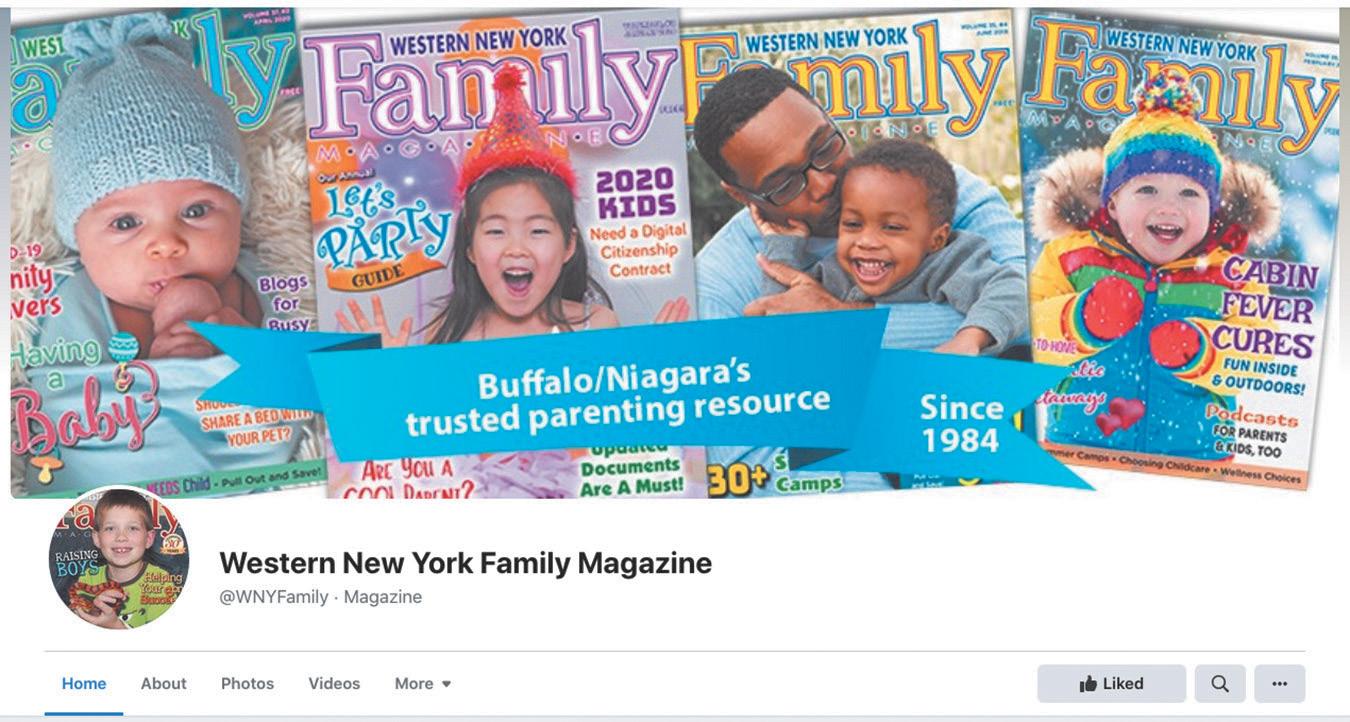
April 2023 WNY Family 57
If not, you’re missing out on great content that’s timely and very relevant to YOU as a WNY parent! our Facebook and Twitter feeds offer DIFFERENT info than our print publication or even our online event calendar. PLUS … www.twitter.com/wnyfamily Be sure you’ve got access to all the latest family fun events, parent tips, and news relevant to moms and dads by liking and following us today! www.facebook.com/wnyfamily
Spring is finally here and Easter excitement is all around. We enjoy hiding eggs, eating pastries and basket treats, elaborate Easter meals, and decorations. But some of these can be dangerous for our cats and dogs. To be sure you all can enjoy the festivities, here are a few tips that will keep the season safe and happy for you and your pets.


Eastertime & Animals
Think twice about giving live animals as gifts.
Remember chicks and baby bunnies quickly grow into adult rabbits and chickens that require lots of attention. Expect 2-3 hours of daily care including regular cleaning, feeding, protection from outdoor predators and, if indoors, possibly from your wonderful dog or cat.
While fresh chicken eggs may seem economical, chicken feed and care likely outweigh egg costs. Rabbits and chickens both require regular veterinary visits. Many areas are not zoned to allow chickens. Check with your local municipality and neighbors first.
Young children often don’t understand how fragile these animals are. Rabbit nails are sharp and chicks can peck. Many new pets and children are injured by each other. About 3/4 of farm animals adopted at Easter end up at animal shelters. It is unethical to let rabbits go. Pet rabbits are different from wild rabbits, just like your dog is not a wolf or coyote. If you bring an animal into your home, you are committing to care for them for life and you must prepare to do so ahead of time.
A stuffed plush animal that can “cuddle” with your child for a long time to come is a much better choice!
Easter flowers can kill your cat.
You’ve received a beautiful Easter plant or floral bouquet. Before showcasing it, what is it? Some can cause serious problems for your pet. For example, Easter (and other) lilies are all highly toxic to cats. Every part of the lily is poisonous. A leaf nibble, licking pollen off paws, and drinking water from the vase can all be fatal. Keep the danger of lilies in mind when planting your garden as well. Don’t bring them in your house if you have a cat or give to others with feline households.
Chocolate and candy – dog no-nos!
Yum — chocolate! You love it and so does your dog. However, your canine eating chocolate will put a damper on your Easter festivities. Chocolate is very dangerous for pets, and the darker the chocolate the more toxic. Chocolate contains theobromine which causes hyperactivity, seizures, elevated heart rate and possibly death in dogs.
Chocolate may be wrapped in foil or plastic wrappers but your pet can smell right through it. The packaging can be just as dangerous as the chocolate, becoming lodged in your pet and requiring surgery to remove.
Keep sugar-free candy and gum away from your pet. The sugar substitute Xylitol in many “sugar-free” candies and baked goods is highly toxic to pets, especially dogs. Even a small amount can cause a steep drop in blood sugar, leading to seizures, and possible coma or death.

58 WNY Family April 2023
THE FAMILY PET
www.NFveterinarysociety.org
Put candy dishes and baskets away when you’re not in the room with your pet.
No Easter basket for your cat.
Easter baskets can be a basket of trouble for your cat. All that shiny, plastic Easter grass is too tempting for most cats. They instinctively want to pounce, play, and eat it. Fake grass is incredibly dangerous to cats and dogs. It can get stuck in their digestive system and intestinal tract and cause damage, often resulting in surgical removal.
Eggs everywhere — hide them from your pet.
Eggs and egg hunts are Easter traditions. Don’t let it be the last one for your pet. Keep your pets away from egg hunts. Count eggs so you can ensure all are collected. Both real and plastic stuffed Easter eggs can be tempting for dogs. Over-eating eggs could cause stomach upset and plastic eggs can get stuck in the intestine and cause damage requiring surgery.
Separate children’s and pet toys.
Dogs and cats can’t tell the difference between their toys and kids’ toys. Stuffed animals and plastic toys can be chewed, swallowed, and slobbered on by your furry friends. Pets can easily swallow plastic, stuffing, or other parts that can cause intestinal blockages. Keep the Easter baskets and toys out of your pet’s reach. Give them their own special Easter toy and crate or gate curious pets away from small objects they can swallow.
Dinner table manners for everyone.
Table scraps can cause stomach issues not to mention obesity and behavior problems. Dogs and cats can develop digestive issues or pancreatitis from fatty foods, such as ham or pork. Remind family and guests to not give any food to pets even if they give you soulful, begging eyes. If they happen to be little beggars, feed them just before you eat. A full tummy may make them less inclined to want your food. It may be easier to kennel the dog for the day or crate them during dinner. Talk to your veterinarian about medication to help your pet relax while company is over if needed. Give
your pet space.
The holidays and spring are an exciting time. Sometimes it’s too much for your pet. If you have lots of festivities planned to celebrate Easter and the season, your pet may need time away from the action. Have a place where they can retreat and relax if needed.

During the Easter season, be sure to keep phone numbers handy for your veterinarian, local emergency clinic and animal poison control 1-888-4264435.

The Niagara Frontier Veterinary Society is comprised of more than 75 small animal hospitals and more than 220 practitioners in Erie and Niagara Counties. It exists to advance public awareness and understanding of proper pet health care, veterinary services, and the veterinary profession.
Whether at home or in the car on a road trip, Would You Rather? questions can strike up some fun conversations .
Here are some QUESTIONS you can


ask your child!
Would you rather stay up late every night or wake up early every morning?
Would you rather live in the city or in the country?
Would you rather be able to meet your favorite book character or meet someone famous from history?

Would you rather be a scientist or an artist?
Would you rather spend the day at the museum of your choice or spend the day at the store of your choice?
April 2023 WNY Family 59
–
*Source
familyeducation.com
ChoicesWellness
What Happens When We Sleep…
And Why We Need Just the Right Amount Each Night
— by Laura Williamson, American Heart Association
Research shows adults need seven to nine hours of sleep each night for optimal health, and children need more.

But what’s happening during those hours that’s so important, and what’s the danger of cutting sleep short?
A growing body of research shows getting little or poor sleep doesn’t just make people feel tired the next day — it places them at higher risk for heart attacks and early death, along with cognitive decline, dementia, diabetes, high blood pressure, obesity, depression, and other chronic health conditions.
There’s so much evidence linking poor sleep to poor health that the American Heart Association (AHA) last year added sleep duration to its list of critical components for optimizing heart and brain health.

Yet about 1 in 3 adults don’t get enough. Experts say shaving a couple of
hours robs the brain of time it needs to perform vital functions.
“There’s lots of stuff that happens during sleep,” said Dr. Michael Grandner, director of the Sleep and Health Research Program and an associate professor in the department of psychiatry at the University of Arizona College of Medicine in Tucson. “When your body doesn’t have enough time to do the things it needs to do, it won’t do them in an optimal way.”
Grandner co-wrote the 2022 advisory that added sleep duration to AHA’s list of key measures for good cardiovascular health, known as “Life’s Essential 8.”
While researchers are still investigating how suboptimal sleep affects the mechanisms linked to cardiovascular health, Grandner said much is known about other functions that occur during the major stages of sleep.
The first few hours of sleep are the deepest, he said. It’s during this time that the body performs tissue growth and repair, allowing healing and restoration to occur. It’s also the time when the brain clears away stuff it doesn’t need, making room for the stuff it does need. The space between neurons gets a little wider, allowing the brain to flush out waste products.
“This is synaptic pruning, when the brain filters out the junk experiences of the day, the stuff you don’t need to learn from long-term,” Grandner said.
Deep sleep is followed by rapid eye movement, also known as REM sleep, which is lighter. The brain is active during this stage, but the body is immobile. This is when dreams and nightmares occur, Grandner said. The body actually cycles through REM and non-REM cycles several times, with increasingly longer periods in REM sleep as the night goes on.
“If you cut your sleep hours short, most of what you’ve deprived yourself of is REM sleep,” he said. That can interfere with learning, memory and mood, which are all regulated during this stage of sleep. Studies show people who are deprived of REM sleep have trouble remembering things they learned before falling asleep.
The last stage of sleep is when more mental recovery and healing occur, Grandner said. But it’s also when the body finishes the physical recovery work begun during deep sleep.

60 WNY Family April 2023
Grandner likened it to power washing a driveway and then re-sealing it to preserve it for continued good use. “The first stage of sleep is when the power washing occurs. The last stage is when resealing occurs. Waking up before the last stage of work cuts corners that can cause problems in the long-term health of the body and brain,” he said.
Children and teenagers need more hours because they are still growing, and sleep is when growth hormones are released, Grandner said. The AHA recommends children ages five and younger get 10 to 16 hours of sleep each day; those six to 12 get between nine and 12 hours; and teens get eight to 10 hours.
Luckily, there are steps people can take to get a better night’s sleep, said Dayna Johnson, an assistant professor and sleep epidemiologist at Emory University’s Rollins School of Public Health in Atlanta. “Engaging in good sleep hygiene or sleep practices can help to improve sleep. It is important to foster a good sleep environment.”
This includes having a consistent bedtime and bedtime rou-
How Much Sleep Do Kids Need?
How much sleep kids need varies by age. While every child is different, experts recommend:

• infants (0–3 months): 14–17 hours, including naps
• infants (4–12 months: 12–16 hours, including naps

• toddlers (1–2 years): 11–14 hours, including naps
• preschool (3–5 years): 10–13 hours, including naps
• school-age (6–13 years): 9–12 hours
• teens (14–17 years): 8–10 hours
How Can I Tell if My Child Isn’t Getting Enough Sleep?
A child who isn’t getting enough sleep may:
• fall asleep during the day
• be hyperactive (especially younger children)
• have trouble paying attention
• struggle with school work
• be cranky, whiny, irritable, or moody
• have behavior problems
tine, sleeping in a dark, quiet room at a comfortable temperature and keeping electronic devices, such as televisions, phones and computers, out of the bedroom.
But there are other factors that can affect sleep that may be beyond a person’s control, Johnson said. And that’s where sleep health disparities creep in.
For example, lowerincome neighborhoods have more noise and light, which can disrupt sleep. Neighborhoods with higher levels of air pollution are associated with greater inflammation, which can lead to sleep apnea, making it difficult to get a good night’s rest. And people who work minimum-wage jobs and therefore work multiple jobs or jobs with rotating shifts may find it harder to develop regular sleep patterns, she said.
Johnson, who studies sleep health disparities, led a 2019 review of a large body of research summarizing racial and ethnic differences in sleep duration and quality. It found, for example, that Black, Hispanic, and Chinese adults were disproportionately more likely to get less than six hours of sleep each night and more likely to report poor sleep quality.
As it does in cardiovascular health, structural racism may also play a role. Structural racism has been shown to affect neighborhood environments, leading to problems such as poorer air quality and housing. Additionally, Black people with higher education, higher-paying jobs, and reside in better neighborhoods have been shown to have poorer sleep health than their white peers, Johnson said.

“The determinants of sleep disparities are multifactorial, and the worse sleep among higher socioeconomic status Black adults may be due to increased exposure to racism/stress from being a minority in the workplace or neighborhood,” she said. “There are many reasons someone may have poor sleep.”

April 2023 WNY Family 61
WNY’s Premier Memory Care Assisted Living Community SCAN TO VIEW WEBSITE AND SERVICES POST A REVIEW FOR US 8820 TRANSIT ROAD | EAST AMHERST, NY 14051 716-293-2894 | JUNIPERGLENRET.COM *Family must claim special on the 1st call or tour. Residency must be a period of (3) months to receive incentive. $ 500 OFF YOUR FOURTH MONTH* Call 716-293-2894 for a personal tour, and register to WIN a FREE DINNER FOR TWO (A $75 VALUE)
My nephew’s favorite pie is just about any cream pie, one of many things we have in common. Multiple food allergies made it more challenging to figure out how to make a delicious vegan cream pie, but we did. It’s not just an alternate way to make cream pie, we think it is an improvement. This Easter, we’ll be enjoying banana cream pie and coconut cream pie — easy, allergy free, and delicious!
A few ideas:
If you are not allergic to the ingredients and prefer a store-bought pie crust, there are vegan and gluten free options in the freezer section.

If you prefer not to use boxed pudding mix, we’ve also included a made from scratch pudding recipe
Lard is a traditional ingredient in pie crusts; it is NOT vegan.
Vegetable based shortening usually contains soy. There are many soy free versions now readily available, including Spectrum Organic Shortening, made from palm oil.
Vegan whipped cream? Yes, there is such a thing! You’ll find several options in local markets, some in the freezer section. Read labels for your allergens. Some of the options: Rich Whip Non-Dairy Topping, So Delicious Coco Whip, TruWhip Vegan, 365 Plant-Based Whipped Topping (a Whole Foods Market brand), Silk Dairy-Free Heavy Whipping Cream, Nature’s Charm Coconut Whipping Cream.
• When topping a pie or cake, do NOT use the canned varieties — they’re not meant to hold up for long and will become runny.
Pie Crust
Free of: DAIRY, EGGS, SOY, PEANUTS, TREE NUTS, FISH, SHELLFISH, WHEAT, GLUTEN, VEGAN
Yield: 8 servings, 1 pie crust (double the ingredients to make 2 pie crusts)
Prep Time: 10 minutes
Cook Time: 13-16 minutes
1 1/3 cups flour (regular or wheat/gluten free flour)
2 teaspoons sugar
1/2 teaspoon salt
1/2 cup soy free shortening
3-5 Tablespoons ice cold water
In a medium bowl, combine dry ingredients. Cut in shortening (use a pastry blender or two forks) until it resembles coarse crumbs. Add 3 Tablespoons ice water, stir gently with a fork. Add more
water GRADUALLY, just enough to make the dough hold together. Don’t over handle the dough or it won’t be flaky and tender.
Roll the dough into a ball, flatten into a round disk and wrap in plastic. Refrigerate for about 30 minutes. That’s to make it easier to work with.
On a floured surface, roll out the dough into a circle that is about 2” wider than your pie plate. Transfer crust to ungreased pie plate. To keep the dough from puffing up when baking, use a fork and prick the bottom and sides of the dough. Bake in a 400° oven for about 13-16 minutes, until edges and the bottom are golden. Remove from oven; cool completely before filling.
If you have any questions about our column, e-mail Kathy at allergy@roadrunner.com. For further information about food allergies, contact FARE www. foodallergy.org, or call 1-800-929-4040.
Kathy Lundquist is a Western New York parent whose son, now an adult, was born with severe food allergies. Over the last two decades, she has worked tirelessly, in a variety of capacities, to increase community awareness about food allergies.
Pudding / Pie Filling
Free of: DAIRY, EGGS, SOY, PEANUTS, TREE NUTS, FISH, SHELLFISH, WHEAT, GLUTEN, VEGAN
Yield: 8 servings
Prep Time: 15 minutes
Cook Time: 15 minutes
Refrigeration Time: 3 hours or longer to set completely
2 small boxes cook & serve pudding mix** (NOT instant, read for allergens)
4 cups dairy free milk of your choice
1 teaspoon allergen free margarine* (or canola oil)
In a medium pan, over medium heat, stir together pudding and milk. Stir continually until it comes to a rolling boil. Remove from heat, stir in the margarine (*this helps fat free milk substitutes thicken). Cool for 10 minutes, stirring occasionally. Pour into cooled, baked pie crust. Refrigerate until fully cooled and thickened. Optionally top with vegan whipped topping.
Coconut cream pie - stir 1 cup shredded coconut into vanilla pudding. Use coconut milk for even more coconut flavor.
Banana cream pie - layer banana slices into bottom of cooked pie crust, top with half the cooled banana pudding, add more slices, top with remainder of pudding.
Homemade pudding mix**
6 tablespoons cornstarch
2/3 cup sugar
1 teaspoon vanilla
1/4 teaspoon salt
For chocolate pudding, add 1/3 cup cocoa powder
62 WNY Family April 2023
THE KIDDIE GOUR ME T
W— by Barbara Blackburn Parkside Meadow Restaurant
e know that Mary had a little lamb, and now we know that we can enjoy — at the table — a little lamb at Parkside Meadow, in an old Buffalo museum setting. The kids’ menu is simple: Grilled Cheese or Chicken Tenders or Kid’s Burger with fries or chips ($8.99). The evening we were present, families with kids were there. The staff supplied them with coloring sheets and crayons. Of course, there are always alternatives on the regular menu, particularly the appetizers, which often come garnished.
2 Russell Street Buffalo, NY 14214
716-834-8348
parksidemeadow.com
~ SPOONS ~ FOOD 4.5/5
SERVICE 4/5
FAMILY FRIENDLY 4/5
than they are on the menu, according to the internet. As is commonly said today, ‘No problem!”
Menu categories include traditional Buffalo favorites, one being Fried Baloney, thick cut with sauteed onions on a Kaiser roll with Weber’s Mustard on the side ($10.99).
Classic Caesar Salad ($11.99), along with several other salads, rounds out the greenery. You can have anchovies on request. To me, an anchovy afficionada, anchovies always should be a quintessential ingredient of this salad, which was once often prepared tableside.
and Friday Fish Fry ($15.99).
Parkside can brag about their Roasted Portabello Mushroom Pasta ($15.99), pasta tossed in EVOO and garlic and topped with mushrooms, roasted red peppers, and Parmesan cheese, served with garlic toast. You might finish Lent with this meatless wonder.
Desserts? Three were on board that night: Carrot Cake, Peanut Butter Cheesecake, and Key Lime Pie, all not on the menu. Our favorite was the Key Lime. As a side note, when we ate at the original site in Florida, in the Keys, the crust was fashioned with graham crackers, when I had previously thought it would be a pastry crust.
For lamb at its best and a host of other dishes done with a blend of Grandma’s kitchen and restaurant creativity, go to the Meadow, Parkside Meadow that is.
The Shaved Lamb Melt Sandwich ($16.99) has quite a reputation in the area. Slow-roasted shaved lamb with melted Havarti on grilled sourdough bread, and spearmint aioli is at its best. As the Campbell Soup kids would say, it’s “ M’m, M’m Good!”
Dad was enamored with his Meatloaf Piazza. The Housemade Meatloaf with house BBQ sauce, pepperoncini, and provolone was excellent. The late Mike Piazza from the Arkansas Lounge on Grant Street inspired the sandwich selection ($14.99), The Mike Piazza. This throwback creation relies on spicy capicola on French garlic bread, with pepperoncini, provolone, and housemade BBQ sauce.
As an entree and not a sandwich, Mom’s Meat Loaf ($16.99) is described as house made pork/beef blend, served with mashed potatoes and vegetable. The vegetable choice was green beans, done to perfection, not too soft and not too al dente, with a beautiful green glow. Instead of that we could have had French fries or homemade chips. Since I had the chips, which were delectable, we chose the healthier choice. I might add here that prices might be a tad different
Fish lovers will find an assortment of three styles of Haddock ($15.99) and a Fish Burrito ($12.99), plus a Thursday
Barbara Blackburn enjoys positive comments from readers. You can reach her at barbaralan@juno.com
April 2023 WNY Family 63
2023
Issue This special pull-out section will showcase museums, attractions, festivals, getaways and much more to tens of thousands of parents searching for the perfect Summer activities and destinations for their families! Contact your account rep directly or call 836-3486 for more info. Space Reservation Deadline: Wednesday, May 10, 2023 In Print and Online! Receive a FREE PROFILE & FREE COLOR when you reserve your ad. SummerGo! Guide
Coming Up In Our June

64










































































































































































































































































































































































































































































































































































































































































































































 – by Shannon Carpenter
– by Shannon Carpenter













































































































































